The Unofficial Guide To Real Estate Investing

Unofficial
Guide
®
the
to
Real Estate
Investing
Second Edition
Spencer Strauss
and Martin Stone

Unofficial
Guide
®
the
to
Real Estate
Investing
Second Edition
Spencer Strauss
and Martin Stone
Copyright © 2003 by Wiley Publishing, Inc. All rights reserved.
Published by Wiley Publishing, Inc., Hoboken, NJ
No part of this publication may be reproduced, stored in a retrieval system or trans-
mitted in any form or by any means, electronic, mechanical, photocopying, recording,
scanning or otherwise, except as permitted under Sections 107 or 108 of the 1976
United States Copyright Act, without either the prior written permission of the
Publisher, or authorization through payment of the appropriate per-copy fee to the
Copyright Clearance Center, 222 Rosewood Drive, Danvers, MA 01923, (978) 750-8400,
fax (978) 646-8700. Requests to the Publisher for permission should be addressed to
the Legal Department, Wiley Publishing, Inc., 10475 Crosspoint Blvd., Indianapolis, IN
46256, (317) 572-3447, fax (317) 572-4447, E-mail: permcoordinator@wiley.com.
Trademarks: Wiley and the Wiley Publishing logo are trademarks or registered trade-
marks of Wiley Publishing, Inc., in the United States and other countries, and may
not be used without written permission. All other trademarks are the property of their
respective owners. Wiley Publishing, Inc., is not associated with any product or ven-
dor mentioned in this book.
Limit of Liability/Disclaimer of Warranty: While the publisher and author have used
their best efforts in preparing this book, they make no representations or warranties
with respect to the accuracy or completeness of the contents of this book and specif-
ically disclaim any implied warranties of merchantability or fitness for a particular
purpose. No warranty may be created or extended by sales representatives or written
sales materials. The advice and strategies contained herein may not be suitable for
your situation. You should consult with a professional where appropriate. Neither
the publisher nor author shall be liable for any loss of profit or any other commercial
damages, including but not limited to special, incidental, consequential, or other
damages.
For general information on our other products and services or to obtain technical sup-
port please contact our Customer Care Department within the U.S. at 800-762-2974,
outside the U.S. at 317-572-3993 or fax 317-572-4002.
Wiley also publishes its books in a variety of electronic formats. Some content that
appears in print may not be available in electronic books.
Cataloguing in Publication information available from the Library of Congress.
ISBN: 0-7645-3709-1
Manufactured in the United States of America
10 9 8 7 6 5 4 3 2 1
Second Edition
Book design by Lissa Auciello-Brogan
Cover design by Wendy Mount
Page creation by Wiley Publishing, Inc. Composition Services
Spencer Strauss dedicates this book to Marty Stone for his
friendship and never-ending support and to his late father
Marty Strauss: “Dad, today I am a fountain pen.”
Martin Stone dedicates this book to his wife Lori for her love
and encouragement and to his longtime teacher, mentor,
and friend Jack Buckingham.
Acknowledgments
W
e would like to thank all the fantastic people at Wiley
Publishing, Inc., who made this book possible: most
notably Kathy Nebenhaus, Keith Covington, Suzanne
Snyder, and the remarkable Roxane Cerda. Thank you all for
your commitment to this book and making our job easy.
We also would like to acknowledge the staff at Hungry Minds
who worked so hard on the first edition, including, Matthew X.
Kiernan, Randy Ladenheim-Gil, Jessica Faust, Jennifer Perillo,
Brice Gosnell, Faunette Johnston, Georgette Blau, William
Bronchick, Warren Ladenheim, Ed Stevens, and Amy Lepore.
Finally, we owe a debt of gratitude to the following people,
without whom we wouldn’t have been able to write this book:
Steven D. Strauss, Lori Stone, Sheree Bykofsky, Blake Mitchell,
Chris Stone, Sandi Strauss, Larry Strauss, Maria Strauss,
Jillian Lewis, Kirk and Leslie Melton, Aaron Cook, Adam Cook,
Hans Harder, Ben Walton, Jay Treat, Shelly Stone, James
Waedekin, Ned Mansour, Jim Frings, Marianne Choy, Michael
B. Moynahan, Kerry and Mia Daveline, Glenn Bozarth and
Seymour Fagan. Thanks to all of you for your support.

Contents
v
About the Authors ...............................................xi
Introduction .....................................................xiii
I Understanding Real Estate
As an Investment...............................1
1 Planting the Seed .....................................3
A new world order ......................................4
Investing versus speculating .......................7
Taking a chance .......................................10
The roots of lending .................................11
Great government subsidies .......................13
Leveraged compound interest .....................16
Just the facts ..........................................19
2 The Process and the Plan ........................21
Short-term profits ....................................22
Middle-years payoffs .................................24
The retirement years .................................30
A systematic approach to investing ............31
Just the facts ..........................................40
II The Secrets of Real Estate Investing ...41
3 Elements of Return .................................43
333 Richmond Street ................................44
Cash flow ................................................45
Equity growth from loan reduction ..............49
Equity growth from appreciation .................50
Tax shelter benefits ..................................56

vi
CONTENTS
Modified Accelerated Cost Recovery System...58
Calculating the return ...............................60
Just the facts ..........................................63
4 Appraising Like an Appraiser ..................65
Methods of valuing property ......................66
A summary of value ..................................81
The gross rent multiplier ...........................82
Finding hidden value ................................85
Highest and best use ................................87
Just the facts ..........................................88
5 Borrowing Big Bucks ...............................91
Show me the money .................................92
Locating a lender .....................................94
The conventional route .............................98
Fixed-rate mortgages ..............................103
Adjustable-rate mortgages (ARMs) ............104
Assumable loans .....................................112
Private-party financing ............................113
Hard money loans ...................................118
And most important ................................119
Just the facts ........................................119
III Mastering the Market .....................121
6 Real Estate, the Economy, and Your
Target Market .......................................123
The big picture .......................................124
Regional economic trends ........................125
Your target market ..................................130
Researching local markets ........................135
The “comfort zone” .................................141
Just the facts ........................................141
7 Subdividing Your Options ......................143
Land ho! ...............................................144
Condominiums ........................................148
Single-family homes ................................149

vii
CONTENTS
Vacation homes ......................................156
Two- to four-unit properties .....................157
Five units and up ...................................160
Big apartment buildings ..........................161
Commercial and industrial properties .........163
Just the facts ........................................166
8 Tricks of the Trade ................................167
The fixer-upper ......................................168
Management fixer-uppers .........................173
Bank-owned properties ............................178
Short sales ............................................184
Low- or no-down deals ............................187
A word of caution ...................................189
Just the facts ........................................189
IV Setting Your Investment Goals ........191
9 Building an Investment Plan .................193
Good intentions versus planning ...............194
Writing a winning investment plan ............195
Section 1: Your long-term
investment goals ....................................196
Section 2: Determining your general plan ...202
Section 3: Establishing a detailed plan ......208
Section 4: Follow-up and goal review ........215
Just the facts ........................................217
10 Planning for the Tax Man ......................219
Deductions, deductions, and more
deductions .............................................220
Limitations on deductions ........................223
Calculating capital gain ...........................225
The 1031 exchange .................................227
Three categories of exchanges ..................228
The installment sale ................................235
Refinancing your loan .............................238
A tax lesson summary .............................240
Just the facts ........................................241

viii
CONTENTS
V Putting Your Money on the Line......243
11 Purchasing Your Investment ..................245
Real estate professionals .........................246
Paying your agent ..................................250
Comparing apples to apples .....................251
Determining a seller’s motivation ..............252
Writing an offer .....................................255
The good-faith deposit ............................260
Specific performance ...............................261
Presenting an offer .................................262
Just the facts ........................................265
12 The Due Diligence Period ......................267
Due diligence and contingencies ...............268
Requesting repairs ..................................270
The magic word ......................................271
Inspecting the units ...............................273
Seller’s warranty and maintenance
responsibility .........................................278
Inspecting the books, records,
and rental agreements .............................280
Verification of terms ...............................281
Changes during escrow ............................283
Financing and appraisal contingencies .......284
Obtaining clear title ...............................286
Other contingencies ................................287
Removing contingencies ..........................288
Just the facts ........................................289
VI Property Management Essentials .....291
13 Managing the Tenants ...........................293
Meet and greet .......................................293
Neighborhood watch ...............................298
Giving over the reigns of control .............299
Losing tenants .......................................300
Filling vacancies .....................................301

ix
CONTENTS
“Rent-ready” apartments ..........................306
Discrimination ........................................307
Rental agreements ..................................308
Help from Uncle Sam ...............................310
We say yes to pets! ................................311
Keeping tenants happy ............................313
Raising rent ...........................................317
Just the facts ........................................318
14 Managing the Expenses .........................319
How the property runs .............................320
Keeping the books ..................................322
Controlling expenses ...............................325
Fixed expenses .......................................326
Variable expenses ...................................330
Master-metered properties .......................338
High-cost capital expenses ......................339
Handling tenant turnovers .......................341
Just the facts ........................................342
15 The Big Picture of Management .............343
Curb appeal ...........................................343
Your management team ...........................352
Professional property management ............356
Upgrading the interiors ...........................360
Just the facts ........................................368
VII Facing Your Fears ...........................369
16 So What’s Stopping You? .......................371
Fear of negative cash flow .......................372
Fear that this isn’t the
“right time” to invest .............................377
Fear of losing your money ........................379
Fear of tenant and management hassles .....381
Fear of bad and low-income areas .............382
Fear of rocking the boat ..........................384
Fearing fear itself ...................................386

x
CONTENTS
The plan of attack ..................................388
Adieu, adieu ..........................................389
Just the facts ........................................389
A Glossary ...............................................391
B National Apartment Association
Locales—Listed by State .......................407
C Recommended Reading List ...................441
D Sample Real Estate Investment Plan ......443
E Inspection Report..................................457
Index....................................................477

About the Authors
xi
Spencer Strauss makes his living as an associate real
estate broker working side by side with his writing
partner, Martin Stone. In that capacity, Spencer has
bought, sold, traded, and managed countless build-
ings and has helped scores of investors get their start
in real estate. Besides the Unofficial Guide to Real Estate
Investing, Spencer also co-authored Secure Your
Financial Future Investing in Real Estate (Dearborn
Trade Publishing, 2003). He has been featured on
television on KABC’s Eyewitness News, as well as on
radio stations KFI, KLAC, and KABC, all in Southern
California. Additionally, Spencer’s analysis has been
featured in USA Today, the New York Post, the Chicago
Tribune, the Long Beach Press Telegram, and the Los
Angeles Times. For a free audio cassette on real estate
investing, you can contact him via e-mail at spence@
spencerstrauss.com.
Martin Stone has been a successful real estate broker
and investor for over 30 years. A graduate of USC
with a degree in finance, Marty has built more than
50 multifamily apartment buildings, commercial
properties, and single-family homes throughout his
career. He has also managed more than 1,000 units
and written and lectured extensively about all areas
related to real property. Marty is the owner/broker
of Buckingham Real Estate Investments and
Richmond Financial Services in El Segundo,
California. Besides this book, he coauthored Secure
Your Financial Future Investing in Real Estate
(Dearborn Trade Publishing, 2003). Feel free to con-
tact Marty by e-mail at gr8profit@aol.com, or visit the
office Web site at www.buckinghaminvestments.com.

Introduction
xiii
Whether you are a novice real estate investor or a
seasoned pro, the Unofficial Guide to Real Estate
Investing, Second Edition, is a guide that will help
you prosper faster and easier. Notice that we didn’t
say “fast and easy.” This is because anyone who
promises that they will help you get rich fast and easy
by investing in real estate isn’t telling you the truth.
Real estate by nature is not a get-rich-quick invest-
ment. Rather, it’s a long-term proposition — a
proposition, however, that can pay off beyond your
wildest expectations if you’re willing to put in the
time.
So from the get-go, here is our promise to you: If
you make the effort to read and understand this
book, we will impart to you a money-making method-
ology that works, period. A baker uses a bread recipe
to create the same loaf time and again. In fact, if you
think about it, that’s probably why money is called
“dough.” You too need a good money-making recipe
to create your dough. Now you have found it. In this
book we will share the same recipe that countless
people through the ages have used to create their
dough. Follow the recipe, and you too will get the
same result.
Since the first edition of the Unofficial Guide to
Real Estate Investing was published in January 2000,
the real estate market in America has risen sure and
steady. In that time, countless Americans who have
taken a risk and invested in property have sown the
seeds of an abundant tomorrow for themselves and
their families. What’s more, they have done it in a
world and an economy that has been anything but

xiv
INTRODUCTION
certain. As anyone who has been paying attention to the news
over the past few years readily knows, what many of us thought
was safe and secure — for ourselves, our families, and our
futures — is now anything but.
For survival in this new world, a new way of thinking has
taken hold. Americans have realized that when it comes to the
safety of our nest eggs, the only person any of us can really rely
on is ourselves. It is no secret to anyone that the global economy
has seen its share of turmoil over the past several years. It
appears as though we have corrected our own course, and now
with the twenty-first century upon us, the rest of the world looks
like it will follow suit. This economic downturn taught us a lot,
specifically about the problems that come with rapid growth,
business overhead, the effects of inflation, and a host of other
basic business principles that somehow got lost over the years.
To right our ship, we were forced to rethink our way of doing
business.
Looking back at the early 1990s, one of the industries that
suffered mightily was real estate. We could devote the next 375
pages to a discussion of whether the economy caused the prob-
lems in the industry or vice versa. Instead, we choose to believe
that the real estate industry fell prey to the same excesses as the
rest of the economy. That is, when the tough times hit, owners
who weren’t invested based on sound economic principles sim-
ply couldn’t stay afloat, causing a domino effect. In a short span
of time, a lot of real estate owners became statistics, just as a host
of other business owners did.
Since the market began turning the corner in the middle
’90s, we have experienced some of the longest growth in
America’s history. In fact, many experts are referring to this as a
“golden era.” Federal Reserve Chairman Alan Greenspan was
quoted as saying, “I don’t recall as good an underlying base for
the long-term outlook . . . in the last two or three decades.” Part
of the reason for our country’s success is that we have cut the fat
and gone back to the basic principles of running our country
like a profitable business. Energetic entrepreneurs who still
believe in the American dream are opening up shop again all
over the country. These new businesses are lean and mean and
are ones in which everyone pulls his or her own weight.
As we have recently learned, many of the young entrepre-
neurs that have come out of the golden era have a great ability

xv
INTRODUCTION
to attract capital to their ideas. But, even great ideas sometimes
fail to produce a profit. The collapse of WorldCom, other high
tech ventures, and the dotcom bubble in general, all point to
the necessity to invest in proven investment vehicles.
Thankfully, real estate investing has proven itself as a winner
year after year after year.
In fact, as long as anyone can remember, experts have
agreed that investing in real estate is the best and safest bet you
can make. Today, the market has grown to like all the attention
it’s getting. A recent article in USA Today said, “Not since the
1960s has the housing market been so uniformly strong across
the USA.” The article added that “the market is largely devoid
of extremes,” and “today’s hot markets can be found in all
regions of the country.” In January 2003, existing single-family
home sales climbed more than 3 percent over 2002, which had
set the previous record. David Lereah, the chief economist for
the National Association of Realtors
®
, gave credit to lower inter-
est rates and the fact that, “real estate has become the safe
haven for investment.” As long as this investment is looked
upon as a long-term wealth builder and not a fly-by-night get-
rich scheme, investors will make out great.
To that end, the goal of this guide is to highlight the legiti-
mate business side of real estate. Because real estate is a cyclical
commodity, it’s possible to get caught investing with your pants
down — just as a host of other get-rich-quick hopefuls have
done through the years. In contrast, our belief is that if you
approach real estate as a business and use sound business prin-
ciples in running and investing in it, the probability of failure is
minimal.
Here you will learn the differences between legitimate real
estate investing and speculative ventures. The profits generated
by speculating on foreclosures and zero-money-down deals
seem to get the most press, but we feel this kind of investing
should be undertaken only after you have gained some good
hands-on experience. Even a beginner, however, can combine
the sound principles of compound interest and leverage and
generate exceptional returns over the long run without taking
any undue risk at all.
Here’s a quick illustration of the goldmine that’s available if
you’re willing to be patient: A modest 2 percent growth rate in
value translates to a 20 percent return on a property purchased

xvi
INTRODUCTION
with just a 10 percent down payment. That’s right, a 20 percent
return. When it comes to work, most of us slave away for 25 or
30 years to receive a small retirement package and a token gift
at the finish line. Conversely, if you were to invest $30,000 and
were able to maintain a 20 percent return for that same period
of time, due to the combination of compound interest and
leverage, your initial investment would be worth well over two
million dollars — two million dollars!
You see, real estate is a rare investment vehicle. For starters,
it can provide you with a place to live while it’s working as an
investment. What’s more, this investment offers several kinds of
return including cash flow, equity growth from loan payoffs,
equity growth from appreciation, and great tax benefits. How
does $250,000 of tax-free profit sound? Probably pretty good.
Well, a new twist in the tax laws allows homeowners that exact
benefit. (We promise to tell you more about it in Chapter 7,
“Subdividing Your Options.”)
How about what value appreciation can do for you? Rone
Tempest wrote an article for the Los Angeles Times about urban
renewal in Beijing. There, the Chinese were being forced to
raze the old buildings because land prices had escalated to a
whopping $6,000 per square meter. That translates to more
than $24 million per acre. The question then is, if it can happen
in Beijing, why not here? You may not live to see those kinds of
prices, but you can still make a fortune by simply taking advan-
tage of the modest value appreciation that takes place in your
own area. We’ll show you how.
We’ll also devote some of our writing to a few key economic
principles that affect real estate investing. This might seem like
a foreign language lesson as you try to understand how this can
impact your need to buy your first modest three- or four-unit
building. That’s understandable, but come back to these princi-
ples after a few years of ownership. Chances are they’ll mean
more to you then. Understanding how real estate fits into the
overall picture of the economy will help your profits multiply in
the long run.
A large portion of this guide is dedicated to teaching you
some of the hard-earned lessons from our years of experience
in this business. In Part VI, “Property Management Essentials,”
we have outlined many property-management techniques that
will allow you to start your career head and shoulders above

xvii
INTRODUCTION
most of your competition. These principles should help you get
your career off on the right foot and should give you the foun-
dation to ask the important questions of the professionals you
seek out for assistance.
Above all, our most important message will be to make a
plan and then to simply work your plan to achieve your goals.
Planning is a common principle for every successful business,
but it is sorely lacking when it comes to real estate. You don’t
have to be Donald Trump or Ted Turner to need a plan. A plan
simply gives you the opportunity to catch up to (and eventually
pass) them.
For many of you, retirement investments in real estate might
be the salvation of your retirement. The recent debacles of com-
pany pension plans like those of Enron and WorldCom only
prove the point that it’s time for you to take charge of your own
future. If you don’t, it’s possible that you will helplessly watch
your 401(k) account, company pension plan, and Social
Security dwindle until they offer you little to help you survive in
your later years. To that end, we implore you to make your real
estate investments the centerpiece of your retirement plan.
Finally, beyond reading this guide, we encourage you to con-
tinue to educate yourself about this business. A separate book
could be written about every section in this guide. Some are
listed in Appendix C, “Recommended Reading List.” Find and
read them with a keen eye. Never stop your search for knowl-
edge. We know that if you learn the business of real estate,
believe in your abilities, enjoy the adventure, and take a risk
every now and then, real estate investing is the best and safest
field for you to make phenomenal profits.
Now, go grab a yellow highlighter pen and start reading.
Spencer Strauss Martin Stone

xviii
INTRODUCTION
Special Features
Every book in the Unofficial Guide series offers the following
four special sidebars that are devised to help you get things
done cheaply, efficiently, and smartly.
1. Moneysaver: Tips and shortcuts that will help you save
money.
2. Watch Out!: Cautions and warnings to help you avoid
common pitfalls.
3. Bright Idea: Smart or innovative ways to do something; in
many cases, the ideas listed here will help you save time or
hassle.
4. Quote: Anecdotes from real people who are willing to
share their experiences and insights.
We also recognize your need to have quick information at your
fingertips, and have provided the following comprehensive sec-
tions at the back of the book:
1. Glossary: Definitions of complicated terminology and
jargon.
2. Resource Guide: Lists of relevant agencies, associations,
institutions, Web sites, and so on.
3. Recommended Reading List: Suggested titles that can help
you get more in-depth information on related topics.
4. Important Documents: “Official” pieces of information
you need to refer to, such as government forms.
5. Important Statistics: Facts and numbers presented at-a-
glance for easy reference.
6. Index

PART I
Understanding Real Estate
As an Investment


Chapter 1
3
GET THE SCOOP ON...
Why living and working in the 2000s requires a
new way of thinking
■
The reasons working for
others will always be a dead-end job
■
The dif-
ference between speculation and investing
■
How the government becomes your best friend
and partner in investing
■
The beauty of com-
pound interest and leverage
■
Creating wealth
using other people’s money
Planting the Seed
C
ongratulations! Today your life has changed.
By buying and reading this book, you have
taken the first step toward making your dreams
come true. As any successful real estate investor
knows, buying, owning, trading, and selling invest-
ment properties are the surest and smartest ways to
prosper. It doesn’t matter what your long-term goal
is; whether it be to finance your children’s educa-
tion, save for retirement, or eventually quit your day
job, investing in real estate offers a realistic, tried-
and-true way of getting ahead—way ahead.
It is also a good use of your time. In fact, one of
our goals in this book, aside from showing you how
to use real estate to change your life, is to respect
your time. The novice, uninformed investor can
make mistakes that cost time and money. By educat-
ing yourself from the onset, chances are good that
you’ll be able to avoid many pitfalls. Our plan is to

4
PART I
■
UNDERSTANDING REAL ESTATE AS AN INVESTMENT
cut years off your learning curve by sharing the things we have
learned the hard way. This way you will prosper quicker, and
with less effort.
But we won’t promise that it will be easy or effortless. You
are not going to be led to believe that buying and flipping dis-
tressed properties or placing tiny classified ads in the newspaper
is going to make you rich. No, what we are offering here is the
chance to learn the same proven methods of success that all
prudent real estate investors use to get ahead. Let there be no
doubt; it takes work. But it is a system that works. Think of it like
a recipe. A chef uses the same recipe time and again to get the
same result. Well, here, we want to teach you a real-world,
money-making recipe. Learn it and reap the rewards of a more
abundant future.
A new world order
Now that we are well into the 2000s, we are living in an era of
rapid change. In fact, our world is changing at a faster pace than
ever before in human history. This kind of comment surely has
been made before, but most of us don’t stop to consider the
impact these changes might have on us. Think about Mr. Spock
from Star Trek; he would envy our cell phones. He could only use
his communicator to talk to others; we, on the other hand, can
talk on our cell phones, see the face of the person we are talk-
ing to, and even use our cell phone to check our e-mail.
What about the computer? Back in the early 1970s, it used
punch cards, and the computer itself took up an entire room
that needed to be air-conditioned. Today, a computer with
umpteen times the capacity of that 1970’s machine weighs less
than two pounds and can easily fit into a small briefcase. Sadly,
due to the effectiveness that computers bring to the working
world, most of the lower-level jobs of the 1970s are gone. Today,
in some companies, the lunch-box worker has been left out in
the cold, and computers handle the lion’s share of the work.
These changes should be an eye-opener for everybody.

5
CHAPTER 1
■
PLANTING THE SEED
In order to preserve our futures, many of us have stood stub-
bornly firm in the belief that the best way to eliminate risk is to
put in a lifetime of service at a good job. Our idea has been
to get in at 8:00 a.m., work diligently without complaint until
5:00 p.m., and then do it again tomorrow. In fact, our hope was
that we could do this week after week and year after year, ulti-
mately punching the same clock for the next 30 or 40 years.
During our parents’ day, this strategy worked. You decided
on a career, got an education, and then found a company to call
home until your retirement. It was a job. It became part of your
social life, and your years of
loyal service were rewarded
at the finish line with a gold
watch and a satisfactory
retirement package. Not any-
more. With rapid change,
the old ways are gone—in
fact, long gone. How many
engineers have lost their
good, high-paying jobs when
changes in technology over
the last 20 years made their expertise outdated? We recently
spoke to a woman with 25 years in the computer industry who
couldn’t find work. Her experience in DOS was a language that
few industries still use.
It’s now survival of the fittest
Today, lean and mean is the way companies survive.
Unfortunately, these new rules apply to you now, too. You will
need to be financially smarter than workers who came before you.
This is because the job security they enjoyed isn’t available any-
more. What’s more, with the stock market tumble that occurred in
the early 2000s, too many of us have seen our retirement slip fur-
ther and further away. The same goes for inappropriately named
Social Security; these days, it is anything but secure.
“
By investing in some
small apartment build-
ings, my wife was even-
tually able to quit her
job. She now manages
our properties from the
house and is able to be
a full-time mom for our
new baby girl.
”
—Kirk M., investor

6
PART I
■
UNDERSTANDING REAL ESTATE AS AN INVESTMENT
So, with the lifetime career a thing of the past, capital invest-
ments less certain than ever, and the government unable to
make up the difference, the burden is now squarely on you to
create a financial foundation that can carry you for the rest of
your life.
It is a new world order, indeed.
Trading time for dollars
In a capitalistic society such as ours, the big rewards are given to
those who take the chances—the entrepreneurs. They have the
vision, they take the risks, and, consequently, they get the big
benefits. The problem for the average person is that, rather
than being a risk taker, most of us have gotten into the habit of
putting in eight hours a day working for someone else. At the
end of the week, we look forward to cashing our paycheck and
then doing it all over again. After enough years of this routine,
we’ve programmed ourselves to believe that trading our time
for a paycheck is the way to get rich.
Consider your boss, the guy who owns the company for
which you work. He’s not hurting for money, is he? He knows
something that you are just figuring out. That is, working for
someone else doesn’t work. It certainly doesn’t make you rich.
Being the employee just makes you the employee. Being the
boss can make you rich. In fact, the erroneous idea that you can
create real wealth by trading time for dollars is the biggest bar-
rier you can have to achieving it.
Instead, it’s time for you to get brainwashed—the kind of
brainwash that cleanses you of your beliefs about what it takes to
get ahead. Here is the first step: Tap into the mindset you had
when you went to school, the concept of investing your time for
knowledge, not trading it for dollars.
Think back to your school days. Aside from the fun of hang-
ing out with your friends, school was tough. You always were tight
for money, never ate right, and endured many a sleepless night
getting term papers done on time. No one paid you a salary to go

7
CHAPTER 1
■
PLANTING THE SEED
to class. You just worked at it and received one lone letter grade
at a time for your efforts. After a while, the grades added up. In
time you got a degree, and that degree got you the job that pays
your salary. In school, you didn’t trade your time for dollars; you
invested it for knowledge. As you can see, the concept worked.
Given that you chose this book and are reading it, odds are
you recognize that you’re ready for a brainwash of your own.
That’s good. It is now time to go back to school—time to invest
your effort and mental energies into learning the entrepre-
neurial skills necessary to take back control of your financial
house. It’s going to require taking some chances. Odds are that
some of your loved ones will burst your bubble and tell you why
it can’t be done. But it can. The difference this time is that it will
be with the wisdom of having lived and struggled in the adult
world. You now know there is no free lunch. Moreover, you see
that punching the time clock day in and day out is not the win-
ning proposition you had hoped for.
This endeavor is about taking back control of your destiny:
new cars, nice homes, vacations, security, less stress, more fun,
and more time—they all are attainable and within reach.
Investing versus speculating
Once you have mentally graduated from the ranks of a wage
earner, one who previously traded time for dollars, it becomes
imperative that you understand the difference between the con-
cepts of speculating and investing. The differences are critical,
especially when it comes to the security of your hard-earned
investment dollar.
Watch Out!
Don’t walk out on your job tomorrow because you’ve decided to invest in real
estate today. Creating wealth from real estate is a long-term proposition. In the
beginning, it is something you should work at in addition to your day job; that
is, until you’re so successful in real estate investing that you don’t have to.

8
PART I
■
UNDERSTANDING REAL ESTATE AS AN INVESTMENT
Speculate: To enter into a transaction or venture in which the
profits are conjectural or subject to chance; to buy or sell
with the hope of profiting through fluctuations in price.
Speculating seems to be a natural human characteristic.
Think about the raffle tickets we used to sell as fund-raisers. The
prize offered for the winner usually was pretty enticing: a new
car, some money, or perhaps a Hawaiian vacation. Because the
tickets were for a good cause (charity, schoolbooks, or another
such cause), this began a mindset that speculating is an accept-
able way of getting a return.
As we get older, speculation becomes a way of life. On a
small scale, who hasn’t participated in a football or Academy
Awards pool at the office? By participating, we are hoping to
make a profit; but in reality, the outcome is completely out of
our control.
Because we so willingly speculate with our money, most
states have caught on and have lured us to spend our money on
their games of chance. Not surprisingly, a vast majority of peo-
ple in our country spend dollar after dollar on lottery tickets
each week hoping to get lucky someday.
Now, consider Las Vegas. Las Vegas was founded as the first
legitimate American location for legalized speculation. Most of
the nation has caught on to this, too. Whether it be horse rac-
ing, organized bingo, blackjack, or slot machines, if you want to
play, it’s pretty easy to find someone in America willing to take
your bet.
Moneysaver
Be wary of late-night TV infomercials that tell you how you can make millions
by speculating on distressed real estate. There may be money to be made
there, but it is best left for later in your real estate career, after you have had
some hands-on experience. Think. Distressed real estate is property someone
else has abandoned after losing his or her money.

9
CHAPTER 1
■
PLANTING THE SEED
How does investing differ? Let’s see:
Invest: To commit money or capital in business to earn a
financial return. The outlay of money for income or
profit.
When it comes to our finances, investing doesn’t come nat-
urally. It seems as though we understand investing when it
comes to investing our time for education or investing our
labors to do work around the house. Investing our money, how-
ever, needs to be learned.
Understanding the difference between speculating and
investing is simple once you analyze dictionary definitions. The
key word in the definition of speculation is “hopes.” The key
word in the definition of invest is “earn.” As you can see, these
two concepts are at the opposite ends of the money spectrum.
When something is based on hope, it implies that someone or
something else is in control of the outcome. When it is based on
earning, it requires action on your part to attain success.
Our number-one goal is to teach you how to invest your
money in real estate so that you can create something tangible
for yourself. The game is not about speculating on buildings
with nothing down, buying and repairing run-down fixer-
uppers, or flipping foreclosures because to succeed in those
ventures often requires hope and luck. No, here we are going to
show you the actions needed to reach your dreams through
investing—actions like buying fair-market-valued properties and
working them like a business for the long haul.
Bright Idea
Start a savings account into which a small percentage of your paycheck gets
deposited automatically. In time, you can painlessly accumulate some extra
money to help pay for a down payment on your first investment in income
property.

10
PART I
■
UNDERSTANDING REAL ESTATE AS AN INVESTMENT
When it comes to succeeding in real estate, investing, action,
and earning are the keys to winning. Speculation, on the other
hand, relies on luck and hope. As far as we are concerned, rolling
the dice is best left for weekends in Las Vegas or Atlantic City.
Taking a chance
Getting started always is the toughest part when taking on any-
thing new. Investing is no different. Perhaps you will breathe eas-
ier if you look at people who have a lot of money. In fact, if you
look at people who are really, really rich, you quickly will see that
real estate is one common denominator many of them share.
People such as Donald Trump, Dr. Jerry Buss, Marvin Davis,
Donald Sterling, and Merv Griffin all owe their fortunes to this
commodity. Of course, some of them started out with a large pot
to begin with, but many of them didn’t. Most important is to rec-
ognize that the principles they used to grow their real estate
empires are exactly the same ones we are teaching here.
The beauty of real estate is that a small investor will earn the
exact same percentage return that any large investor will earn.
In many cases, you might even earn more. There aren’t that
many grandiose trophy properties available, and even fewer
buyers out there who could pull the trigger on them. What’s
more, the chances of someone like Donald Trump making a
mistake when he sells a property and leaving some profit on the
table for the next buyer is remote, at best.
So, how do these wealthy people keep making so much money
in real estate? The answer is they keep buying it. They know it’s the
best place to invest, even if
they have to pay top dollar.
Check the records; Marvin
Davis bought Fox Plaza in
Los Angeles twice. He paid
a good price both times but
still made a great profit each time. He knows the secret of mak-
ing money in real estate; you buy it.
“
Buy land. They ain’t
making it anymore.
”
—Mark Twain

11
CHAPTER 1
■
PLANTING THE SEED
Most people get their start in real estate investing by pur-
chasing their first home. Others who really understand the
long-term benefits of real estate start out living in a small set of
units that they own. This lowers the cost of living while giving
them valuable experience in managing a property. In a few
years, the savings and other benefits enable them to move into
a single-family home while retaining the units as a pure invest-
ment. Others get their start by providing housing for a relative
in need or a child away at college. After this need has passed,
the equity is transferred into a regular rental investment. In
short, the reason for the purchase is to provide a very basic
human need—housing—but the result is the start of a new and
profitable career.
One great advantage of an investment in real estate is that it
allows you as much or as little control as you desire. You can
choose to be an active manager of your property, or you can sub-
contract all the day-to-day operations to a management com-
pany. By using a management company, you avoid the daily
hassles of being a landlord but still maintain control of your
asset. If you have other types of investments, such as stock in a
corporation, you know that the destiny of your capital is in the
hands of someone else. These corporate managers or “experts”
may do a good job, but if things go wrong, you can’t jump in to
help run the company like you can with a real estate investment.
The bottom line here is that you are the CEO of your business,
and you decide who does what, when, and for how much.
The roots of lending
Most people don’t realize that the minute they earn some extra
money and put it in the bank, they become an investor. A sav-
ings account is the simplest investment you can make. To most
of us, making a deposit into our savings account is nothing
more than putting money away for a rainy day. In reality, the
small amounts of cash deposited by millions of people form the
foundation for most lending in our country.

12
PART I
■
UNDERSTANDING REAL ESTATE AS AN INVESTMENT
In the classic film It’s a Wonderful Life, Jimmy Stewart plays a
young man who takes over the family building-and-loan busi-
ness. At their inception, building and loans, now called savings
and loans, were started by the little people of a community as a
safer place to put their extra money when their mattress just
would not suffice anymore. When they were fortunate enough
to do a little better financially, they went to the building and
loan and borrowed enough money to buy or build a first home.
Until that point, they were forced to rent a place to live from
someone else.
From simple beginnings, as seen in the movie, savings and
loans have grown in huge proportions. Nonetheless, they still
are based on the simple economic concept of small investors
banding their money together and then having that institution
lending the money to others to purchase property—lending it
to people like you.
Bankers know that real estate is one of the safest products to
loan against. To begin with, they are aware of all the basic eco-
nomic facts previously mentioned. Second, unlike a car loan,
you can’t drive their asset away if you quit making payments.
For this reason, they can get their security back fairly quickly if
something goes wrong. Finally, lenders do an appraisal and
check your credit to ensure that you and the property are qual-
ified for the loan they are making. The message here should be
clear; if bankers are confident that their loans are safe (for you
and them), shouldn’t you help them out and use their money to
buy some properties?
Moneysaver
Real estate loans usually get the lowest interest rate, the longest repayment
term, and the lowest down payment requirements of any bank loan. This is
because bankers are convinced that these loans have the lowest risk of loss
to the bank.

13
CHAPTER 1
■
PLANTING THE SEED
Great government subsidies
They say America is a great country in which to live, a true land
of opportunity. One of the reasons we have it so good is that we
all have an uncle that watches over us. His name is Uncle Sam.
Many live in fear of him because they think he is always looking
over their shoulder, but these people aren’t seeing the whole
picture. To the real estate investor, Uncle Sam is our best friend
and our staunchest supporter.
When we’re just starting out, Uncle Sam gives us quite a hand.
First, he loans us the money (at great terms) to buy our first prop-
erty. He then tells the guy who collects the taxes on the money we
earn (the IRS) to give us as many breaks as he can. Finally, in
areas where it’s tough for some people to pay the fair market rent,
Uncle Sam pays it for them (HUD subsidies). What a guy!
Even if you’re young, energetic, and ambitious, the fact
remains—you still need cash to get started investing. If money is
tight and all seems lost, the federal government has two excel-
lent programs geared toward helping the beginning investor get
started. These programs are administered through the Federal
Housing Administration (FHA) and the Veterans Administration
(VA). We will discuss all the specifics of the FHA and the VA in
Chapter 5, “Borrowing Big Bucks,” but knowing some of the
basic details at this point will give you the encouragement you
need now.
The FHA is a government loan-insurance program that is
open to any citizen who can meet some basic qualifying guide-
lines. These guidelines are very generous and give most of us
the opportunity to buy our first property. And by first property, we
mean residential real estate, which means anything from one to
four units. The most important advantage of this program is
that it only requires a minimum down payment of 3 percent of
the purchase price. So, for the purchase of a $200,000 piece of
property, you need only $6,000 down to get started. There usu-
ally are some other costs associated with a purchase, but the

14
PART I
■
UNDERSTANDING REAL ESTATE AS AN INVESTMENT
FHA requires that the seller assist you in paying most of them.
In the case of the purchase of small units, the transfer of the
rents and security deposits
at closing can lower your
actual out-of-pocket cost
even more.
The second program
the government provides
is Veterans Administration
loans. The VA guarantees
loans to people who have
served in the military.
Because home ownership is
one of the most important
tenets of our society, there
is no better way to reward
someone who has served
their country than to help
them buy their first home. An eligible veteran can purchase a
qualified property with no down payment and, in most cases,
with no other out-of-pocket costs. What a country!
Contrary to popular belief, Uncle Sam is also on your side
when it comes to keeping your taxes owed to a minimum. Once
you are a property owner, the government steps in every year
with some extra help in making your new business work
through various tax breaks and incentives offered by the IRS.
Most of these benefits are mirrored by the states in our country
that have a state income tax.
As a property owner, you now will be filing a Schedule C with
your regular tax returns, wherein you will be reporting all
income and expenses from your real estate business. The
money you spend to run the property will be a deduction from
the rental income you receive in determining your taxable
“
By using an FHA loan, I
bought my first home
and made an invest-
ment at the same time.
I bought a four-unit
apartment building. It
has a three-bedroom
owner’s unit that I use
for my family, and it
also has three attached
rental units. The income
from those units pays
for almost all of my
mortgage payment.
Yee-ha!
”
—Brad S., investor

15
CHAPTER 1
■
PLANTING THE SEED
profit. This then is taxable, just as any other earnings are. Any
legitimate expense of running your property can be a deduc-
tion including the money you spend to upgrade the property to
increase its value. Major expenses need to be deducted over sev-
eral years, but they still can help decrease your taxable profit.
The most important tax incentive Uncle Sam provides is the
ability to sell a property and trade all your equity into another
property while deferring the taxes due on any profit you have
made. This is called an IRS 1031 tax-deferred exchange. The
number 1031 refers to the code section that contains all the
rules governing such an exchange. We will tackle 1031
exchanges in earnest in Chapter 10, “Planning for the Tax
Man.” For now know that because you can defer the taxes owed,
you can have more equity available to trade in for bigger and
better buildings in the future. The end result will be a better
chance at a higher return. The beauty is that, under the current
code, an IRS 1031 exchange can be done over and over again
for as long as you choose to grow your nest egg through real
estate.
Here is an illustration of how a 1031 exchange may pencil out:
Let’s assume you just sold a duplex that you have owned for
several years. You are getting back your $20,000 initial down
payment and a net profit of $30,000. Assuming you are in the
30 percent tax bracket and are going to buy another property
with 10 percent down, the following table shows the difference
in the property you can purchase:
Moneysaver
The IRS offers extra benefits to people who own historical properties. Rather
than a normal depreciation deduction, the IRS gives these property owners
tax credits against any money due come tax time.

16
PART I
■
UNDERSTANDING REAL ESTATE AS AN INVESTMENT
Tax Paid Tax Deferred
Down payment $20,000 $20,000
Profit $30,000 $30,000
Tax $9,000 $0
Equity for purchase $41,000 $50,000
New property value $410,000 $500,000
It is important to note that you are not escaping the pay-
ment of your tax due; you are just postponing the payment to
some time in the future. In a sense, Uncle Sam now becomes
your partner in the next property you purchase. This is because
you are investing his money (the taxes owed) along with your
own. If you do a good job with it, you actually will be increasing
his investment, too.
Leveraged compound interest
The biggest little secret of them all is leveraged compound
interest. Albert Einstein, when asked what the most powerful
force on Earth was, answered without hesitation, “Compound
interest!” Ben Franklin defined the term as “the stone that will
turn lead into gold.” You all know about compound interest
because it is the concept the banks and savings and loans talk
about when they tell you how your money will grow when you
leave it with them. You leave the interest in the bank along with
your original investment. In a short period of time, the interest
earned on the interest of your original investment makes your
return multiply significantly.
We will go over the compound interest formula in great
detail in Chapter 9, “Building an Investment Plan,” but we want
you to get a glimpse now of the reason this works so well with
leveraged real estate. The truth is that the return you get on real
estate if you pay for your purchase using all cash (without get-
ting a loan) isn’t much higher than you get on most other types

17
CHAPTER 1
■
PLANTING THE SEED
of investments. With real estate, however, you usually don’t pay
using all cash. Instead, you use leverage to buy properties. That
is, you put down a small down payment on the property, usually
10–20 percent, and you then finance the balance.
The great mathematician Archimedes said, “Give me a lever
long enough and a fulcrum on which to place it, and I shall
move the world.” As investors, we don’t want to use a lever to
move the world; we just want to use it to buy as much of it as we
can. The ability to finance 80–90 percent of your real estate
business is the rule, not the exception.
On the other hand, most commodities in which you can
invest require that you pay all cash to purchase them. At best,
you can obtain some financing that usually requires a substan-
tial down payment and exceptional credit. Take the stock mar-
ket, for example; unless you are buying on margin, you are
required to pay all cash for the shares you want to purchase.
This is true whether you’re buying stocks, bonds, or mutual
funds. This also is true for most investments in coins, stamps,
art, and commodities. If you want to own it, you’ll be paying for
it with your own hard-earned money.
The ability to use leverage with real estate significantly
increases the percentage of profit you can make, but more
importantly, it allows you to purchase a significantly larger
investment than you normally would have been able to. If you
have $9,000 to invest, for example, you could buy 9,000 worth of
stocks, bonds, coins, or art. With $9,000 to invest in real estate,
however, you could purchase a four-unit FHA apartment building
worth $300,000. You’d achieve this because $9,000 is 3 percent of
Watch Out!
Leverage is a wonderful way to multiply the profit on the dollars you invest.
Remember, however, that because leverage increases your potential profit, it
will also increase your risk because you are obligated to pay back the entire
debt on the borrowed money. You can do it, but it will require running your
real estate business in a professional way.

18
PART I
■
UNDERSTANDING REAL ESTATE AS AN INVESTMENT
$300,000. And 3 percent is all an FHA loan requires you to put
down. The structure of this kind of deal could look like this:
Property Four-unit apartment building
Property price $300,000
Down payment (3% of price) $9,000
FHA loan $291,000
By buying a property with a low down payment and financ-
ing the balance, you thereby significantly increase the percent-
age return on your money invested. To illustrate how this works,
let’s say you have $100,000 to invest, and you decide to use the
entire $100,000 to buy a small two- or three-unit apartment
building outright. Your cash flow might look like this:
Property price $100,000 investment
Gross income $14,000
–Expenses –$4,000
Net cash flow $10,000
Your profit as a percentage of your investment would be cal-
culated using the following formula:
Net income
= % return
Investment
Therefore, your profit would be
$10,000
$100,000
= 10% return
Ten percent on your money isn’t bad, especially if you’re
used to the return you get from your savings account—but now
let’s use leverage. For the purposes of this example, let’s say you
put 10 percent down and borrow 90 percent of the purchase
price. The loan on the property at 7 percent interest costs you
$598 per month. Your cash flow on the building is now:

19
CHAPTER 1
■
PLANTING THE SEED
Gross income $14,000
Expenses –$4,000
Loan payment –$7,176
Net cash flow $2,824
(Obviously, you will need to adjust these numbers, or any
others you see in this book, to meet the interest rate you get.)
Compared to buying the property outright, you see that your
cash flow drops from $10,000 to $2,824. At first glance, this
doesn’t seem so good—that is, until you see what it means in
terms of a percentage return on your investment. Because your
down payment is only $10,000 (rather than $100,000), the
return now looks like this using the formula you just learned:
Net income
= % return
Investment
Or:
$2,824
$10,000
= 28.2% return
You see, that’s what leverage does for you. In this scenario, it
would give you a 28.2 percent return on your money. If you buy
10 of these properties with your same $100,000, your annual
cash flow would be $28,200. As you will learn later, when you put
the power of leverage together with Ben Franklin’s “stone that
will turn lead into gold,” compound interest, you can—and
will—make phenomenal returns.
Just the facts
■
The old “work 40 years and retire” system no longer
applies to the average person.
■
To create wealth, you must rid yourself of the belief that
trading time for dollars is the way to go.

20
PART I
■
UNDERSTANDING REAL ESTATE AS AN INVESTMENT
■
Because an investing mentality is not inherent in human
behavior, it is a skill you will have to learn in order to get
ahead.
■
When it comes to investing in real estate, Uncle Sam is
your best ally.
■
The opportunity to use leverage to buy property is
the greatest advantage real estate has over all other
investments.

Chapter 2
21
GET THE SCOOP ON...
The profit you see in the beginning
■
What to
expect in the middle years
■
Retirement realities
■
Why a systematic approach is critical
■
Research—the key to success
The Process and
the Plan
I
n Chapter 1 we covered some of the basic rea-
sons why an investment in real estate can work
for you. Now we will explain what you can expect
over the entire span of your investment career.
As you are learning, real estate is a long-term
investment. With the liquidity of stocks, bonds, or
mutual funds, you can get in and out very quickly.
Real estate investing, however, requires you to invest
with a different mindset. That is, you need to be
committed to invest for the long haul. To that end,
your goal can’t be to buy a property and then hope
to flip it and turn a windfall profit overnight. This is
because real estate, by nature, doesn’t lend itself to
making a quick buck. However, by making a long-
term commitment you’ll come to see that this invest-
ment has longevity. In fact, levelheaded real estate
investing is destined to pay great returns over the
entire course of a lifetime.
What’s unique about this investment is that the
profits you’ll earn through the years are distinctly

22
PART I
■
UNDERSTANDING REAL ESTATE AS AN INVESTMENT
different; a feature you can’t find in other investments. You’ll
note that these different types of profits all build on each other.
You retain your short-term profits into your middle years, and
you carry both of these profits into your retirement.
We’ll begin this chapter by talking about the earnings you
can look forward to in the short term.
Short-term profits
You can expect to earn two types of profits in the short term:
cash flow and tax benefits. Either one of these by itself can give
you just as good a return as most other investments. Taken
together, the return they offer usually is far superior to any
other investment you might choose.
Cash flow
Cash flow is probably the most sought-after return from any
investment. Simply stated, cash flow is the monthly or annual
cash return you receive from your investment. Take your savings
account, for instance. When you deposit your excess earnings in
your account, the bank pays you interest on your money; this
interest is your cash flow from that investment. Generally speak-
ing, the greater the cash flow you desire from any investment,
the greater the effort and sometimes the greater the risk you
will need to take to obtain your goal.
With real estate, it’s important to understand that cash flow
is a direct function of how much you put down on a property. If
you bought a property without the aid of a loan, for example,
your cash flow would be substantial. This is because all the
Moneysaver
Negative cash flow exists when your payments are greater than your income.
It may sound simple, but one way to avoid negative cash flow is to make sure
your rents are at least at market rate. Some investors get too friendly with
their tenants. In turn, the investors’ big hearts keep them from charging the
market rents for their properties that they truly deserve.

23
CHAPTER 2
■
THE PROCESS AND THE PLAN
money you take in from rent, less operating expenses, would be
yours to keep. Conversely, if you buy a property with a minimal
down payment and take out a loan to cover the balance, your
cash flow will be adjusted accordingly. This is because paying
back the loan reduces your cash flow.
To calculate cash flow, use the following formula:
Gross income
–Operating expenses
–Loan payments
Net cash flow
Cash flow doesn’t mean much unless you relate it to the
amount of money you have invested. Most investors like to talk
about the cash-on-cash return they get on their money. Your
percentage cash-on-cash return is calculated as follows:
Net cash flow
Cash investment
= % Cash-on-cash return
With an investment in real estate, you can structure your
financing to obtain the cash flow you desire. Smart investors
have the most financing on their properties when they begin
their investment careers and have the least when they retire.
This is intelligent because when you’re working full time, a
good goal is to have your steady paycheck cover your current
standard of living. That way, your investments can do the job
they are supposed to do. Once you retire, however, and aren’t
getting paid on a regular basis, you will have a greater need for
steady monthly income. Reducing the amount of your mortgage
by the time you retire is the best way to achieve this result.
Tax benefits
The second short-term benefit in real estate investing relates to
taxes. You should view the tax benefits you receive from prop-
erty ownership as frosting on the cake. With real estate, you can
receive a nice cash-on-cash return from your property at the end

24
PART I
■
UNDERSTANDING REAL ESTATE AS AN INVESTMENT
of the year. This is because you are allowed to deduct your losses
from operating expenses on your federal taxes. Most states that
have state income taxes also offer a state tax benefit.
The theory behind the tax deduction for operating expenses
is rooted in the costs most companies incur to replace expensive
equipment needed to produce durable goods. Because
machines wear out or become obsolete in just a few years, the
IRS allows companies to take a deduction against profits to
replace equipment. The business is allowed to deduct the cost
of the machine over its useful life so that it can be replaced
when it wears out. With real estate, you can produce a positive
cash flow and still have a loss as far as the IRS is concerned.
We’ll be reviewing ongoing and capital expenses in detail in
Chapters 14 and 15, but we want you to understand the benefits
to the real estate investor now. As a real estate investor, you will
have an opportunity to take a deduction against earnings for an
expense that probably will never occur. That is, you will never
have to replace your building because it wore out. In truth, real
estate never wears out. Structures that sit on land do, but the
dirt itself does not.
Note that this depreciation deduction, especially in the early
years of ownership, usually shelters all cash-flow profits. In addi-
tion, there usually are enough extra write-offs to offset taxes on
some of your earnings from your regular job.
Middle-years payoffs
The middle years of ownership should keep you both busy and
happy. You’ll be busy because you will have the responsibility of
Moneysaver
Ordinary and reasonable expenses connected to real estate are deductible as
investment expenses including interest, utilities, insurance, property taxes,
maintenance, supplies, legal fees, and more.

25
CHAPTER 2
■
THE PROCESS AND THE PLAN
running your real estate business each day. You’ll be happy
because you will be making money. Lots of it.
During the middle years, you can expect to spend most of
your time on three phases of operation:
1. Running the day-to-day operation of your properties like a
business.
2. Utilizing the equity in the properties like a savings account
to provide for some of the finer things in life.
3. Fine-tuning your investment plan to make sure you reach
your stated goals according to your set timetable.
The day-to-day operations
You’ll recognize that you are in the middle years of ownership
when certain clues pop up time and again. For one thing, you’ll
find yourself skipping over the front-page and sports sections of
your newspaper to get to
the real estate ads. Perusing
that section of the paper,
you’ll become a blood-
hound for rental rates,
upcoming vacancies, and
any other kinds of informa-
tion that could impact your
business. Additionally, in
these years, you’ll discover
that your Home Depot or
Orchard Supply credit card
bill is consistently larger than your Macy’s or Nordstrom’s bill.
Finally, when you travel to your favorite vacation spots, you’ll
always be checking out rental rates and the price of small units.
Your master plan will be to buy a vacation home there and let
tenants pay the mortgage when you’re not on holiday.
At this point, you have arrived. You’re in business for your-
self, and you’re enjoying the challenges and the profits. This is
“
We worked hard on our
properties, and after
five years, we were able
to refinance. Because of
the appreciation that
took place in that time
period, we were able to
pull out enough money
to help build ourselves
a brand new home.
”
—Jim S., 54

26
PART I
■
UNDERSTANDING REAL ESTATE AS AN INVESTMENT
when all the things you learn in this book will be the most mean-
ingful to you. You will see this business as just that—a business.
The profit plans you have designed will become as important as
your paycheck is at your day job. Going to your property won’t
seem like a chore; instead, it’ll feel like an opportunity to check
on your investment. Did the gardener do his job? Does anything
need to be painted or fixed? Are the tenants happy? Can I
charge more rent?
You’ll start taking trips around the neighborhood to see
what the competition looks like. Yes, you will now see all the
other buildings in your neighborhood as competition. How do
they look? What are they charging for rent? Which ones always
seem to stay full and why? Just as grocery stores and department
stores compete for customers, you’ll begin to compete for ten-
ants with the other building owners in your neighborhood.
The first few days of the month will now have a new mean-
ing for you; they will be the days you collect your rents and pay
your bills. The first challenge will be getting all the rents in on
the first of the month. Even in the best areas, it takes work to get
your tenants trained to pay on time. After collecting rent, you’ll
have to pay out a lot of it to cover bills. This will become a game
to you, and you will constantly be asking yourself, “How can I
keep the most for myself?” At your day job, your boss asks you
to increase revenue and to do what you can to cut down on
expenses. You do it there because it is your job; now you’ll do it
because the money you save is yours to keep.
Utilizing your equity
As your real estate holdings move into the middle years, the
cash flow and equity grow. This is because, by this time, you will
have raised your rents and found ways to curtail expenses. Now
is the time when you can use your property as you would use a
savings account—to buy things you couldn’t afford on your
salary alone. These middle-years items should be the kind of
things that will give you the extra incentive to work that much
harder at this second career.

27
CHAPTER 2
■
THE PROCESS AND THE PLAN
Providing an education for their children is one of the first
things many people do with the money they make from real
estate. Indeed, education comes with a large price tag. A recent
study predicts that the cost of a public college education in the
year 2018 will be more than $70,000, and the cost of a private
university education will be more than $180,000. These are stag-
gering numbers, especially when you multiply them by the num-
ber of children you have.
There are, however, some more pleasurable things you can
look forward to doing with your money. The equity in your
properties can be tapped to help provide for that larger home
in the better neighborhood where you have always wanted to
live. You also might choose to invest some of the money you’re
making into a vacation home in the mountains or the desert.
Instead of sitting vacant while not in use, it becomes another
holding in your investment portfolio. You earn income from
renting it when you’re not vacationing there.
A vacation home offers an interesting mix of benefits. You
might be able to take depreciation, but if not, then you may be
able to deduct expenses as a second home. The best news is that
you can probably use the 1031 tax-deferred exchange to shelter
your profit. We’ll tackle this subject in detail in Chapter 7,
“Subdividing Your Options.”
Finally, let’s talk about all the other luxuries you would like
if you had a few extra thousand dollars at your disposal. How
about a couple of jet skis like your neighbor has? What about a
trip to Hawaii or Europe with the family? In short, your proper-
ties should provide you with the funds to pay for all those
Watch Out!
Avoid the idea of buying a property for your child to live in while he or she
is away at college. Prices in college towns usually are pretty high, and kids
are known to transfer schools or drop out all together. What’s worse, college-
age tenants tend to trash your units.

28
PART I
■
UNDERSTANDING REAL ESTATE AS AN INVESTMENT
“if only I had the extra money” things about which most people
only dream.
Of course, new water toys and vacations sound great, but do
you want to know how it is realistically possible? Here’s how:
Your real estate is going to produce some income through cash
flow, and it will also provide you with a nice cushion come tax
time. But, in truth, your nest egg will grow to truly astounding
heights due to two other areas of return. They are
1. Appreciation in value (inflation + demand)
2. By paying down your mortgage
Let’s first talk about value appreciation. Inflation has always
been a part of our economy. In the past, you weren’t happy dur-
ing high inflation because the cost of everything you needed
to live seemed to correspondingly grow. Now, however, higher
inflation will be your best friend. This is because not only will
the value of your property increase because of inflation, but you
also can increase your monthly income by raising rents during
inflationary times.
Additionally, your equity will increase as you pay off your
mortgage. In the beginning, principal reduction will only con-
stitute a small portion of the pie. But as the years go on it
becomes a significant part of equity growth. It takes longer to
see the big dollars add up from this component of return, but
every dollar paid off increases your net worth correspondingly.
This increased equity also gives you borrowing power at
the bank. Your banker should gladly loan you money based
on the appreciation that has taken place on your property as
well as the increased value you have created by paying down
Moneysaver
Be sure to contact your existing lender when it’s time to refinance. Many
times, you can save on loan fees, escrow fees, and other costs by using the
same lender the second time around. They want your business, so don’t be
afraid to try and negotiate their fees down.

29
CHAPTER 2
■
THE PROCESS AND THE PLAN
your loans. Any new loan you get will first be used to pay off your
old loan. Then, if there is money left over, you can do with it
what you choose.
One of the greatest advantages of refinancing is that the
funds you pull out are not taxable. Conversely, if you sell stock
and realize a profit, you will have to pay the tax. But when it
comes to refinancing real estate, because you are borrowing
your profit, there is no tax to pay. This is because you are oblig-
ated, at some point, to pay the loan back. The good news is that
you will be doing that with tenant income. If you have increased
your rents to keep up with the market, these increased rents
usually will pay any increase in your payments because of the
higher loan you now have.
Tweaking your plan
You will use the middle years to fine-tune your knowledge of any
and all real estate investment opportunities. The more you get
involved, the more you will want to know about real estate and
the business of owning it. This should lead you to seminars,
books, lectures, tapes, and discussions with other investors.
Through the years, you probably will be following in your
mind various types of properties you might consider buying.
There are single-family homes, small units, commercial build-
ings, and developable land that you might try your hand at.
Additionally, you might consider buying distressed properties.
Situations such as fixer-uppers, mismanaged properties, bank
repossessions, use conversions, and development deals all pro-
vide opportunities to make more money (see Chapters 7 and
8)—that is, after you gain the proper knowledge and experience
from taking a more traditional route to wealth-building through
real estate first.
At some point, you will make a decision whether real estate
will remain a secondary career to you or whether you will quit
working for someone else and hire yourself to manage your real
estate holdings full time. Whatever your choice may be, you will
find that the middle years of property ownership will provide

30
PART I
■
UNDERSTANDING REAL ESTATE AS AN INVESTMENT
you with plenty of flexibility. In Chapter 10, “Planning for the
Tax Man,” you will see that there are some great tax advantages
to being directly involved in your real estate ventures. The IRS
calls this being “in the business” of real estate.
The retirement years
As you make your decisions about your future in real estate,
you’ll also be setting the stage for your retirement. For some
people, real estate will be one part of a diverse retirement port-
folio, a true passive investment. Many investors choose to pur-
chase only one property in their careers and to manage the
financing so that it is paid off by the time they retire. This isn’t
such a bad idea. By the time they retire there is no mortgage to
worry about, which will provide plenty of positive cash flow.
Other investors purchase many properties in their careers
and decide that they just want to call it quits. For them, a per-
fect life would be fishing in the mornings and golfing in the
afternoon. If that is their goal, their properties can be sold, they
can settle up with Uncle Sam, and then bank the remaining
cash. From that point forward, they can fish and golf to their
heart’s content.
Another option is to sell the properties and become the
banker by carrying notes against the property. This strategy will
be discussed in detail later in this book, but in short, carrying
notes against your properties offers two distinct advantages over
an outright sale:
1. You don’t pay your taxes until you receive your profit. This
means you can carry interest-only notes and defer any
taxes due for the entire term of your contract. As you can
see, by utilizing this technique you can earn interest on all
your equity including the money you eventually will give to
the IRS for taxes.
2. You will find out that you will earn a greater interest rate
on your money by being the banker than by letting the
banks pay you interest. Remember, early on we learned

31
CHAPTER 2
■
THE PROCESS AND THE PLAN
that the banks pay you interest when you give them your
money, and then they lend it to others to buy property. By
carrying the financing yourself, you cut out the middle-
man (the bank) and keep the profit all for yourself.
Many people find that their real estate holdings make a great
part-time retirement business. Managing the properties is just
enough to keep them busy, but doesn’t require a daily 9 to 5
commitment. For others, real estate might grow into a family
business, with the kids learning at a young age the lessons you
had to learn while working two jobs.
A last option is to relinquish all the operations of your busi-
ness to a property management company. At this point, your
new job will be to supervise your management company rather
than your properties. The management company will have all
the duties of running the properties and paying the bills. They
will then send you a check each month for your profit. Even
better, they can easily deposit your funds to the bank of your
choice, and you can draw on them from anywhere in the world.
A systematic approach to investing
Now that you understand the kinds of profits you can expect,
you need a plan for attaining the biggest return. What we intro-
duce to you now is a systematic plan for investing in real estate
that works—period. We don’t make that claim idly. We know
that the plan works because we have seen it work for years for our-
selves and for our clients. You need not reinvent the wheel.
Instead, learn the plan here, and then implement it for yourself.
The wheel will then roll for you too.
This approach to investing has five phases. They are
1. Learn about real estate as an investment vehicle.
2. Research the market in your local area.
3. Plan how to invest your money.
4. Invest your funds according to your plan.
5. Manage your investment to meet your plan’s goals.

32
PART I
■
UNDERSTANDING REAL ESTATE AS AN INVESTMENT
Let’s touch on each of these phases one at a time.
Learning about real estate
as an investment vehicle
For starters, recognize that the education you are putting your-
self through now isn’t meant to be a course called “Real Estate
101” that goes in one ear and out the other. Instead, you must
think of this kind of learning as if it were a continuing-
education class—one that you chose and will be involved with
for the rest of your investment career. Just as you educated your-
self for your day job, we want you to educate yourself for this
investment career. You go to work each day and trade your time
for dollars. In your real estate career, you will be letting your
investments do most of the work, but you need to be the brains
behind the operation.
We know that this learning phase can be the most difficult
step for lots of people. This is because learning anything new
requires lots of personal effort and time. The truth is, not many
of us have the time to brush our teeth in the mornings, let alone
the time to learn all about a new business venture. As a partial
cure, what about spending your morning commute listening to
books on tape about real estate and investing? You can literally
turn your daily drive into a classroom by listening to educational
tapes instead of more sports talk or a Top-40 station. It would be
a trade-off, but one that could get you that much closer to catch-
ing the golden goose.
The truth is, if you want to take this game seriously, there are
literally thousands of books, tapes, newspaper articles, magazine
articles, classes, and seminars available to help you get edu-
cated. Even better news is that most of the books, articles, and
tapes will probably be available free at your local library. Your
only job will be to seek them out.

33
CHAPTER 2
■
THE PROCESS AND THE PLAN
To supplement your independent study, there are plenty of
colleges and adult-education schools that offer courses on every-
thing from basic accounting to property management to buying
and selling every kind of real estate you can imagine. What’s
great is that these classes usually don’t cost much, especially at
the community-college level. The biggest advantage is that peo-
ple who have hands-on knowledge of the subject matter usually
teach the classes. In addition, if you have an apartment owners
association nearby (see Appendix B), it might offer property-
management seminars where you can learn management skills
and the latest rules and regulations for your local area.
Finally, many authors and lecturers offer weekend seminars
covering a range of real estate–related subjects. Often held
only in larger cities, these courses can be a great source of
information.
The lesson here is to take this road seriously. By turning your-
self into an expert, you will shave years off your learning curve.
The end result will be more money in your pocket—way more.
Researching the market in your local area
While you are learning about real estate in general and real
estate investing specifically, you need to begin educating your-
self about the actual market for property in your area. Our
book, and most others, can only provide a broad overview of
real estate investing. Markets can change drastically within a few
miles, let alone across the entire country. Therefore, it’s critical
to truly understand your own market and how it performs
before you start buying.
Watch Out!
Make sure to do some stringent checking before you pay big money to attend
some of the “get rich quick” real estate seminars offered. Be especially wary
of the ones that are free; often they are designed to just get you in the door
so that they can sell you some expensive books, tapes, or additional training.

34
PART I
■
UNDERSTANDING REAL ESTATE AS AN INVESTMENT
Begin by finding a real estate agent who is willing to help
long before you are ready to buy. Don’t worry; you won’t have to
pay him anything because he will earn a commission paid by the
seller only if, and when, you purchase a property. Your goal at
this stage is to get a basic understanding of the pricing of prop-
erties in the area where you expect to buy. You won’t be calcu-
lating returns or looking for something to actually buy at this
point. Your goal is simply to get a basic understanding of what
properties sell for. If you can answer the question “What would a
duplex cost in my neighborhood?” or “What is the price per unit
for a fourplex?,” you’re well on your way to a solid foundation.
If, when asked those questions, you said, “I need to know whether
the units are one or two bedrooms and how many bathrooms
they each have,” you probably have an excellent handle on value.
While you are researching value, it also is important to
become familiar with rental rates in your market area. Working
with an agent, you’ll be able to see what current properties rent
for, but this is only part of the picture because all of those rents
are based on units that have rented at some time in the past. You
also will want to find out what owners are asking for units cur-
rently on the market.
Keep in mind that many small-property owners don’t do a
very good job of keeping up on rental rates. In fact, it’s not
unusual for some owners to rent a vacancy at the last rate they
were getting without verifying the true current market rate.
Your goal will be to discover what the trend is. Are rental rates
in the area going up or down over a period of time? Is the area
stable, improving, or declining?
Once you have a current understanding of property values,
you’ll want to research the historical value in your area. Again,
the help of a good real estate agent will be invaluable because
most have access to this information through their local Board

35
CHAPTER 2
■
THE PROCESS AND THE PLAN
of Realtors. If you can find an agent who specializes in investment
property, he may have the data you want readily available for the
asking.
You will want to look for the same information about prop-
erties in the past as you got for the properties on the market
today. Information about rental rates also will be helpful
because you want to see the trends for increase over the years.
The further back you can get information, the better. You then
will be able to see how trends in real estate values in your area
compare to the trends in our economy in general.
The accompanying chart shows the historical trends of
real estate values in the city of El Segundo, California. This chart
uses a mathematical calculation called linear regression analysis
to determine the change in the values from the first year to the
last. This is the kind of historical data that would be helpful for
your own market. At the very least, the most important facts you
want are the trends in values for as many years as you can get.
Knowing this percentage increase is important when doing for-
ward projections for an investment plan. Although past history is
no guarantee of the future, it often is a prologue and therefore
is a better way to make an estimate than picking one out of thin
air. In Chapter 6, “Real Estate, the Economy, and Your Target
Market,” we’ll illustrate a specific technique that you can use to
estimate value appreciation for yourself.
Once you have a handle on the present and the past, it’s
time to start worrying about the future. This is when you have to
go back to school for a review of some basic economic princi-
pals. When doing this kind of study, you will learn that lots of
outside factors can impact your real estate business. Therefore,
in order to protect your bottom line, you will have to have the
skill necessary to recognize changes in the economy that can
affect you both positively and negatively.

36
PART I
■
UNDERSTANDING REAL ESTATE AS AN INVESTMENT
You should be reading the business section of the paper with
a new perspective. Finding out about future business expansion,
for example, will mean that there will be more people to rent
your units. Likewise, a new shopping mall in your area should
bring both more revenue to the city and more employees who
need a place to live close to work. Increased inflation means
higher prices for goods and services and, best of all, higher
rents for you.
In addition to the newspaper, you also should look for other
publications that will give you insight into changes in your local
economy. Most chambers of commerce have information about
what is happening in the local economy. Some banks and sav-
ings and loans have research departments that compile this
kind of information. Finally, most cities have departments
designed for the sole purpose of attracting new businesses.
These city departments can be a good source of information
about the existing state of your local economy and what they
project for the future.
0
50
100
150
COST ($'s/SQ FT)
YEAR
THIRTY-YEAR VALUE STUDY
CITY OF EL SEGUNDO
COPYRIGHT
©
BUCKINGHAM INVESTMENTS
333 RICHMOND ST, EL SEGUNDO, CA 90245
COST($)/SQ FT
200
250
71 73 75 77 79 81 83 85 87 89 91 93 95 97 99 01 03

37
CHAPTER 2
■
THE PROCESS AND THE PLAN
Remember, the goal of all this research is to keep you tuned
in to what’s going on out there. This way, you can take advan-
tage of any positive changes in the economy and can make
provisions to protect your investments if you see that negative
changes are on the way.
Planning how to invest your money
Now that you have accumulated the knowledge to invest and you
understand the product, it is time to put a plan together. The
foundation of the plan will be your goals. For many years, we
have observed investors and—with very few exceptions—the
most successful all had very well-defined goals. There is nothing
unique about this observation. Hundreds, if not thousands, of
authors, scholars, teachers, and so on have, over the centuries,
touted the need for goal orientation as a key to success. It’s amaz-
ing how many of us have a job that requires us to make plans at
work for our performance and the performance of the depart-
ment we head up, but we don’t ever do the same for our own
lives. Until now, most of us have really been missing the boat.
Chapter 9, “Building an Investment Plan,” will teach you
how to put your investment plan together. Nonetheless, it is
important at this point to start thinking about some specific
things you want to accomplish through investing in real estate.
It’s not enough just to say that you want to find some “good
deals,” or that you want to get rich. These concepts don’t have
anything personal to hang on to. Instead, getting specific is the
key. A new house overlooking the park in five years or $75,000
set aside for Sydney and Mara’s college education are specific
goals that have meaning.
Moneysaver
By properly defining your goals, you will avoid paying extra for a property to
satisfy an unfounded emotional need. We always say to buy the ugly property
for less; spruce it up with flowers, paint, and awnings; and then manage it
into profitability.

38
PART I
■
UNDERSTANDING REAL ESTATE AS AN INVESTMENT
Finally, have you ever heard an interview with someone who
just won the lottery? The reporter invariably asks, “What are you
going to do with the money?” The answer usually is a list of
things like a new house, a car, trips, and doing something nice
for a relative or friend. It’s not the money; it’s what you can do
with the money that keeps people buying the tickets. The right
set of personal goals will give you the incentive to work your new
business, and in a few years, you’ll have the payoffs just like
you’d won the lottery yourself.
Investing your funds according to your plan
The last step in our plan is where you make your move. This is
when you get to put that knowledge and research to work by
investing and buying a piece of rental property. Know that this
is where the real work starts because it’s not just a mental game
now—it’s the real McCoy.
When you’ve finally decided that it’s time to buy something,
this can be as exciting as your first kiss, and as scary. At this
point, take a deep breath
and review all you’ve learned
and researched. The first
investment will be a big
step, but you should have a
higher level of confidence
than most. You have edu-
cated yourself about invest-
ing, you are knowledgeable
about your target market,
you have a plan that lays
out what you are trying to
accomplish, and you know
the kind of property you need to get started. As they used to say
in the Old West, “Just go ahead and pull the trigger!”
Though you’ll surely be excited at this point, you must also
be prudent. To that end, we don’t recommend trying to hit a
“
It was tough to make
the decision to buy
that first property. My
agent, Eve, suggested
that we start with just
half the capital we
planned to start with.
This cushion gave us
the courage to make
the move on that first
one.
”
—Victoria P., investor

39
CHAPTER 2
■
THE PROCESS AND THE PLAN
home run on your first purchase. Many beginning investors
make a colossal mistake in the beginning by seeking out bank-
owned repossessions or fixer-uppers right out of the gate
because they have heard how much money they can make by
doing so. Money can be made, but it takes the experience of
many years in the business to find success that way. On the other
hand, a mistake in buying one of those kinds of buildings from
the onset could sour you on real estate investing long before
you ever get out of the starting gate. Instead, we recommend
that you use your first purchase to apply the sound business
skills you are learning here.
By starting smart, you will help ensure your success.
Managing your investment to meet
your plan’s goals
Once you are trained, the good news is that you will own the
property and you can do as much or as little of the work as you
like. You are in charge of the building, the rents, and the ten-
ants. Of course, you can subcontract the management of your
property if you so choose. This can be very tempting, especially
because the cost of management usually is just a small percent-
age of the gross income collected. We strongly recommend,
however, that you don’t hire out management on your first few
properties. It’s important to experience firsthand the duties of
running a property yourself. You need to put the knowledge you
have learned to the test to see how the real world works.
This hands-on experience will also be invaluable to you later,
when you do turn your properties over to a management com-
pany. At that point, your job will be to manage the management
company. To do this effectively, you need to have had the actual
experience doing the job yourself. It’s one thing to read about
something in a book; it’s another thing to actually have gotten
your hands dirty down in the trenches.
You’ll find that if you are doing your job right as the man-
ager, you’ll be constantly revisiting the first four steps of the

40
PART I
■
UNDERSTANDING REAL ESTATE AS AN INVESTMENT
systematic approach we’re laying out here. As you manage, you
learn—not from books this time, but from the actual doing of
the job. Running a property is really an on-the-job research pro-
ject. You’ll become quite an expert as you handle the day-to-day
operations of your property.
Along the way you’ll take the time to assess the current mar-
ket and compare your position with the goals of your plan. At
some point you will make the decision as head of this company
that it’s time to trade up or refinance. Either way, you may real-
ize that the time is ripe to acquire more property and you are
going to use your prior properties to help you do it. When this
happens, it’s back to step 4 all over again as you’ll have a new
building to manage. The party is just getting started!
Just the facts
■
Real estate ownership has three phases of profits—short
term profits, middle-years payoffs, and retirement rewards.
■
One of the greatest advantages of real estate is the fact
that it is a business you can start while you keep your
regular job.
■
As your property equities grow, you can use them to
finance luxuries you never thought you could afford.
■
Don’t swing for the fences on your first purchase; make it
a learning experience.

PART II
The Secrets of
Real Estate Investing


Chapter 3
43
GET THE SCOOP ON...
Determining cash flow
■
Loan reduction and
how it adds up
■
Why value appreciation is
the real money maker
■
The tax benefits of
real estate ownership
Elements of Return
W
ith an investment in real estate, four ele-
ments of return will help you reach your
goals. These elements are cash flow, equity
growth from loan reduction, equity growth from
appreciation, and tax benefits. In this chapter, you
will learn about each of these elements of return
individually, and how to calculate the combined
effect of all four to give you an estimated overall
return on your investment.
Learning how to do this properly will tell you two
things. First, it will show you what kind of profit you
can achieve on any potential investment. Once you
are able to do an apples-to-apples comparison and
have a benchmark on which to consider potential
purchases, your decision on which property to actu-
ally buy should become easy. Second, by knowing
how to calculate return yourself, you can make sure
your percentage return always stays high enough to
ensure that you reach your investment goals on
schedule.

44
PART II
■
THE SECRETS OF REAL ESTATE INVESTING
333 Richmond Street
To help us demonstrate each element of return, we will use an
example property that we will come back to time and again.
We’ll call our example “333 Richmond Street,” in honor of the
building that has housed our own real estate sales office for the
past 30 years. For purposes of this book, the Richmond Street
property is a 20-year old, four-unit apartment building that is
listed for sale at $225,000. The building is in good condition
and it has a unit mix that consists of four two-bedroom/
one-bath apartments. The units bring in $550 per month, and
the expenses on the building are calculated at 30 percent of the
gross income. These details of the example lay out as follows:
Address: 333 Richmond Street, El Segundo, California
Asking price: $225,000
Number of units: 4
Unit mix: 4 units at 2 bedrooms/1 bathroom each
Income: $550 per unit = $2,200 per month = $26,400 per year
Expenses: 30 percent of gross income = $7,920 per year
Square footage: 3,200 square feet
Lot size: 50 × 150 feet
Age: 20 years old
Features:
■
Newer carpets and drapes
■
Built-in stoves
■
Natural stone fireplaces
■
Four garages
Watch Out!
Remember that the four elements of return don’t arrive at the same time. As
a result, many investors fail to pay close enough attention to all of them and
end up missing out on earning the highest possible return on their equity.

45
CHAPTER 3
■
ELEMENTS OF RETURN
Cash flow
The first of the four elements of return is cash flow. Simply put,
cash flow is the money left over after you pay the bills. To deter-
mine cash flow on any property, you need to know three key
pieces of information:
1. The annual gross income
2. The annual expenses
3. The total debt payment on your loans
We will use the example property at 333 Richmond Street to
illustrate. Let’s say we negotiated the asking price of $225,000
down to a purchase price of $220,000. Our down payment was
$30,000, and we financed the remaining $190,000 at a 9 percent
interest rate. This gave us a monthly loan payment of $1,450 and
an annual debt payment of $17,400 ($1,450 × 12 = $17,400). We
have four units that rent for $550 each. This gives us an annual
income of $26,400 ($550 × 4 × 12 = $26,400). Finally, remember
that our annual expenses are $7,920 (30 percent of the gross
income). Knowing all this, we can compute our annual cash flow
by subtracting the annual operating expenses and annual loan
payments from the gross annual income, as follows:
Gross annual income $26,400
Less annual operating expenses –$7,920
Less annual loan payments –$17,400
Annual cash flow $1,080
Watch Out!
Many investors think cash flow is the ticket to getting rich. In reality, a high
cash flow at the onset of property ownership, more often than not, indicates
that the investor isn’t taking advantage of as much leverage as he could.

46
PART II
■
THE SECRETS OF REAL ESTATE INVESTING
After we know the cash flow, we then can use it to determine
the percentage return on the investment. This is achieved by
dividing the cash flow by the down payment, as follows:
Annual cash flow: $1,080
= 4% return
Down payment: $30,000
As you can see, this is a fairly simple process; however, in the
real world of buying a property, making sure the components of
this calculation are correct often creates confusion. The first
thing to decipher is how much money a building really brings in.
The annual gross income
There are three ways to look at the income stream of a building.
The first way is by examining the scheduled rent. The scheduled
rent is the total of all the agreed-upon-rents in the building,
assuming that all the tenants are paying and that there are no
vacancies.
The second way to look at the income is by analyzing poten-
tial rent. Potential rent is the income you feel you could earn
based on the rents other property owners are receiving in your
market area. Alternatively, potential rents are those you feel
you could earn provided that your building had more attractive
amenities, and you could charge more than the competition.
The third way to analyze the income of a building is by
evaluating the collected rent. The collected rent is the actual
amount of money the current owner took in over a given period
of time. It reflects the market, but more than that, it reflects the
current owner’s ability to manage in that market. You may do
Bright Idea
Don’t buy into the mistaken belief that a big cash flow is the most important
element of return. While you’re young and still able to work, it might be wiser
to structure your deals so they will produce a large cash flow only after you
retire. That way, you will have cash available when you truly need it.

47
CHAPTER 3
■
ELEMENTS OF RETURN
better, or you may do worse. Collected rent is impacted by the
vacancy factor and credit losses incurred from tenants who did
not pay.
The annual expenses
The second thing you must do in order to calculate a building’s
cash flow is to determine the building’s true expenses. As the
owner of residential income property, you will encounter the
following three types of expenses:
1. Fixed expenses
2. Variable expenses
3. Planned capital expenses
Fixed expenses are the regular recurring costs encountered
in holding a property. These expenses include items such as
property taxes, insurance, and city business-license fees. They
are called fixed expenses because the amount you pay does not
fluctuate, or if it does, it usually is only a nominal change one
time per year.
Variable expenses do fluctuate. They are all the other costs
you might incur while managing your rental property. The
biggest variable expenses you will encounter will be utility pay-
ments, necessary repairs, general maintenance, and vacancies in
your building.
Planned capital expenses are major items that have a useful
life of more than one year. These are items such as a new roof
or exterior paint. According to the IRS, these expenses must be
capitalized for tax purposes. This means you must write the
expense off over a period of years. To account for these types of
Moneysaver
Make sure you get into the habit of inquiring about available units in your
area. By knowing what the competition is charging for rent, you can avoid
underestimating the market when it comes time to market your own vacancies.

48
PART II
■
THE SECRETS OF REAL ESTATE INVESTING
expenses in your cash flow, you need to include a reserve of a
certain percentage of the income based on the condition of the
property. We will cover this in greater detail in Chapter 14,
“Managing the Expenses.”
The management of all these expenses will play a major role
in how much cash flow your property produces. Reviewing the
former owner’s records before you buy can give you insight into
how the property might perform, but this information also can
be misleading. The seller might be a great manager who has
been able to keep expenses under control, or he might be an
awful manager who can’t control a thing. Therefore, it is impor-
tant for you to do your homework on the types and cost of
normal expenses for your area. Your ability as property manager
to use the information you gain from your research will deter-
mine whether or not your property outperforms that of your
competition.
The debt payment on your loans
The final component of the cash flow equation is the payment
on your loan or loans. Recognize that there is always a direct
correlation between the amount of your down payment (your
equity) and your cash flow. It stands to reason that if you pay for
a property without getting any loans at all, your cash flow will
naturally be significantly larger than if you have loan payment
obligations. Conversely, if you buy property with leverage (by
means of a loan), your cash flow will be much less, but your per-
centage return will be much higher.
Watch Out!
You cannot build an investment plan for your area based on expectations from
other areas of the country. Your own market will dictate the amount of cash
flow you can expect based on typical down payment amounts and financing.

49
CHAPTER 3
■
ELEMENTS OF RETURN
Equity growth from loan reduction
The second way your equity will grow is through loan reduction.
When you first close escrow on a piece of property, your initial
equity is your down payment. Know that this equity will change
over the years as you make monthly payments on your mort-
gage. The principal portion of your payment decreases your
loan balance, which increases your equity. At first, the lion’s
share of your mortgage payments will go toward paying off
interest, but don’t fret. As the years go by, principal reduction
accelerates considerably and becomes a significant cause of
equity growth.
For the purposes of the following calculation, assume that
the loan payoff is a constant amount. Note that you will be able
to get the exact payoff at the end of each year when your lender
sends you the 1099 form that you use to file your tax return.
Recall that on the Richmond Street example, we put $30,000
down and financed the balance of the purchase. Our loan on the
property was for $190,000, payable at $1,450 per month. That
payment included principal reduction and interest at 9 percent
per year. The total payments on the loan for the year are $17,400
(12 × $1,450 = $17,400). Roughly speaking, the interest paid to
the bank would be 9 percent of $190,000, or $17,100 (.09 ×
$190,000 = $17,100). The calculation looks like this:
Total loan payments: $17,400
Less interest paid: –$17,100
Principal reduction: $300
Bright Idea
As your cash flow improves, you might choose to pay off some extra principal
each month on your mortgage. This way, you will get your loan paid off early,
and you will have that much more cash flow available for retirement.

50
PART II
■
THE SECRETS OF REAL ESTATE INVESTING
As you can see, the difference between the $17,400 loan pay-
ment and the $17,100 interest is $300. This $300 is the approx-
imate principal reduction the first year. To find out your
percentage return on your investment due solely to reduction
of the principal balance of your loan, divide that reduction by
your down payment as follows:
Principal reduction: $300
= 1% return
Down payment: $30,000
Don’t let this modest 1 percent return the first year scare
you. As mentioned previously, principal begins to pay off at a
much faster clip in future years of ownership, and your per-
centage return dramatically increases.
Equity growth from appreciation
The third, and most significant, way you are going to earn
money in real estate is through value appreciation. Value appre-
ciation results from two factors:
1. Inflation
2. Demand
Inflationary appreciation
Inflationary appreciation sounds just like what it is—the
increase in a property’s value due to inflation. This is the same
phenomenon you see in supermarket prices. Even when the
number of items you purchase at the store stays the same, the
prices nonetheless continue to go up every year. This apprecia-
tion rate is related to the general inflationary rate of our overall
Watch Out!
A common mistake many investors make is to calculate their return after many
years of ownership by using the original down payment in the calculation. You
must remember that, with a pay-down on your loans, your true equity will be
much larger than your original down payment.

51
CHAPTER 3
■
ELEMENTS OF RETURN
economy. When the country’s inflation rate is up, the apprecia-
tion rate of property is usually also up.
Two components make up the value of any piece of prop-
erty: the structure itself and the land. Although land never
wears out, structures do. Inflation affects the cost of both of
these items, but this component of appreciation can be stagnant
when it comes to the structure. This is because the structure is
deteriorating (as 2×4s do over time) at the same time the prop-
erty as a whole may be appreciating. A number of factors com-
bine to give a structure a limited useful life. They include
1. Wear and tear from usage
2. Wear and tear from the elements
3. Changes in building advances
The factor that makes the biggest difference in inflationary
appreciation is the value of the land itself. Except in rare cases,
usually caused by toxic waste problems, land increases in value
over time. Therefore, the value of the land as compared to the
value of the structure itself has a great impact on the increase in
value from inflation. This is called the land-to-improvement ratio.
The land-to-improvement ratio can shift dramatically
depending on what area of the country or what area of a city you
are in. In many metropolitan areas, for example, the land value
can be as much as 90 percent of the value of the entire property.
In smaller, more rural areas, these numbers can be entirely
reversed: The structure might represent 90 percent of the value
and the land a mere 10 percent.
To see how this can affect the increase in value, we will look
at the example of 333 Richmond Street as if it were in both
areas. We will assume that the inflation rate is 3 percent and that
there is no inflation increase for the structure because of the
offsetting depreciation.
In the smaller community, let’s say the value of the land is
$22,000 ($220,000 purchase price × 10 percent land value =
$22,000). This gives us a return from inflation on the land of

52
PART II
■
THE SECRETS OF REAL ESTATE INVESTING
$660 ($22,000 × 3 percent inflation rate = $660). In the metro-
politan area, we’ll assume the value of the land is $198,000
($220,000 purchase price × 90 percent land value = $198,000).
This puts the inflation return at $5,940 ($198,000 × 3 percent
inflation rate = $5,940). Again, because we put down $30,000 to
purchase the property, we can illustrate the appreciation return
from inflation as follows:
Small Areas Metropolitan Areas
Appreciation $660 $5,940
Down payment $30,000 $30,000
Return 2.2% 19.8%
Demand appreciation
Demand is the second reason your property will make you
money because of value appreciation. Demand appreciation is
related to four different economic principles. They are
■
Scarcity
■
Transferability
■
Utility
■
Demand
The combined effect of these four economic components
pushes property values up at a greater rate in some areas while
pushing values down in others. Let’s look at each component
one at a time.
Moneysaver
Densely populated metropolitan areas usually have the greatest appreciation
from demand. This is due to the lack of land available for new construction.

53
CHAPTER 3
■
ELEMENTS OF RETURN
The scarcity principle can best be seen when comparing a
metropolitan area to a rural one. In the metropolitan area,
there is very little undeveloped land available. In many cases, an
existing older structure must first be demolished before a new
building can be constructed. Therefore, developers first have to
find someone willing to sell. When they do, they’ll be paying for
both the land and the structure that sits on it. Naturally, this
increases the cost of any property under those circumstances.
Rural areas, on the other hand, tend to have large amounts of
vacant land. This greater availability of land makes it a lot easier
to find willing sellers and lower prices.
Transferability refers to the ease of buying and selling a com-
modity. As you know, investment vehicles such as stocks and
bonds are fairly liquid; that is, you can transfer them from one
owner to another pretty quickly. Real estate, on the other hand,
can’t be transferred as fast. This fact usually is related to the
number of potential buyers and the ability—or lack thereof—to
find adequate financing. There might be many buyers and hun-
dreds of lenders for the duplex you are trying to sell, but how
many buyers and lenders might there be for the purchase of the
Empire State Building? Not too many.
Utility refers to the usability of the property. The value of a
property is directly related to its highest and best use. A commer-
cial lot close to a railroad-loading yard, for example, could be a
valuable location for a manufacturing plant. Rule of thumb: The
greater the utility value, the greater the value of the property.
Demand is the last economic principle that drives prices.
Demand correlates to the upward desirability of the property.
This is the same phenomenon that affects the price of tickets to
major sporting events, music concerts, or top Broadway shows.
Think about the scalpers that roam the parking lots of these
events. The reason they are able to get top dollar for their tickets

54
PART II
■
THE SECRETS OF REAL ESTATE INVESTING
is because the demand for the product is so great. For example,
scalped tickets to see a long-running Broadway show or the sev-
enth game of the NBA Finals would certainly be pretty pricey. If
scalpers were selling tickets to see a high-school production of
Grease, however, the tickets wouldn’t cost nearly as much.
Demand can increase or decrease due to general trends in
the economy. Many investors move from one investment vehicle
to another based on the investment’s ability to produce a profit.
When stocks are hot, their money is there. When bond yields go
up, they sell the stocks for bonds. When real estate is moving,
they start buying. This sends the message to small investors that
it is time to buy. This increased demand for a limited supply
causes the appreciation rate to increase.
We can illustrate demand appreciation with our example
property. Remember that we bought 333 Richmond Street for
$220,000; we put down $30,000, and it brings in an annual
income of $26,400. The investor purchasing this property is pay-
ing 8.33 times the gross income for the property ($220,000 ÷
$26,400 = 8.33)—see “The Gross Rent Multiplier” section in
Chapter 4, “Appraising Like an Appraiser.” Let’s say the
demand for the property increases. If so, and investors will now
pay 9 times the gross income, the value would now be $237,600
($26,400 × 9 = $237,600). Note that this is a $17,600 increase
in the value of the property with no increase in rental income
whatsoever ($237,600 – $220,000 = $17,600).
There is another way that demand can affect the value of
your property. You see, investment real estate prices are directly
related to the net income the property produces. An increased
income stream should produce an increased value, even in a
Bright Idea
Most local newspapers publish statistics about increases in property prices in
the Consumer Price Index. Make sure you check these statistics often because
they are a good indicator of appreciation.

55
CHAPTER 3
■
ELEMENTS OF RETURN
market where there is no increase in demand from investors. In
this case, the demand would come from the tenants’ willingness
to pay more rent for your property. This usually happens
because of an increased number of tenants in an area with a lim-
ited supply of places to rent.
Here’s how an increased income affects the Richmond
Street example. Let’s say we raised the rents from $550 a unit to
$600 a unit, and therefore increased the gross income from
$26,400 to $28,800 a year. If investors were still willing to pay
8.33 times the annual income of the property, Richmond would
now be worth $239,904 ($28,800 × 8.33 = $239,904). This is an
increase in value of $19,904 ($239,904 – $220,000 = $19,904).
Now that you understand the impact of both inflation and
demand, we will do a value appreciation illustration with the
example property. Let’s assume that the 333 Richmond Street
fourplex appreciates at a total of 5 percent per year from all the
components that affect value. This means an additional $11,000
in profit the first year from appreciation ($220,000 × .05 =
$11,000). Remember, we put down $30,000 to purchase the
property, so we can compute the appreciation return as follows:
Appreciation $11,000
Down payment $30,000
= 36.6% return
As you can see, 333 Richmond Street earned a return of
36.6 percent the first year, due to value appreciation alone. Not
too bad considering the appreciation rate used for this example
was only a modest 5 percent.
Watch Out!
Each component of return can vary greatly by geographical area. One location
might offer a high cash flow but a lower return from value appreciation.
Another might offer good appreciation but minimal tax benefits. Furthermore,
these components can vary not only from state to state but from neighbor-
hood to neighborhood.

56
PART II
■
THE SECRETS OF REAL ESTATE INVESTING
Tax shelter benefits
The final return on your investment from real estate is tax shel-
ter benefits. These are the paper losses you can deduct from the
taxable income you receive from the property.
As the owner of an investment property, the IRS gives you an
annual depreciation allowance to deduct against your income.
The theory is that this deduction will be saved up and will be
used to replace the structure at the end of its useful life. This is
a necessary deduction in most businesses because equipment
wears out quickly. Because most property owners rarely keep
their buildings long enough for them to wear out, however, the
tax savings from the deduction are a profit you can keep.
Determining depreciation via your tax bill
There are a couple of methods you can use to determine
your annual depreciation allowance. The first is to use your
property tax bill as your guide. This bill is broken down into two
components:
1. The assessed value of the improvements (the structures on
the land)
2. The total assessed value of the entire property
Don’t be alarmed if the actual dollar amount shown on the
tax bill does not agree with what you are paying for the prop-
erty; it is the ratio we are looking for. You will use these numbers
to get the percentage you need to determine the value of the
improvements. To do this, use the following calculation:
Assessed improvement value
= % value of improvements
Total assessed value
Watch Out!
Be sure to do your homework on your depreciation. As your income increases,
you will need the write-off.

57
CHAPTER 3
■
ELEMENTS OF RETURN
The percentage you get from this calculation will be used to
determine the amount of improvements as follows:
% value of improvements × price = depreciable improvements
The good news is that the IRS rarely challenges this method
of determining depreciation because if they did, they would
be challenging the county tax assessor (another government
entity), which probably wouldn’t bode too well. The bad news,
however, is that the ratio from your tax bill is not always accu-
rate. If this were the case, your deduction could be unfairly
limited. Thankfully, the IRS also allows alternate methods of
determining your depreciation allowance.
Determining depreciation via your appraisal
A second way to determine the percentage of depreciable
improvements is to use the appraisal that was done when you pur-
chased your property. In the section of the appraisal that covers
the reproduction cost method, you should find the appraiser’s
opinion of value for both the land (the dirt) and the improve-
ments (the structures). The appraiser will estimate the cost to
build the improvements as of the date of the appraisal. This is
called the reproduction cost. An allowance is then made for any
depreciation, and the remainder is the appraiser’s value of the
improvements. Assuming the appraiser is licensed or otherwise
qualified in your state, this should be a good estimate to use.
Just use the same formula as follows:
Estimated value of improvements
= % value of improvements
Appraised value
Like before, the percentage you get from this calculation
will be used to determine the amount of depreciable improve-
ments. To do this, use the same calculation:
% value of improvements × price = depreciable improvements
Note that the depreciation schedule you pick when you put
your real estate investment “in service” stays with you until you

58
PART II
■
THE SECRETS OF REAL ESTATE INVESTING
have used up the entire write-off. Therefore, it pays to find
an acceptable method that gives you the best deduction.
Thankfully, you don’t have to establish your depreciation sched-
ule until you file your tax return. There is usually enough time,
therefore, between the closing and the filing deadline for you to
determine which method to use. Regardless, you should discuss
all the alternatives at your disposal with your accountant or tax
professional.
Modified Accelerated Cost
Recovery System
The second step in determining your percentage return from
tax benefits involves utilizing a tax-code change from 1986. At
that time, the IRS established the Modified Accelerated Cost
Recovery System (MACRS). This code established the recovery
period, or useful life, of assets to be depreciated. Like much
of the tax code, these periods usually bear no relationship to
reality with regard to the useful life of an asset. In the case of
improved property (land with structures on it), there are two
classes and two recovery periods to know about:
Type of Property Recovery Period (Useful Life)
Residential 27.5 years
Nonresidential 39 years
When using the MACRS method, remember that it does not
matter what the true age of your property is. For residential, you
use 27.5 years. For nonresidential, you use 39 years.
Moneysaver
When you get a loan from a lender, make sure you get a written copy of the
appraisal. You will need it when it comes time to calculate your annual depre-
ciation allowance.

59
CHAPTER 3
■
ELEMENTS OF RETURN
To arrive at the annual expense, you simply divide the value
of the depreciable improvements by the recovery period, and
this gives you the deduction as follows:
Value of depreciable improvements
Recovery period (useful life)
= Annual depreciation allowance
Now let’s take a look at the calculation using the Richmond
Street example. Remember that this is a two-step process. First
find the value of the improvements and then divide by the cor-
rect recovery period. In this example, we are paying $220,000
for the Richmond Street property and have decided to use the
tax bill to do the calculation. The tax bill shows the land
assessed at $20,000, the improvements assessed at $35,000, and
the total assessed value of the property at $55,000. We then
would calculate the depreciation allowance as follows:
$35,000 (improvements)
$55,000 (total assessed value)
= 63.6% improvements
$220,000 price × .63.6% improvements = $139,920 depreciable
improvements
In order to make things simple, we’ll round up the depre-
ciable improvements to an even $140,000. Therefore, we can
determine our annual depreciatioin allowance as follows:
$140,000 (depreciable improvements)
=
$5,090 annual depreciation
allowance
27.5 (years)
Now that we know how much of a depreciation allowance we
can get, let’s go back to our example to determine our overall
Bright Idea
Many inexpensive software programs will allow you to keep accurate records
and file your tax returns electronically. If you can use one of these systems,
it could save you a lot of aggravation come tax time.

60
PART II
■
THE SECRETS OF REAL ESTATE INVESTING
tax shelter savings. We will assume that you are an active investor
and that you are in the 28 percent federal tax bracket. To cal-
culate tax savings, we first need to shelter the taxable profit
from our property. As you will recall, we have a taxable cash flow
of $1,080 and a taxable equity growth from loan reduction of
$300 per year. We calculate the carryover loss as follows:
Depreciation allowance $5,090
Less cash flow –$1,080
Less equity growth –$300
Tax benefit $3,710
The tax savings is calculated by multiplying the tax bracket
by the shelter benefit as follows:
.28 × $3,710 = $1,039 tax savings
Many states have a state income tax. Their rules usually are
similar to the federal rules when it comes to deductions and
depreciation. If you live in a state with a tax, you will receive
additional savings, and you can use this same formula to esti-
mate them.
Calculating the return
Congratulations, you’ve made it this far through a tough, but
critical chapter in your education. Now, let’s look at our total
first year return on our investment combining all four elements
of return. To recap, we have a cash flow of $1,080, equity growth
from loan reduction of $300, equity growth from appreciation
of $11,000, and tax savings benefits of $1,039. Our total tax-
deferred return on investment is

61
CHAPTER 3
■
ELEMENTS OF RETURN
Cash flow return $1,080
Equity growth (loan reduction) $300
Equity growth (appreciation) $11,000
Tax savings +$1,039
Total return on investment $13,419
We can then compute the total percentage return on the
investment by dividing the first year return by the down pay-
ment as follows:
Total return: $13,419
Down payment: $30,000
= 44.7% return
At 44.7 percent for the first year, we’re off to a pretty good
start with the Richmond Street fourplex. A good growth-
oriented strategy might be to keep the building running well
until our return drops below, say, 20 or 25 percent. At that time,
we could refinance and start earning a higher percentage
return again. Or, if the building was giving us problems for one
reason or another, we could sell and trade up via an IRS 1031
exchange (see Chapter 10, “Planning for the Tax Man”).
Use the accompanying Property Analysis Work Sheet to cal-
culate the components of return on any property you are con-
sidering. All you need is a forefinger and a calculator. If math
gives you a headache, though, there are many computer-
generated systems for calculating return that will be just as easy.
One example is Turbo Tax, which does a great job with depre-
ciation. Some are proprietary systems written by the firms that
own them, and many are just modified spreadsheet systems. If
you have access to one of these systems, it will save time, but hav-
ing an automated system is not necessary.

62
PART II
■
THE SECRETS OF REAL ESTATE INVESTING
1. Value of Property
Address:
PROPERTY ANALYSIS WORK SHEET
2. Loans on Property
3. Equity in Property
4. Gross Income
5. Expenses
6. Loan Payments
Mo. × 12 =
Mo. × 12 =
Mo. × 12 =
Loan Amt. × %)=
% × Line 11) =
%
7. Interest (
8. Loan Payoff (Line 6 – Line 7) =
9. Cash Flow (Line 4 – Line 5 – Line 6) =
10. Depreciation Deduction
11. Tax Shelter (Line 10 – Line 9 – Line 8) =
12. Tax Savings (Tax Bracket
13. Building Profit (Line 8 + Line 9 + Line 12) =
14. Basic Return (Line 13 ÷ Line 3) =
%
15. Cash Flow (Line 9)
16. Loan Payoff (Line 8) =
18. Appreciation % × Line 1
17. Tax Savings (Line 12) =
19. Total Investment (Lines 15 + 16 + 17 + 18)
20. Return on Equity (Line 19 ÷ Line 3) =
RETURN ON EQUITY

63
CHAPTER 3
■
ELEMENTS OF RETURN
Just the facts
■
Cash flow is calculated by deducting the mortgage pay-
ments and other operating expenses from the rent you
collect.
■
A key element of return is the reduction in your loan bal-
ance paid from rental income.
■
Your property might increase in value just because of the
effect of inflation.
■
An increase in demand from investors to buy properties in
your area can increase the value of your building.
■
The Modified Accelerated Cost Recovery System allows
you to write-off a residential property in 27.5 years and a
nonresidential property in 39 years.

Chapter 4
65
GET THE SCOOP ON...
Determining fair market value
■
Doing a compar-
ative market analysis
■
Capitalization rates
■
How to use the gross rent multiplier
■
The
concept of “highest and best use”
Appraising Like an
Appraiser
F
or people just getting started in investing, pick-
ing that first property can be a nerve-racking
experience. Of course, the goal is to make your
decision based purely on financial parameters, but
that becomes pretty hard to do, especially on the first
purchase. Usually, your emotions will kick into gear
and try to dictate what you should buy. Many first-
time investors indignantly declare, “I’m not going to
buy anything that I wouldn’t live in myself.” If you
recognize yourself in this statement, however, know
that your emotions have taken over and you’re on
the verge of investing with your heart rather than
your head. What’s worse is that you may be leaving
some good opportunities behind for the next guy to
discover.
Don’t fret; it’s easy to figure out why emotions
come into play—you’re scared of losing your money.
In fact, fear of losing money is as much a motivator
(if not radically more so) as is the promise of gain
from investing it. To illustrate, let’s say you were

66
PART II
■
THE SECRETS OF REAL ESTATE INVESTING
invited to a meeting at 10 p.m. tonight to learn about an oppor-
tunity that could make you $1,000 on a $10,000 investment.
After a bit of thought, you might decide to spend that hour
watching TV instead. If you got a call, though, and were told you
would lose $1,000 if you didn’t go to that 10 p.m. meeting, what
do you think you’d do? Exactly.
There is no shame in being a little scared. Buying a piece of
property is a big deal. In fact, the purchase of an investment
property will probably be the largest dollar investment you
make in your lifetime. For this reason alone, you have a right to
be nervous. But it doesn’t have to be that way.
When investing in anything, there are concrete steps you
can take to minimize risk. The first, and most prudent way to
quiet your mind, is to thoroughly educate yourself about the
commodity in which you are investing. In this chapter, your edu-
cation continues with a lesson on appraising value. Here we will
teach you how to appraise like an appraiser. The goal is to make
you completely self-sufficient when it comes to valuing real
estate. In fact, the fear of ever paying too much for a property
should soon become a nonissue.
Methods of valuing property
From an investment standpoint, the two most important aspects
of property are its value as an asset and its return on your
invested capital. Your goal is to invest your money and obtain an
annual return on that invested capital until you sell or otherwise
dispose of the property. Naturally, at the time of sale, you will
Moneysaver
If you are in the market for a property with an investment of $30,000 down,
don’t consider buying that “great deal” you just found that requires $50,000
down. Even if you have the money, stick to your game plan and you will sleep
better at night.

67
CHAPTER 4
■
APPRAISING LIKE AN APPRAISER
expect to recover your original investment as well as some
equity growth and appreciation. Learning how to buy at “fair
market value” will ensure that you will be able to recover your
original investment along with the other profit you expect.
Unfortunately, unlike buying a used car, there is no Blue
Book for establishing the value of used property. In addition,
individual properties always have unique components that can
affect their value. The question then becomes, how do you as an
investor determine what is fair market value for a used piece of
real estate? It’s tricky, but doable. Let’s begin by looking at the
definition of fair market value itself:
Fair market value: The price a willing buyer will pay a willing
seller for a property that has been on the market for a
reasonable period of time.
As you can see, there are a number of variables to this equa-
tion, two of which are completely subjective in that they have to
do with the motivation level of the buyer and the seller. The
truth is that it is nearly impossible for you or even a professional
appraiser to look at the information on a closed escrow and
know the motivation of the principal parties. At best, you can
get a feeling for the market from looking at the trends you see
from comparable sales that have recently closed.
Like many things in life, appraising can be described as
more of an art than a science. Nonetheless, whether you are a
professional appraiser or a novice real estate investor, there are
a number of acceptable appraisal techniques that you can learn
for establishing value estimates. The three commonly accepted
appraisal methods are
1. Comparative market analysis
2. Reproduction cost approach
3. Capitalization of income approach
Let’s review each of these appraisal techniques one at a time
and see if we can get our arms around this subject.

68
PART II
■
THE SECRETS OF REAL ESTATE INVESTING
Comparative market analysis approach
Comparative market analysis is the easiest method for the aver-
age investor to use when estimating value. In essence, it is the
same technique most of us use when making any big purchase.
Simply put, before you make a deal on, say, a car or some new
furniture, you should check with several other vendors to get an
idea of what they each are charging for the same item. The
same premise holds true here. When doing a comparative mar-
ket analysis for real estate, you need to compare and contrast
the major features that affect the value of property between the
subject building and some comparables. The major features to
consider are
■
Price of the most recent sale
■
Date of the most recent sale
■
Square footage of living area
■
Number of units
■
Mix of bedrooms and bathrooms in each unit
■
Lot size
■
Age of building
■
Income-producing capability (current rents vs. market rents)
■
Overall condition of building and lot
■
Expense factors (master-metered utilities vs. tenant pays)
■
Parking (garages vs. carport, or none)
■
Extras (views, fireplaces, multiple baths, patios, or decks)
■
Proximity to subject property
Bright Idea
Your real estate agent is a great source of information about the seller. Pick
her brain to find out the seller’s motivation for selling. Once you know what
it is, you might just be able to offer exactly what the seller is looking for.

69
CHAPTER 4
■
APPRAISING LIKE AN APPRAISER
The goal is to find recent sales in the same, or a similar,
neighborhood in which these features are as close to being the
same as possible. Because time has an effect on value, the sales
should be within the last six months or so, with the greatest
weight given to the most current sales. This method of appraisal
is not difficult and, with a little practice, can be used by anyone.
We will show you an illustration of the comparative analysis
method using our example property at 333 Richmond Street.
Remember that this property is a 20-year-old, four-unit apart-
ment building. It is on a 50 × 150 lot. The units are unfurnished
and in good condition with new carpets and drapes. They all
have built-in appliances and even have fireplaces. The neigh-
borhood is good in terms of the condition of all the surround-
ing properties and their maintenance. The current owner is
asking $225,000 for this property. After checking with local bro-
kers and appraisers, you have been able to locate three sales that
appear to be comparable to this property.
■
Property A: This property is identical with respect to the
building and looks like it might even have been built by
the same contractor. However, it is on a larger lot, 75 ×
150, with nicer landscaping. This property sold two
months ago for $270,000.
■
Property B: This property does not have the same floor
plan, but it is the same age, size, and condition as your
property. The units lack fireplaces, and they have open
parking instead of garages. This building closed escrow
three months ago for $200,000.
Watch Out!
Comparative analysis can be tricky in areas such as beachfront communities,
resorts, or high population areas. In these areas, the properties are not usu-
ally “like properties.” This will throw off sales prices and make the accuracy
of your analysis suspect.

70
PART II
■
THE SECRETS OF REAL ESTATE INVESTING
■
Property C: This property is another just like yours in
every way except it sold a year ago for $215,000. We
shouldn’t use this sale because it was so long ago, but
it is the only other comparable property we can find.
See the chart on the next page for a recap of the facts we
have on the properties.
There are enough variations that we will have to make some
adjustments to come up with an estimate of value. This is when
the comparative market analysis method becomes a bit more
difficult to use, especially for the first-time investor. The adjust-
ments take the experience of watching enough sales in the
market area to be able to estimate the financial impact of the
differences. Have heart, though; with a little practice, you will
be able to do it, too.
For the purposes of comparing the subject property at 333
Richmond Street to Property A, an adjustment will have to be
made in the price of Property A because it is on a much larger
lot. To do the adjustment, the value of lots in the area needs
to be determined. This can be achieved by contacting local
builders and real estate professionals, and asking how much lots
are selling for in the area. For our example, we will assume that
we did that kind of investigation and discovered that 50 × 150
foot lots zoned for apartment buildings sell for approximately
$100,000. The lot on which Property A sits is 1
1
⁄2 times larger
than the lot the Richmond Street building is on. Therefore, it
would have a value of 1
1
⁄2 times the value of the Richmond lot,
or $150,000 ($100,000 × 1
1
⁄2 = $150,000). From this, we can
conclude that Property A is worth $50,000 more than the
Richmond property because of the additional land. For the pur-
poses of estimating the value of the subject property on 333
Richmond Street, we will decrease the value of Property A by
$50,000.

71
CHAPTER 4
■
APPRAISING LIKE AN APPRAISER
Item Subject Property: 333 Richmond Street Prop A
Prop B Prop C
Price
$225,000
$270,000 $200,000 $215,000
Footage Same
Same
Same
Same
Condition Same
Same
Same
Same
Location Same
Same
Same
Same
Lot Size 50 ×
150
75 × 150 50
× 150 50
× 150
Features Fireplace
Fireplace None
Fireplace
Garages 4
4
None
4
Sale Date Unsold
3 Months 2 Months 1 Year

72
PART II
■
THE SECRETS OF REAL ESTATE INVESTING
Property B also needs to be adjusted because, unlike 333
Richmond Street, Property B doesn’t have fireplaces or garages.
These items can be estimated by researching the cost of these
components with local builders. For our example, we have
determined that the cost of installing a fireplace is $1,000. This
makes the loss in value of our four missing fireplaces $4,000
($1,000 × 4 = $4,000). We have also determined that the cost of
building a garage in this area is $30 per square foot. The four
missing garages would have been 600 square feet, so the total
cost to build them would be $18,000 ($30 × 600 = $18,000). To
compare the sale price of Property B to the subject property on
Richmond Street, we would have to add the value of the missing
items, or $22,000 ($4,000 for fireplaces + $18,000 for garages =
$22,000).
The adjustment to Property C is tougher because a year has
gone by since it sold. Appraisers do not like to use comparables
that are this old because so many things can happen in that time
span to affect the value of property. Because we cannot find
another sale, however, we will use this one. To be able to use it,
we need to know how much property has appreciated in the last
year. For our example, we have determined the appreciation
rate over the last year to be 5 percent. This means that Property
C would have increased $10,750 over the last year ($215,000 ×
.05 = $10,750). To do our comparison, we would have to add the
$10,750 to the sale price of Property C.
Watch Out!
Investors should not blindly trust any appraisal offered by the seller as
justification of value. Although such an appraisal might be accurate, smart
investors should do their own homework as well.

73
CHAPTER 4
■
APPRAISING LIKE AN APPRAISER
Let’s do a recap of the adjustments:
Item 333 Richmond Street Prop A Prop B Prop C
Price $225,000 $270,000 $200,000 $215,000
Adjust 0 $–50,000 +$22,000 +$10,750
Value ? $220,000 $222,000 $225,750
The last step in doing a comparative market analysis is to
make an estimate of value for the subject property. This will be
based on the adjusted prices of the comparables. Appraisers
usually take an average value of the comps. Therefore, if we
averaged the three values of those properties, the indicated
value is $222,583 ($220,000 + 222,000 + 225,750 ÷ 3 = $222,583).
Rounded off it would be $222,500.
Because of its relative ease, comparative market analysis is
the appraisal technique of choice for many investors. But it isn’t
the only method of determining value. Let’s move on and learn
how to do the reproduction cost approach.
Reproduction cost approach
The reproduction cost approach to appraising is the “what
would it cost to build it today?” method. Basically, you establish
value by pretending to buy a lot at today’s value and then con-
structing a “used” building to match the existing building. This
method requires a good knowledge of the market for land and
an even better knowledge of construction and the current costs
of building. Because we can’t build a “used” building, we then
need to depreciate it based on the fact that it is not new. This
requires significant skill and experience. Nonetheless, let’s give
it a try.
The first step is to determine the value of the lot. To do this,
you need to contact brokers and builders in the area to find out

74
PART II
■
THE SECRETS OF REAL ESTATE INVESTING
what they are paying for similar lots. If there aren’t enough lots
of the exact size of the subject property, some adjustments will
have to be made. You would then use the same comparative
analysis method we just used. It would be easier to do, however,
because you would only be making an adjustment based on the
price per square foot differences.
Next you will take a survey of the building to determine the
square footage of the living areas and the square footage of the
garages and other utility areas. These footage costs are based on
the type of construction, the size of the building, the quality of
construction, and the part of the country in which the property
is located. Builders or bankers might be able to give you a gen-
eral idea of the cost for your local area.
For the purpose of our example, we will assume that the cost
to build a standard wood frame and stucco two-story building is
$60 per square foot and that the cost to build the garages is $30
per square foot. Now let’s return to our example on Richmond
Street and estimate the value using the reproduction cost method.
The first item to value will be the land. In our example, our
lot is 50 × 150, or 7,500 square feet. We previously determined
in the comparative analysis method that the land is worth
$100,000. This works out to $13.33 per square foot ($100,000 ÷
7,500 = $13.33).
Now we need to determine the value of the structures on the
property and all the other amenities such as landscaping, walk-
ways, and driveways. Each of the four units in our example
building is 800 square feet and includes two bedrooms, one
Bright Idea
Building cost tables should be available at your library. These tables provide
the current cost per square foot for building the living areas, the garages, and
all the other components you might find in a property.

75
CHAPTER 4
■
APPRAISING LIKE AN APPRAISER
bathroom, a kitchen, and a living room. There are four garages
of approximately 150 square feet each. This gives us a living area
of 3,200 square feet (800 × 4 = 3,200) and a garage area of 600
square feet (150 × 4 = 600). In addition, we have determined
that the other amenities (driveway, landscaping, etc.) would
cost approximately $15,000. The following chart shows the total
cost to build our building in today’s market:
Item Square Feet Cost Total
Building 3,200 $60 sq. ft. $192,000
Garages 600 $30 sq. ft. $18,000
Amenities N/A N/A $15,000
Total $225,000
We have a problem, though. The building and the garage
are not brand new; they were built 20 years ago. Our task is to
determine the amount of value that has been used up, or depre-
ciated. For this example, we will use a method based on the
estimated useful life of a property. For apartment buildings of
average quality with wood frame and stucco construction, a use-
ful life of 40 years is commonly accepted.
The Richmond Street property is already 20 years old, so
using a 40-year useful life, we see that this building has lost half
its useful life and, therefore, half the value of these improve-
ments. Because the new value of the building is $210,000
($192,000 building + $18,000 garages = $210,000), the remain-
ing value of these improvements is $105,000 ($210,000 ÷ 2 =
$105,000) given that the property has lost half its useful life. An
appraiser would call this the depreciated value of the improve-
ments. Note that we did not take depreciation into account
on the amenities because they are usually items that do not
depreciate.

76
PART II
■
THE SECRETS OF REAL ESTATE INVESTING
We can now finish our estimate of value using the reproduc-
tion cost method as follows:
Cost of lot $100,000
Cost of amenities $20,000
Depreciated value of buildings +$105,000
Total $225,000
Capitalization of income approach
A third accepted method of appraising value is called the capi-
talization of income approach. This technique sets value based
on the building’s profitability. This is the “what would I make on
my money if I paid all cash?” appraisal method. This is probably
the most difficult of the methods to use properly, but it is the
preferred method when valuing income property.
The concept of a capitalization rate is well known to most of
us but under a pseudonym. We recognize capitalization rates as
interest rates. When you think of putting your money in a bank,
the first question you ask is, “What interest rate will I get?” In
truth, what you are asking for is the capitalization rate on that
bank account.
Before we move on to understanding the capitalization rate
in real estate, let’s look at the formula for calculating the inter-
est rate from a simple savings account and then expand it to the
form we need to use for real estate appraising. Let’s assume you
have $10,000 in your savings account, and at the end of the year,
you earned $500 in interest. The following formula will show
your profit percentage:
Watch Out!
One drawback to the cost approach is that builders’ costs can vary greatly
depending on the number of units produced and the individual builder’s profit
margin. You might have to make market comparisons of builders’ costs in the
same way that sellers’ prices are compared.

77
CHAPTER 4
■
APPRAISING LIKE AN APPRAISER
Interest earned
Amount invested
= Percentage profit
Or:
$500
$10,000
= 5%
Translated to the language of appraising, this becomes
Net income
= Capitalization rate
Price
When dealing with real estate and other investments that
have various expenses associated with their operation, we need
to expand the equation to the following:
Gross income – Operating expenses
= Price
Capitalization rate
Simplified, this becomes
Net income
Capitalization rate
= Price
Keep in mind that when appraising property we are not try-
ing to find out the profit; we are trying to estimate its value. In
the case of investment property, what better way to estimate the
value than by using its ability to produce a profit as a guideline?
This ability to produce a profit is expressed as the interest rate
you earn on your investment. Once we know the interest rate we
should be getting on our money when we buy a property, we can
use it to project a value.
Therefore, to estimate the value of a property using this
method, you need to know a few things, including
1. The gross scheduled income
2. The operating expenses
3. The capitalization rate investors expect in the area where
the property is located

78
PART II
■
THE SECRETS OF REAL ESTATE INVESTING
We will review each of these items as well as some of the
things for which you need to watch out.
The gross scheduled income
The gross scheduled income (GSI) is the total amount of rental
income collected in the year plus any other income such as
laundry income or garage rentals. One problem that arises here
is how to handle the income from a building in which the cur-
rent owner has under-rented some or all of the units. This is very
common with smaller units because most absentee investors
seem to get happy with a certain level of profit and then don’t
want to rock the boat by changing things.
This problem is a common source of debate between
appraisers, bankers, and investors that we won’t attempt to solve
here. In practice, appraisers will sometimes make an allowance
for market rents, bankers won’t use the market rents when cal-
culating their loan amounts, and investors look for under-
rented properties with lower sales prices.
The operating expenses
The next component you need to know is the annual expenses
on the property including property taxes, insurance, utilities,
gardening, management fees, repair cost, vacancies, and so on.
You do not include interest expense because the capitalization
of income approach presupposes that you paid all cash. We are
sure you can appreciate the difficulty in getting a clear picture
of what a potential property’s true expenses might be. One
Watch Out!
A higher cap rate means you can make a greater return on your money. But,
be careful, properties like these usually require more intensive management
than ones with a lower cap rate. It’s an okay trade-off if you are up to the
job; just be aware of what you are getting yourself into before you do it.

79
CHAPTER 4
■
APPRAISING LIKE AN APPRAISER
owner might do all the management and maintenance himself;
another might hire a management company that subcontracts
all the work to the most expensive contractors in the area. One
owner has low rents and has not had a tenant move in five years;
the owner next door is charging market rents and has had some
tenants move out. The units have higher rents, but the owner
lost some revenue and has had all the fix-up expenses of getting
the unit ready to rent.
What this dictates for appraisers is a method of estimating
expenses based on the type of property being appraised and the
area of the country in which it is located. Take the following two
examples, for instance:
■
A small four-unit building with no amenities will have far
less expense as a percentage of the income than a large,
full-security building with swimming pools, tennis courts,
elevators, and extensive landscaping.
■
The cost of heating a building in Southern California
will be far less than the cost of heating a building in
Minnesota.
You see, factors like these translate into higher operating
costs and higher repair costs when the units break down. To
attempt to equalize these differences, appraisers use tables of
expenses based on a percentage of the gross. The following
chart is typical for property in Southern California. Remember,
expenses will vary by area, so make sure you check with your
local experts.
Bright Idea
Many lenders have several approved appraisers at their disposal. When it
comes to appraising your purchase, encourage your lender to chose the
appraiser with the most experience appraising income property. That way,
you can ensure that you’ll get the most accurate result.

80
PART II
■
THE SECRETS OF REAL ESTATE INVESTING
Number of Units Expenses
2–4 20%–25%
5–15 25%–35%
16 and up 30%–45%
The range gives appraisers a way to make an allowance for
variations in the expenses associated with operating the build-
ing and the amenities it has.
The capitalization rate
The last item necessary for this appraisal technique is the capi-
talization rate based on what kind of return investors expect to
get in that market area. This rate not only will vary in different
parts of the country, but it also can vary in different parts of a
city, even in buildings within a few blocks of each other.
In addition, different kinds of properties (residential, com-
mercial, and industrial) will have a different expected cap rate,
even in the same location. Remember, the capitalization rate is
the measure of the profitability of an investment. Different
types of properties have different risks and, therefore, a differ-
ent expectation of profit for taking that risk.
Now let’s return to the example at 333 Richmond Street
and see how this method is used. We determined that the total
rental income for the property is $26,400 ($550 per unit × 4
units × 12 months). A rental survey of the area shows that this
rent is in line with the market. The expenses are reported at
$7,920 for the year. This is 30 percent of the gross income
Bright Idea
You probably can obtain the cap rate you need to use from a local investment
real estate agent or appraiser. Be sure to ask the person to show you how he
or she arrived at the rate provided. It is important that this figure be accu-
rate because most investors give considerable weight to this method of esti-
mating value.

81
CHAPTER 4
■
APPRAISING LIKE AN APPRAISER
($7,920 ÷ $26,400 = .3). We contacted several local appraisers,
and they told us that the expected capitalization rate was 8.4 per-
cent. Remember that a capitalization rate can be expressed as a
percentage (8.4 percent) or as a decimal (.084). Be sure to clar-
ify this when someone tells you the rate. If the person gives you
the rate as a percentage, you will need to convert it to a decimal
before you do your calculation.
Putting this all together, we would calculate the value esti-
mate with the following steps. The first step is to determine the
net income:
Gross annual income $26,400
Less operating expenses –$7,920
Net income $18,480
The formula to find value is
Net income
Capitalization rate
= Price
To complete our calculation, substitute the following infor-
mation into the equation:
$18,480
= $220,000
.084
A summary of value
The question you might be asking now is, “Which method of
appraisal should we rely on to determine the value for our four-
unit example on Richmond Street?” You will learn that in the
real world of appraising, it is not always practical or prudent
to rely equally on the values obtained using each method.
Depending on the type of property being appraised, one of the
methods usually gets the most weight in the final value. With
single-family homes, for example, the comparative method
works best because in most areas there seem to be plenty of sim-
ilar houses. For that reason, it is easy to find enough current
sales to come up with an estimate of value.

82
PART II
■
THE SECRETS OF REAL ESTATE INVESTING
On the other hand, the reproduction cost method carries the
most weight for specialized properties and for new construction.
For a special property such as a church building, this method
constitutes the only practical way to estimate a value. This
method also works fine for new construction because the land
probably was just purchased, and the cost of the structure is easy
to determine because there is no depreciation to estimate.
Finally, for all types of investment property, the capitaliza-
tion of income method carries the greatest weight. You should
use the reproduction cost method and the comparative analysis
method to check the value arrived at by capitalizing the net
income.
In this instance, we will do what many appraisers do, and
take an average of the three methods previously illustrated to
determine the value of the fourplex at 333 Richmond Street, as
follows:
Comparative analysis value $222,500
Reproduction cost value $225,000
Capitalization value +$220,000
Total $667,500
$667,500
= $222,500 average value
3
With a value of $222,500, we can see that the list price of
$225,000 was right on the mark.
The gross rent multiplier
Now that you are aware of the three classic methods of apprais-
ing real estate, here’s another way to value property. Real estate
isn’t much different from any other industry where people “in
the business” have developed a quick and easy way to get things
done when time is of the essence. In real estate we use a num-
ber called the gross rent multiplier to value property when this

83
CHAPTER 4
■
APPRAISING LIKE AN APPRAISER
is the case. This is similar to the use of the PE, or price earnings
ratio, in valuing stocks. It presupposes that there is a number,
the gross rent multiplier, that you can multiply by the gross
income of a property to estimate its value.
Let’s look at our example to see how to arrive at the gross
rent multiplier:
Price of property
= Gross rent multiplier
Gross income
For our example on Richmond Street, the calculation is:
$220,000
= 8.33 × gross
$26,400
For estimating value, the equation is changed as follows:
Gross income × Gross rent multiplier = Value of the property
The following chart shows the effect of several gross rent
multipliers on the value of our example:
Gross Income Gross Rent Multiplier Value of Property
$26,400 × 8.0 = $211,200
$26,400 × 8.5 = $224,400
$26,400 × 9.0 = $237,600
As you can see, it’s easy to see how a small difference in the
gross rent multiplier can make a big difference in the value of a
property.
Although helpful in a pinch, or when you are first compar-
ing properties, there are times when a gross rent multiplier
analysis will fail to tell you anything valuable at all. Inaccuracies
in a gross rent multiplier analysis are usually due to one of three
factors:
1. The owner of the property has kept the rents well below
market value. In such an instance, the gross rent multi-
plier will not be an accurate appraisal technique.

84
PART II
■
THE SECRETS OF REAL ESTATE INVESTING
2. The property’s expenses are too high. The gross rent mul-
tiplier does not take into account the expenses of the
property. Some properties
have far higher expenses
than others, which would
affect the net income to
the owner. The most
typical reason for high
expenses is that the
utilities are paid for by
the owner rather than
the tenants. If you were to
pay the same price for a
master-metered building
with high expenses as for one with normal expenses where
the tenants pay their utilities, you would end up with a
substandard return.
3. The property consists of furnished units or units that have
all the utilities included in the rent. These kinds of units
usually rent for substantially more than unfurnished
rentals. If you were to apply the same gross rent multiplier
to this type of property, you would be paying a premium
for the right to pay someone else’s utilities or to own used
furniture.
It is important to remember that the gross rent multiplier is
a rule of thumb that should be used only when you fully under-
stand all the financial details of the area in which you are look-
ing and the property you are considering. It does, however,
provide a quick way to rank properties when you are first look-
ing around. You then can review the income and expense fig-
ures and determine which property will give you the better net
return on your investment.
“
For me, the gross rent
multiplier is the quick-
est and easiest way to
value property. I’ve
always been bad at
math and numbers, but
even I was able to
learn how to use this
simple method of
appraisal.
”
—Sandra B., Investor

85
CHAPTER 4
■
APPRAISING LIKE AN APPRAISER
Finding hidden value
When an appraisal is ordered on a piece of property, the person
making the appraisal will want to know the purpose for the
appraisal. For instance, the valuation for a loan will be different
than the valuation to settle an estate. Likewise, the valuation of
a lot with a home might be less than the valuation of the lot
alone if it had the potential to build something more valuable
on it such as an apartment building. These variations point to
the importance of understanding appraising as a tool for find-
ing hidden value in property.
Knowledge of appraisal methods can be very helpful when it
comes time to negotiate the purchase of a property. Most sellers
list their property at the price they want, which may or may not
be related to its true value when compared to current sales. If
you present your offer at a lower price without facts to back it
up, the seller might take it personally and dig in his heels when
considering your lower offer. If you come in with an offer based
on recognized appraisal techniques, however, you have a much
better chance of obtaining the property at the lower price.
Let’s make a small change in our example on Richmond
Street and see how lower-than-market rents will affect its value.
Instead of an annual income of $26,400, which is $550 per
month per unit, let’s assume the owner has not kept the rents
up to market. In this example, we’ll say the rents are $495, $510,
$500, and $525, for a monthly total of $2,030. Multiplying $2,030
by 12 months gives us an income of $24,360. Remember, our
Moneysaver
By fully understanding the techniques of appraising, you can learn to use the
appraisal as a tool to drive down the price you pay. At the same time, you can
use it as a tool to dig up some hidden profit.

86
PART II
■
THE SECRETS OF REAL ESTATE INVESTING
annual expenses are $7,920, and the capitalization rate we are
using is 8.4 percent. In preparing our offer, we include an
attachment with the comparable sales information and an esti-
mate of value based on the capitalization of income method.
The valuation now looks like this:
Gross annual income $24,360
Less operating expenses –$7,920
Net income $16,440
Remember, once you have the net income, the formula to
estimate value is
Net income
Capitalization rate
= Price
Or, substituting in our values, we get
$16,440
= $195,714 offered price
.084
Our estimate using the three classic appraisal methods indi-
cated a value of $222,500, so anything you can save below that
price will be an extra profit for you. Of course, there is no guar-
antee the seller will take the lower offer, but if your agent pre-
sents a convincing story about your desire to purchase at a fair
price based on your diligent analytical work, you might very well
prevail.
Now let’s use an appraisal to find some additional hidden
profit based on potential rent. You have done all your research
on the market area and have found that the market rent for
these units is $575 per month and that garages add a premium
of $15 per month. This gives the building the potential gross of
$28,320. The value estimate now is
Gross annual income $28,320
Less operating expenses –$7,920
Net income $20,400

87
CHAPTER 4
■
APPRAISING LIKE AN APPRAISER
Let’s work the valuation formula again:
Net income
Capitalization rate
= Price
Or, substituting in our values, we get
$20,400
= $242,857
.084
With this information in your possession, you could even pay
the full asking price of $222,500 and still have found some hid-
den profit because of your knowledge of the market. It will take
some effort and time to get the rents up to market, but once you
do, the profit is there for the picking.
Highest and best use
An important concept to understand in real estate is “highest
and best use.” Have you ever driven through a commercial area
with office buildings and retail stores only to see an old single-
family home that looks like someone still lives there? If that
home comes up for sale, should it be appraised as a single-
family residence or as a commercial lot? The answer is probably
as a commercial lot because this is now the “highest and best
use” of the property.
Understanding that developed property can have more than
one use often will yield a hidden profit. The following are some
situations that would warrant valuing a property for its highest
and best use rather than its current use:
■
A house or small units is on a commercial or industrial lot.
■
A house or small units is on a large lot zoned for multi-units
in an area with many new buildings.
■
A parcel map of the property shows that the building sits
on two separate lots.
■
A four-unit property consists of two side-by-side duplexes
on two separate lots according to the parcel map.

88
PART II
■
THE SECRETS OF REAL ESTATE INVESTING
■
The apartments in the building currently have one bed-
room, but the bedroom is very large and could be made
into two simply by adding one wall and a door for much
greater rent.
■
A small house is on a multi-unit zoned parcel where extra
units can be added.
■
A vacant commercial building can be converted to loft
apartments or live/work lofts.
In all of these cases, the property can be valued in more than
one way. The highest and best use for the property might not
be its current use. Remember, property not being utilized at its
highest and best use will have less value than other, comparable
properties based on this standard. The highest and best use
might not always be obvious, as in the case of the building that
sits on two lots. In that case, the land value of the two lots might
be significantly higher than the value of the building alone.
The lesson here is that real estate is a multidimensional
asset. If you fail to look at all its facets, you might fail to realize
the full potential of your investment. Finding the hidden value
in a property does not mean you have to immediately realize it
by making a sale. This hidden profit should give you extra con-
fidence in the security of your investment.
In addition, you now have two chances to make more profit
in the future. In the example of the building on two lots, the
building and its income stream probably will be worth more as
the market increases. In addition, the land will be worth more
for development purposes, and that value might increase faster
than the building value.
Just the facts
■
Knowing the fair market value of any property under con-
sideration will help to ensure your success as a real estate
investor.
■
Comparative analysis is an easy and effective method of
appraisal that even the most novice investor can do.

89
CHAPTER 4
■
APPRAISING LIKE AN APPRAISER
■
The reproduction cost approach is the most difficult
method for the nonprofessional to use when trying to
estimate value.
■
Capitalization rates tell you how much you will make on
your investment if you paid all cash for it.
■
The gross rent multiplier is just a rule of thumb, but it will
give you a great head start on your analysis.

Chapter 5
91
GET THE SCOOP ON...
Great government lending programs to help you
get started
■
The qualifying criteria used by con-
ventional lenders
■
The facts behind fixed- and
adjustable-rate loans
■
Why the “neg-am”
adjustable could be your ticket to wealth
■
Finding and negotiating private-party loans
Borrowing Big Bucks
F
or the Average Joe or Jane, plunking down all
cash for a piece of property is simply beyond
what is reasonably possible. Besides the whop-
ping negative number it would create in most of our
checkbooks, it would actually defeat the best part of
real estate investing. That is, it would eliminate lever-
age from the equation. As a result, to buy real estate
we must find outside sources willing to finance our
investments.
In theory, this sounds great. But, of course, find-
ing someone to loan you hundreds of thousands
of dollars probably sounds like an overwhelming
prospect. In fact, you probably have some burning
questions that need answers: “Can you qualify?,”
“How much will you have to borrow?,” “Where will
you find a lender?,” “Should you go with a fixed or
variable rate?,” and so on. But fear not; in this chap-
ter we’ll break down all the intricacies of borrowing
big bucks. Here, we will explain how real estate is

92
PART II
■
THE SECRETS OF REAL ESTATE INVESTING
financed, tell you about the three major sources of money, and
give you inside tips on how to make sure the loan you find is all
it’s cracked up to be.
Show me the money
As you start shopping for a loan, you’ll find that the costs of bor-
rowing money vary widely. Conventional lenders might charge
for one thing while the federal government or private parties
might charge for others. You’ll discover that the two greatest
factors affecting your borrowing costs will be first, who makes
the loan, and second, what type of loan it is. The following table
covers most of the more common fees that different lenders
charge:
Government Conventional Private
Loans Loans Loans
Good-faith deposit X X
Loan fee—points X X
Appraisal fee X X
Credit report X X X
Tax service X X
Document recording fee X X
Loan processing X X
Drawing documents X X
Funding fee X
Prepaid interest X X
Mortgage insurance X X
UCC filing X X X
Flood certification X X

93
CHAPTER 5
■
BORROWING BIG BUCKS
Government Conventional Private
Loans Loans Loans
Loan escrow X X X
Alta title insurance X X
Setup fee X X
Warehouse fee X X
Thankfully, the government has taken all of the guesswork
out of determining which fees apply when borrowing money
for real estate. The governing federal law is the Real Estate
Settlement Procedures Act (RESPA). RESPA requires that all
lenders, except private parties, give the borrower an estimate of
all their lending fees.
Along with the RESPA estimate, the lender must also dis-
close the annual percentage rate (APR) on your loan. The APR
will take into account all the fees paid on the loan up front to
give you a true picture of the annual interest rate you will be
paying
The biggest expense of your loan is the loan fee, or “points.”
Each point represents 1 percent of the loan amount. For exam-
ple, one point on a $150,000 loan would be $1,500 ($150,000 ×
.01 = $1,500). This large cash expense is a sore point for most
investors. But like anyone who is in business, lenders are there
to make a profit; and in the case of lending money, charging the
borrower points up front is one of the ways in which they do it.
You will sometimes see advertisements for no-point and no-
fee loans. Obtaining a loan like this can be an okay trade-off if
Moneysaver
Don’t hesitate to negotiate on points and other lending fees with your cho-
sen lender. They are never set in stone.

94
PART II
■
THE SECRETS OF REAL ESTATE INVESTING
you need that kind of help to buy, but be keenly aware that the
lender will certainly make his money somewhere along the line.
We caution you here because the truth is that the only way any
institution can give away loans for “free” is by charging you a
higher-than-par interest rate. A “par” rate, in lending terms, is
the best rate on any given day charging normal closing fees and
points.
Keep in mind that you only have to pay for points and loan
fees once, but if you get help paying your points on the front-
end you will be stuck paying the higher interest rate for the
entire life of the loan. The trade-off is yours to analyze.
Locating a lender
When it comes to financing smaller residential real estate, there
are three primary sources to find money. They are
1. The federal government
2. Local savings and loans and banks
3. Private parties
Let’s see what the federal government offers first.
The Federal Housing Administration (FHA)
The best source for government-supported financing for
anything up to four units is through the Federal Housing
Administration (FHA). The FHA doesn’t actually provide the
funds for the mortgages; rather, it insures home mortgage loans
made by private industry lenders such as mortgage bankers, sav-
ings and loans, and banks. This insurance is necessary because
Moneysaver
Depending on market conditions, some lenders offer incentives for borrowers
to pay points up front. If you plan on owning your property for a long time,
paying some points to obtain a loan will probably pencil out better in the
long run. Conversely, if you’ll be flipping the property soon, low or no-point
loans might make better sense.

95
CHAPTER 5
■
BORROWING BIG BUCKS
FHA loans are made with low down payments and have favor-
able interest rates and terms compared to the conventional
lending market.
FHA loans are designed for people just starting out. To that
end, they offer the investor fantastic leverage with a minimum
requirement of just 3 percent down, while the remaining 97
percent is financed by a lender. As you can see, by just having to
come up with 3 percent, most anyone could afford to purchase
a small set of owner-occupied units via an FHA loan and be well
on the way to achieving their goals in real estate.
The following chart shows the maximum loan amounts avail-
able for FHA loans in three areas of Southern California at the
time of publication. Make sure you check with your mortgage
broker in order to determine the maximum allowable limits in
your area.
Number of Units Orange County Los Angeles San Diego
1 $261,609 $237,500 $261,609
2 $334,863 $267,500 $334,054
3 $404,724 $325,000 $404,724
4 $502,990 $379,842 $468,300
Be aware that one stringent requirement of obtaining FHA
financing is that the borrower must live in the property as
his or her primary residence, usually for a minimum of one year.
Therefore, it’s essential that you do actually move into your
units, at least initially. It’s not unheard of for lenders to follow
up on their borrowers, and it would be a disaster to have them
call your loan due because they discovered you never actually
moved into your property, as promised.
If you do opt for an owner-occupied, 3-percent-down FHA
loan, the good news is that the two- to four-unit market usually
has the largest selection of properties available. This gives you a
great probability of finding a property with a unit that will make

96
PART II
■
THE SECRETS OF REAL ESTATE INVESTING
a nice home for you and your family and a nice rental for some
tenants. Of course, the American dream is to own your own
home. If you can be patient, however, consider having your first
purchase be a set of FHA units. By tapping into your equity in
just a few years, you can move up to a single-family residence
and can own a nice piece of income property to boot.
Another advantage of the FHA program is that it uses
FHA-approved appraisers to value the properties. During the
appraisal process, an additional goal of the appraiser will be to
make sure there are no major problems with the building and
that all the basic safety measures have been met. If a property
fails to meet these FHA standard guidelines, the seller must
either comply with the appraiser’s request to fix the problems,
or, in essence, lose the deal. Nine times out of ten, sellers com-
ply. By the time you move in, all major repair work will have
been fixed and your purchase will sparkle like new.
VA loans
At the end of World War II, congress approved the Serviceman’s
Readjustment Act of 1944. The common term for this program
is the GI Bill of Rights. The purpose of the Act was to give war
veterans a new start and to ease their expenses in civilian life by
providing them with medical benefits, bonuses, and—best of
all—low-interest real estate loans.
VA loans work much the same as FHA loans in a couple of
ways. First, VA loans are not made directly by the Department of
Veterans Affairs but, rather, are guaranteed by it. Secondly, VA
loans are designed for owner/occupant purchasers only. There
Moneysaver
FHA deals are great for the beginning investor. Because you will be living in
the property, you can roll up your sleeves and make upgrades that no doubt
will improve its value. When it comes time to sell or refinance, you will have
created some sweat equity for yourself.

97
CHAPTER 5
■
BORROWING BIG BUCKS
is, however, one significant difference between the two pro-
grams. That is, VA loans for qualified veterans can be for 100 per-
cent of the purchase price. This means the veteran doesn’t have
to come up with any money whatsoever for a down payment.
Besides not having to come up with any money for a down
payment, the other important things to know about VA loans are
■
Favorable rates and terms are available for eligible veterans.
■
Loan amounts generally do not exceed $240,000.
■
Eligible properties include single-family homes, including
VA-approved condominiums and townhouses.
■
VA loans are secured by the Department of Veterans
Affairs.
■
There are no monthly mortgage insurance premiums
to pay.
■
Limitations exist on buyer’s closing costs.
■
You have the right to prepay the loan without penalty.
■
The VA performs personal loan servicing and offers finan-
cial counseling to help veterans avoid losing their homes
during temporary financial difficulties.
Today, more than 29 million American veterans and service
personnel are eligible for VA financing. Even though many vet-
erans have already used their loan benefits, it may be possible
for them to buy homes or units again with VA financing using
remaining or restored loan entitlements.
First-time-buyer programs
Many communities offer first-time-buyer loan programs
intended to help people purchase their first homes with little
money out-of-pocket. Like FHA and VA loans, these kinds of
programs usually require the borrower to be an owner/
occupant for a minimum period of time. Remember too, that
residential real estate is categorized as anything from one to
four units, which broadens the type of investment you can get

98
PART II
■
THE SECRETS OF REAL ESTATE INVESTING
started with. Make sure to check with your local city hall to see
if there are any programs like this that might work for you.
The conventional route
Conventional loans are the cornerstone of the majority of lend-
ing that takes place on residential real estate. These loans are
offered by banks, savings and loans, and mortgage companies
and most are packaged using the Federal National Mortgage
Association, commonly called Fannie Mae, or the Federal
Home Loan Mortgage Corporation, nicknamed Freddie Mac.
These are quasi-public organizations with the benefit of govern-
ment sponsorship. All conventional loans fall into one of two
categories:
1. Residential loans for one to four units
2. Commercial loans for five units and up
There are significant differences between these two cate-
gories including the number of lenders willing to provide loans
for them, qualification criteria, and terms. Let’s look at resi-
dential loans first.
Residential loans: One to four units
Residential loans come in almost unlimited shapes and sizes.
Call any major lender or mortgage broker in your area and ask
for a list of their loan programs; you’ll be amazed at the options
that exist. Here, we’ll attempt to simplify the list so that you can
zero in and sift through the sea of options from the get-go.
The standard conventional loan is for 80 percent of the
appraised value of the property. This means the borrower will
have to put down 20 percent of the purchase price in cash. They
can either pay the 20 percent themselves, or, in some cases, struc-
ture a deal with a seller whereby he finances a portion of it for
them in a second loan. A common scenario has a buyer paying
10 percent, a seller financing 10 percent in a second loan, and a
lender lending 80 percent (10% + 10% + 80% = 100%). Note
that some lenders will allow you to get a second loan and some

99
CHAPTER 5
■
BORROWING BIG BUCKS
will not, so be sure to check and see if this is an available option
when doing your loan shopping. If so, the extra effort of finding
a seller willing to carry some paper might be well worth it.
Sometimes you can find residential one-to-four-unit loans
advertised that offer financing for 90–95 percent of the value of
the property. Like FHA and VA loans, most of these programs
are designed for owner/occupied properties only. If your plan
is to buy units to live in, however, putting less money down and
keeping more in your pocket is a great option and one you
should consider.
For any financing where you put less than 20 percent down,
you will normally be required to pay for private mortgage insur-
ance (PMI). PMI is insurance that will guarantee the lender not
to lose part of or the entire loan in the event of a foreclosure.
With PMI the lender passes on the cost of the insurance to the
borrower by increasing the interest rate. This increase can be
1
⁄4
to
1
⁄2 percent higher, and the PMI can add another
1
⁄4 to
1
⁄2 percent
on top of that. Although it sounds expensive, the benefit of
more leverage and less out-of-pocket money might make a loan
that requires PMI advantageous.
Qualifying for conventional loans
Qualifying for conventional residential loans depends primarily
on one criteria, your personal credit worthiness (and thereby,
your ability to pay the loan back). Lenders discover this infor-
mation in two ways. One way is by the use of your FICO score.
FICO is a rating system based on a standardized ranking by the
three major credit agencies as calculated by the Fair Isaac Credit
Organization. The formula they use is not disclosed by the
Moneysaver
Keep track of how much equity you have in your properties. When your equity
exceeds 20 percent, you should be able to negotiate an immediate end to your
PMI obligations.

100
PART II
■
THE SECRETS OF REAL ESTATE INVESTING
credit bureaus, per decisions made by the U.S. Congress. Simply
put, the higher your FICO score, the better risk you are, and the
higher the likelihood is that you will get favorable rates and
terms for real estate loans.
Some known FICO parameters are as follows:
■
The number of bank card trade lines
■
The worst level of delinquency on an installment loan
■
The number of months in the file
■
The number of months since the most recent bank card
opening
■
The number of months since the most recent derogatory
public record
■
The delinquency on accounts
■
The number of accounts with balances
■
The length of revolving credit accounts
■
The date of inquiries
■
The number of retail accounts
The other method of rating credit is based on a ratio system,
consisting of a top and bottom ratio. The top ratio is calculated
by dividing the monthly principal, interest, taxes, and insurance
payments on your purchase by your total monthly income. The
bottom ratio adds all your debt payments to the payment on the
property and divides this by your total monthly income. This
number takes into account how much debt you have, how much
credit you have available on credit cards, late payments, delin-
quencies, judgments, bankruptcies, and so on.
Most lenders also talk about credit and their loan programs
based on a ranking system of A, B, C, or D credit. The following
is a summary of the criteria they use to determine your credit
grade:
■
A credit: Very few or no credit problems within the last
two years. One or two 30-day late payments. A few small

101
CHAPTER 5
■
BORROWING BIG BUCKS
collections, and no more than one 30-day late payment on
your mortgage, if you have one.
■
B credit: A few late payments within the last 18 months.
Up to four 30-day late payments or up to two 60-day late
payments are allowed on revolving and installment debt,
and one 90-day late is allowed.
■
C credit: Many 30-to-60-day late payments in the last two
years as well as late mortgage payments in the 60-to-90-day
range. Bankruptcies or foreclosures that have been settled
in the last 12 months are also part of this category.
■
D credit: Open collections, charge-offs, notice of defaults,
and so on, as well as several missed payments, or bankrupt-
cies and/or foreclosures.
A conventional lender also will do an appraisal on the prop-
erty that will figure into the decision on whether or not to lend.
Though your lender will certainly be committed to making sure
you are not overpaying for the property, make no mistake, their
appraisal of you is what is most important when lending on one
to four units. In the end, this is what will determine how much
and what kind of a loan you qualify for.
Though it sounds like a tough nut to crack, if you have less
than perfect credit (like many Americans do), don’t let the cri-
teria of the conventional lending market frighten you. Rather,
let it inspire you—inspire you to clean up any derogatory past
debt and work to get your credit scores as high as they can be.
That way you’ll always be able to qualify for the best rate and
terms for future real estate purchases.
Bright Idea
If you have trouble qualifying for a conventional real estate loan, consider
going to the hard-money market. When it comes to hard-money lending, rates
are higher, but qualifying is easier. In all likelihood you will still be able to
achieve your goals by obtaining a property to fit your plan.

102
PART II
■
THE SECRETS OF REAL ESTATE INVESTING
Commercial loans: Five units and up
At some point in your investing career, you might start looking
at larger properties. Any property with five units or more falls
out of the residential loan
category and becomes one
where you need to obtain a
commercial loan. If this is
where you’re headed, know
that at a minimum you will
have to put between 25 and
35 percent down on your
purchase. Compared to the
0 to 20 percent required
down payment on residen-
tial loans, this component
of commercial lending is
often what puts these larger
buildings out of reach for most beginning investors.
Unlike with residential loans, qualifying for a commercial
loan (five units or more) is primarily based on the ability of the
property itself to generate sufficient cash flow to repay the loan.
Most lenders want a debt coverage of 1.1–1.25 percent of the
monthly debt payments. This means that the property needs to
have a net cash flow after expenses and vacancy reserves of
1.1–1.25 times the loan payment. The building should be able
to pay all its expenses, pay the mortgage payments, and have
some positive cash flow left over for the investor.
Here is what you need to know about commercial loans:
■
Lenders require significant down payments, usually
between 25 and 35 percent of the purchase price.
■
Commercial loans will always be more difficult to obtain
than residential one-to-four-unit loans.
■
Loan fees and interest rates are generally significantly
higher than for properties in the one-to-four-unit range.
“
The best advice I can
give a potential bor-
rower is to be an
informed consumer
when it comes to their
credit report and credit
history. Be aware of
your potential problems,
and have adequate
answers available for
the questions that will
most certainly be asked
by the underwriter.
”
—Larry S., mortgage broker

103
CHAPTER 5
■
BORROWING BIG BUCKS
■
The appraisal will be considerably more extensive and
more expensive than for a one-to-four-unit building.
■
The lender will want to see specific, up-to-date informa-
tion about rents and expenses on the building.
■
Commercial loans tend to take much longer to process
than loans on one to four units.
Another difference between these loans and smaller resi-
dential loans is that most commercial loans for five units and up
are nonrecourse loans. A nonrecourse loan is one in which
the lender is prohibited from getting any compensation from the
borrower for a loss if the lender has to foreclose and take
the property back. The exact opposite is true for residential loans.
Fixed-rate mortgages
Two types of interest rates are available on any kind of loan you
get: fixed rates and adjustable rates. At a gut level, most people
think they’d prefer a fixed-rate loan. You know what the rate is
today, and you know what it’s going to be tomorrow. This pre-
dictability is very attractive and, for that reason alone, makes a
fixed-rate loan desirable. The problem is that in the one-to-four-
unit market, it’s hard to get a fixed-rate loan for nonowner-
occupied units. If you plan to live in one of the units you buy,
that’s one thing. If you plan on just having an investment, how-
ever, finding a fixed rate on one to four units will be tough.
For argument’s sake, let’s say you did find a fixed-rate loan
on a nonowner-occupied piece of residential real estate. Here is
what you can expect: For starters, the loan usually will be at a
much higher interest rate than the typical adjustable-rate loan.
This is because, in theory, the lender has to retain the loan at
the fixed rate for 30 years and thereby take the risk of having
the cost of money for him increase without any recourse. This is
great in a stable economy, but during periods of inflation, the
cost of funds for the lenders can erode any profit margin they
might have had.

104
PART II
■
THE SECRETS OF REAL ESTATE INVESTING
Besides higher interest rates, a fixed-rate loan will probably
have higher initial fees, the loan won’t be assumable, and most
will have a prepayment penalty for the first 3–5 years. What’s
more, some loans also require a balloon payment to be made in
7–10 years from origination. “What,” you ask, “is a balloon pay-
ment?” Here’s how it works: Most government and conventional
loans on smaller properties are fully amortized. A fully amor-
tized loan is one in which you make 30 years worth of payments,
and at the end of that time, your loan is paid off in full. In the
case of many fixed-rate loans, payments on the loan would be
made as though you were paying off the loan with a 30-year
amortization schedule, but at the end of the agreed-upon time,
the balloon would be due. This payment would be equal to the
balance of the loan at that time.
Though it seems like the odds might be stacked against you,
don’t let these hurdles sway you from considering a fixed-rate
loan. If you can get one, and the terms work for you, then go
that route. If not, educate yourself about the second type of
available conventional loans—adjustable-rate mortgages.
Adjustable-rate mortgages (ARMs)
A banking lesson would be in order here: When it comes to
making real estate loans on smaller properties, savings and
loans and banks are the ones that provide most of the money to
borrowers. The loans are made for 10–30 years. The money they
lend is money they borrow from their customers. The system
works because you bring your money in the front door and
open a savings account, on which you earn interest. The inter-
est you get is the cost of funds for the bank. The money goes out
the back door when your neighbor goes to that very same bank
and gets a loan for a new house or some rental units. The dif-
ference between the rate your neighbor pays for his home loan
and the rate you get on your savings account goes toward the
bank’s overhead and profit.

105
CHAPTER 5
■
BORROWING BIG BUCKS
The reality, however, is that most people don’t put their
money in the bank for 10–30 years. Instead, they put it in for a
couple of days to a couple of years. What this means is that
banks are lending money on real estate for 10–30 years based on
their projected cost of funds today. To that end, lenders take a
big risk by lending long term on a short-term supply of capital
and thereby have to charge higher interest rates for fixed-rate
loans. That way, they build in protection for themselves. In the
1970s, the banks learned this lesson the hard way. This is why the
adjustable-rate mortgage was invented. Today, with adjustable-
rate mortgages as part of the mix, banks win, as do borrowers.
The interest rate of the modern adjustable loan is based on
an index plus a margin. It’s actually pretty simple. An index is a
source from which interest rates are determined. It generally is
either treasury bills or treasury bond rates or the cost of money
in local federal districts. The most common indexes are
■
COFI: COFI stands for the Cost of Fund Index. This is the
average cost of deposits and borrowing for a savings insti-
tution in a given Federal Home Loan Bank District. For
example, the 11th District Cost of Funds Index is com-
prised of California, Arizona, and Nevada.
■
CMT: CMT is the Constant Maturity Treasury Index. This
is the weekly average yield on United States treasury secu-
rities adjusted to a constant maturity of one year. For
larger fixed-rate apartment and commercial loans, which
may have a maturity date of 7 or 10 years, the index used
would be based on 7-and-10-year treasury securities.
■
LIBOR: LIBOR stands for the London Inter-Bank Offered
Rate. This is the average of lending rates from a number
of major banks based in London, England.
■
CD: The index based on certificates of deposit (CDs) is a
weekly average of the secondary market interest rate on
certificates of deposit with a 6-month maturity date.

106
PART II
■
THE SECRETS OF REAL ESTATE INVESTING
Now that you are up to speed on the index, here is what a
margin is: A margin is a pad that gets added to the index to
make up the total interest rate. It’s there to cover the lender’s
overhead, cost, and profit. It can and will vary depending on
market conditions and competition.
You can calculate the interest rate on your ARM loan using
the following formula:
Current rate of index + Margin of loan = Interest rate
As an example, if the index is 4.92 and the margin is 2.25,
the interest rate on your ARM would be 7.17 percent, as follows:
4.92% (Rate) + 2.25% (Margin) = 7.17% interest rate
There are basically two types of adjustable-rate mortgages.
There are “no-neg” adjustable loans. No-neg loans are ones that
do not allow for any negative amortization. There are also “neg-
am” adjustable loans, which are loans that do allow for negative
amortization. Negative amortization refers to the possibility of
your loan balance increasing, rather than decreasing with some
of your payments.
Here’s a simple illustration to help explain this concept:
Let’s say the agreed upon minimum monthly payment on your
ARM for a given year is $850, but it would take $900 a month to
pay off the loan in 30 years based upon the current interest rate.
If that was the case, the difference of $50 a month will be added
to your loan balance. That’s negative amortization.
In actuality, however, negative amortization is not nearly as
bad as it sounds. In fact, the neg-am ARM is the loan that many
seasoned investors prefer. The benefits for the investor are
twofold: First, by allowing the investor to make just a minimum
payment each month of interest only, the neg-am ARM allows
the investor to maintain a healthy working cash flow on his
properties. Second, by keeping more money in his pocket, a
smart investor can buy much more building than he normally
could have. In the end, this is the loan that helps more investors
reach their goals in real estate on time, or sooner.

107
CHAPTER 5
■
BORROWING BIG BUCKS
Nonetheless, there are additional pros and cons to both
types of adjustable-rate mortgages. The facts are laid out in
detail in the following sections, so you can decide for yourself.
The “no-neg” ARM
As mentioned, the “no-neg” is an adjustable loan with terms that
do not allow for any potential negative amortization. In guaran-
teeing that there will be no negative amortization, the lender
builds in protection for potential market interest rate increases.
For example, the loan may provide for two interest adjustments
each year, one every six months, with a maximum increase or
decrease in the interest rate of 1 percent each six-month period
and a corresponding increase or decrease adjustment in the
payment. For this maximum increase or decrease, the bank will
absorb any costs above the 2 percent (1 percent every 6 months)
increase per year.
To illustrate, let’s look at the potential increase on a
$190,000 loan at 7 percent interest with a 30-year payment
schedule. We’ll assume the interest rates increased 1 percent
each adjustment period. The change will look like this:
Amount Amount
Interest Monthly Going to Going To
Increase Payment Interest Principal
1st 6 Months $1,264.07 $1,108.33 $155.74
2nd 6 Months 1% $1,394.15 $1,266.67 $127.48
3rd 6 Months 1% $1,528.78 $1,425.00 $103.78
Moneysaver
Because they have the least risk for the lender, adjustable loans are probably
the most common loans today, especially for smaller investment properties.
This allows banks to offer them at the most favorable terms to the borrower.

108
PART II
■
THE SECRETS OF REAL ESTATE INVESTING
The difference between the initial monthly payment of
$1,264.07 and the jump in a year and a half to $1,528.78 per
month is $264.71. As you can imagine, $264.71 is a pretty large
monthly increase to swallow. At first glance, the best solution
might be to offset this increase by simply raising rents.
If you remember, the rents on the Richmond Street example
totaled $2,200 per month. If we wanted to preserve the same
cash flow we had when we began it would take the following
increase in rent every six months:
Second 6-month adjustment
Second payment $1,394.15
First payment –$1,264.07
Increase $130.08
Increase $130.08
Rent $2,200
= 5.9%
Third 6-month adjustment
Third payment $1,528.78
First payment –$1,394.15
Increase $134.63
Increase $134.63
Rent $2,330.08
= 5.8%
The net result is that you’d have to raise your rents almost
12 percent if you wanted to maintain the cash flow you started
with (5.9% + 5.8% = 11.7%). Even in a good economy, this may
be more than most tenants would tolerate.
You are left with two choices here: Take the no-neg
adjustable loan, and as time goes on accept a lower cash flow, or
begin to think outside the box and consider a second option—
the neg-am adjustable loan.

109
CHAPTER 5
■
BORROWING BIG BUCKS
The “neg-am” ARM
The “neg-am” ARM differs in that the limit is put on how much
the required cash payment can increase rather than how much
the interest can increase. To protect the cash flow for the
borrower/investor, lenders have built in payment caps to neg-am
loans, usually set at a maximum of 7.5 percent increase per year.
Using our example loan, this means the required loan payment
could only go up $94.81 ($1,264.07 × .075 = $94.81) the first
year, no matter what happened to the actual interest rate.
To compensate the lenders for the lower required minimum
payment, the interest rate may be allowed to adjust every month
according to the index to which it is tied. These adjustments usu-
ally will start six months after the loan begins. Given these para-
meters, the payment schedule on the example looks like this:
Amount Amount
Interest Monthly Going to Going to
Increase Payment Interest Principal
1st 6 months $1,264.07 $1,108.33 $155.74
2nd 6 months 1% $1,264.07 $1,266.67 –$2.60
3rd 6 months 1% $1,358.88 $1,425.00 –$66.12
With the neg-am adjustable loan, there would only be one
change in the payment in the 18 months of our example. We
showed the interest increasing in the second and third periods,
however, so it affected the principal reduction part of the loan
payment. Because the principal due was not paid (that is, it
actually was negative), the loan amount increased by the
amount of the unpaid balance during these periods.
Now let’s see how the payment increase compares to the
existing rental income. If we want to preserve the cash flow for
our building on Richmond Street, we’ll need the following
increase:

110
PART II
■
THE SECRETS OF REAL ESTATE INVESTING
Second payment $1,358.88
First payment –$1,264.07
Increase $94.81
Increase $94.81
Rental income $2,200.00
= 4.3%
A 4.3 percent increase amounts to only $23.65 per month on
a unit that rents for $550 per month. Now, compare that to the
12 percent increase you would have had to offset with a no-neg
ARM. As you can see, the big advantage of the neg-am loan is
that the low payment increase enables you to offset it with an
affordable rent increase that maintains the cash flow you desire.
If everything goes as planned and the cash flow isn’t needed,
you can always add more money to your payment each month
so that no negative amortization takes place.
Because you have multiple payment options with each mort-
gage payment, many lenders refer to the neg-am adjustable loan
as the flexible-payment-plan loan. The idea is as follows: If your
building is running well, you can pay the interest due plus the
principal due and not go negative at all. If, on the other hand,
cash flow is necessary because, say, a water heater went out at
your building, you can pay a minimum payment of interest only
and keep more cash in your pocket to pay for your expenses.
The choice is yours, as the lender allows you to change your
mind with every payment.
Moneysaver
Keep in mind that the portion of your payment that goes to reducing the prin-
cipal is taxable because it came from tenant income. Therefore, there isn’t any
real advantage in taking the money out of your bank where it is earning inter-
est and paying down your loan. The cash in the bank is your security. If you
keep it in the bank, you can pay the loan down anytime.

111
CHAPTER 5
■
BORROWING BIG BUCKS
Finally, many people bemoan that neg-am adjustable loans cre-
ate the possibility that the loan balance can increase rather than
decrease. Sadly, many borrowers/investors dismiss adjustable-
rate loans outright without ever being truly financially literate
on the subject.
In reality, fear of negative amortization is a psychological
problem and not a practical one. Why is it that we can finance
a brand-new car, knowing full well that the loan will be larger
than the car’s value the moment we drive it off the lot? And
everyone knows that the computer systems we buy today will be
behind the times in less than six months, but we continue to buy
new computer systems all the time. In truth, we buy new cars
and computers because they enhance the quality of our lives.
Using adjustable-rate mortgages to purchase the real estate that
will improve our lives should be no different.
Most importantly, keep in mind that lending is just a tool to
help you reach your dreams. If you can use an ARM to grow
your nest egg, go ahead and do it. If, however, you find that it is
not in your best interest, find a fixed-rate loan, pay all cash, or
invest in the stock market. The choice is yours.
Shopping lenders
Regardless of the type of conventional loan you choose, it’s
important that you shop around for the best possible rate and
terms. As you can see, many variables will affect your costs. Use
the following uniform checklist to compare programs effectively:
■
Interest rate
■
Fixed or adjustable
■
Loan-to-value ratio
Bright Idea
Feel free to mention other loan quotes to lenders. The best approach often is
a straightforward statement: “You know, Mel at Excalibur Mortgage offered me
the same loan for 1/2 point less. Can you beat that?”

112
PART II
■
THE SECRETS OF REAL ESTATE INVESTING
■
Debt coverage percentage
■
Points
■
Appraisal fee
■
Environmental review fee
■
Margin
■
Index
■
Interest rate cap
■
Payment cap
■
Required impounds
■
Prepayment penalty
■
Yield maintenance
■
Assumability
■
Recourse or nonrecourse
■
Processing, review, and closing time
■
Good-faith deposit
■
Other fees
Assumable loans
Assumable loans are loans that are already in place and can be
taken over by the person purchasing the property. That is, the
buyer can “assume” the existing loan rather than finding new
financing and paying all the fees to obtain it. There usually are
some small fees charged for assuming a loan, but they can be
significantly lower than what it would cost to get a new loan
from scratch. Your real estate agent should know whether the
properties you are considering have assumable loans.
Watch Out!
It is not just the interest rate you should take into account when shopping
for a loan but a combination of all factors on your checklist and how they
impact your long-term investment goals.

113
CHAPTER 5
■
BORROWING BIG BUCKS
One advantage of taking over an older, assumable loan is
that it often will have better terms than a similar new loan would
have today. The major difference usually is in the margin.
Remember that the margin is the profit that the bank adds on
to the index to get the total interest rate on the loan.
When a loan has been in place for 10 to 15 years, it starts pay-
ing off principal at a faster rate. This means that principal,
rather than interest, is now a larger percentage of each monthly
payment. Because more principal is being paid to the loan,
assumable loans allow for a faster buildup of equity. For this rea-
son, many investors getting ready for retirement look for prop-
erties with loans like this that they can assume. The idea is that
they won’t have to add much additional principal to each pay-
ment to get these seasoned loans to pay off at about the same
time as they retire.
Know that when you assume a loan, you still have to qualify
just as the original borrower did. There are some loans, how-
ever, especially older FHA loans, that allow you to take the loan
over and just start making payments. This is sometimes called
taking the loan “subject to.” Taking a loan subject to leaves the
original borrower on the hook in case you default. They may be
hard to find, but are like jewels in the dust when you do.
Private-party financing
The last source of financing is through private parties. These
loans often are made by the sellers themselves, and they have
several advantages over conventional loans. The first advantage
is that you can save a lot of money in lending fees if you borrow
privately. This is because most of the costs associated with con-
ventional financing don’t apply to private loans. This is a great
help when assembling the initial cash required to close a deal.
Good rates
Many times, private loans have interest rates that are lower
than the conventional market. If you look at the loan on 333
Richmond Street, which is $190,000, and assume you can save a

114
PART II
■
THE SECRETS OF REAL ESTATE INVESTING
mere 1 percent on the interest rate through private financing,
it adds up to $1,900 per year. The following chart should be an
eye-opener, as it demonstrates how a $1,900 per-year savings
adds up over the span of 30 years:
Year Savings
1 $1,900
5 $9,500
10 $19,000
30 $57,000
Low down
The down payment on most transactions is determined by the
requirements of the institution making the loan. In the case of
private financing, down payments are entirely negotiable. In
many instances, sellers who are willing to carry a private-party
loan don’t want any money for a down payment at all. This is
because they are not looking to get cash out of a sale. Instead,
they want the monthly income from carrying the paper because
any cash they receive is just a tax problem for them. In fact, you
will find that many sellers only want enough cash down to pay
closing costs.
Terms
In the grand scheme of owning a property, the terms of your
financing can be far more important than the price you pay for
a building. If you and the seller can agree, anything goes. Not
only do many sellers carry the financing at lower interest rates,
Bright Idea
If money is tight, ask your real estate agent if he would be willing to take his
commission in monthly payments. If so, you might be able to close private-
party loans with only as much cash as it takes to pay title and escrow fees.

115
CHAPTER 5
■
BORROWING BIG BUCKS
they also can make the payment plans fit your needs. The
golden rule says, “He who has the gold, makes the rules.” In
private-party lending, this couldn’t be truer.
It isn’t unusual for some sellers to carry financing long term
with interest-only payments. This way, they are not using up any
of the principal balance of the loan. Remember that any princi-
pal the seller receives is taxable as a capital gain. Many times,
sellers who truly understand real estate investing would rather
loan the money to you and receive interest-only payments than
pay Uncle Sam capital gains tax.
In reality, a seller can make your loan payment any amount he
wants. We (the authors) have seen many transactions over the
years in which the payment schedules were actually lower than
interest-only to accommodate the particular needs of a transac-
tion. In most cases, this is because the seller has not kept the rents
up with the market but wants a price calculated on rents closer to
what they should be. The seller can carry the loan at a graduated
payment schedule to give the buyer time to raise the rents.
Due dates
Another major component to consider in a private-party loan is
the due date. This also is up for full negotiation. The parties
involved can agree for the due date to be in 1 year, 5 years, or
30 years, just like any con-
ventional loan. In addition,
it’s not unusual for private
loans to have partial payoffs
at set times. These partial
payoffs often coincide with
the cash needs of the seller.
The seller might have loans
he needs to pay off in the
future or some special need
such as providing a college
education for a grandchild. In the case of these partial payoffs,
many sellers will allow you to get the funds by refinancing the
“
When my agent talked
the seller into carrying
a straight note for me,
it made the difference
in being able to buy
the property I wanted
with a payment I could
afford.
”
—Michael B., investor

116
PART II
■
THE SECRETS OF REAL ESTATE INVESTING
property and putting their loan in the second position. If you
plan well enough ahead, these payoff obligations should be easy
to meet.
Straight notes
You might find that some sellers don’t need any cash flow at all
and are willing to carry a straight note (or notes) with deferred
interest. A straight note is a note that has one payment, which is
due at the end of the loan. In the period between the start of
the note and the due date, the interest accrues and is due at the
same time as the principal. Other sellers might only want part
of the interest and will allow the unpaid interest to accrue and
be paid when the loan is paid off.
All-inclusive loans
An all-inclusive loan is one in which the loan the seller is carry-
ing includes the seller’s equity and any other loans the seller
had previously put on the property. Sometimes seller-financed
loans take this form because the terms of the existing financing
don’t allow the loan to be transferred, or—in many cases—
because of tax reasons associated with the seller’s capital gain
position.
We’ll discuss the problem of mortgage over basis in Chapter
10, “Planning for the Tax Man,” but in short, it’s a problem cre-
ated by taking part of your profit out though refinancing. A tax-
able event occurs when the seller is relieved of the responsibility
for the debt. Rather than allowing you to assume a loan that
has a mortgage over basis problem, the seller can carry an all-
inclusive loan.
Let’s assume the $190,000 loan on the Richmond Street
example was actually an all-inclusive loan. This might be the
actual structure:
Sellers equity $90,000
First loan +$100,000
All-inclusive loan $190,000

117
CHAPTER 5
■
BORROWING BIG BUCKS
In this case, you make a payment to the seller according to
your agreed upon contract, the seller makes the payment on the
existing first loan, and he keeps the difference. In this scenario,
the seller has not been relieved of his responsibility for the
repayment of the $100,000 loan, so in many cases, this will not
trigger the taxes due.
Land sales contracts
Another type of private lending is the land sale contract, or the
contract for deed. In this case, buyers enter into a contract with
a seller to purchase a property, but the buyer doesn’t acquire
the title until sometime in the future. These deals often are
structured this way because the underlying financing is favor-
able to the buyer.
Land sales contracts and contracts for deed are structured in
much the same way that cars are financed. That is, the bank
keeps the title to the car even though you are the registered
owner. When you eventually pay the car off, the bank gives you
the legal title. The same premise holds true here.
Buyers need to be careful here. Many loans have accelera-
tion clauses that make the entire loan due and payable if there
is a title transfer. Lenders can’t accelerate a loan, however,
unless they know about the change. Because the title isn’t actu-
ally transferred, many times, no one is the wiser. Nonetheless,
agreeing to these kinds of terms might be a risk, so make sure
you do your homework and be careful.
Watch Out!
When you are using creative financing such as a land sales contract, you
always should consult a real estate attorney. That way you can go into a deal
with complete peace of mind.

118
PART II
■
THE SECRETS OF REAL ESTATE INVESTING
Hard money loans
One final source for private financing is known as the hard
money loan. This is when third parties make loans on real estate
as if they were a conventional lender. Most of these loans are
made to borrowers, or on properties, that can’t get financing in
the conventional arena for one reason or another. It might be
due to the buyer’s poor credit, or it might be that the property is
in disrepair, and the buyer is making the purchase as a rehab
project. Whatever the reason, know that hard money loans are
available for those deals that cannot get financed conventionally.
Be aware that this route will be more expensive than the
conventional lending market when it comes to up-front fees and
interest rates. These higher costs shouldn’t prevent you from
investing, though. Rather, it should just keep you on your toes
when it comes to keeping your other expenses at a minimum.
You see, financing is just a means to an end. If the hard money
market is where you need to go to get money to invest so that
you can create a fruitful future for yourself and your family,
then by all means, go there.
If you do some looking around, you sometimes can find fam-
ily or friends who would be willing to make you a loan on real
estate. In fact, making a real estate loan to you could create a
great win-win situation for both parties. For instance, if your
friend is currently getting 5 or 6 percent interest in a savings
account, you could offer her 10 or 11 percent to loan the money
to you instead. In this scenario, everyone walks away happy; you
get the money you need, and your friend gets an investment
that pays a much higher rate than she can get anywhere else.
Watch Out!
Some people with money to loan advertise in the newspaper. You’ve seen the
ads, “Money to loan!” You should use extreme caution here. Have your lawyer
read the fine print carefully so that you are both well aware of what you are
agreeing to.

119
CHAPTER 5
■
BORROWING BIG BUCKS
And most important
Remember that financing is just a tool used to acquire the prop-
erty that best fits your investment-plan goals. Don’t get caught
up in the emotion of the points or the margin being too high
and then miss out on an opportunity to acquire a property that
is perfect for your plan. Likewise, by carefully investigating the
underlying financing of all properties under consideration,
you might find one with exceptional assumable financing that
makes it a better investment than another property with a lower
price.
Just the facts
■
The federal government has a number of programs that
allow you to get into an investment and a home with a
minimal down payment.
■
Residential loans for one to four units come in all shapes
and sizes.
■
Qualifying for a loan on one to four units from a conven-
tional lender rests primarily on your personal credit
worthiness.
■
A lender’s primary concern when lending on five units or
more is how the property performs as a business.
■
If you choose an adjustable loan, the best way to maintain
a steady cash flow is with the neg-am ARM.
■
The beauty behind private-party financing is that it allows
buyers and sellers to negotiate all the terms of the deal.

PART III
Mastering the Market


Chapter 6
123
GET THE SCOOP ON...
The global economy and how it impacts real
estate
■
Regional trends that affect value
■
How to find your target market
■
Methods of
gathering value appreciation data
Real Estate, the
Economy, and Your
Target Market
B
y the time you finish this guide, you hopefully
will have all the tools at your disposal to make
an educated decision about what, where,
when, why, and how to buy real estate. Ultimately,
you will choose from a limited number of available
buildings in a specific target market. Before you do
that, however, it is important for you to understand
how those few properties fit into the global market
of which we are all a part.
In an effort to accomplish this goal, we need to
have a quick lesson in basic economics, specifically
how the economy affects real estate. By understand-
ing some basic economic principles and how they
can affect you, you can either take action and profit
from market swings or, if bad times are ahead, be
able to take preventative action and ward them off.
From there, we’ll talk about economic trends closer
to home. This is because regional trends directly
affect the market in the area in which you are trying

124
PART III
■
MASTERING THE MARKET
to make a profit. Finally, we’ll conclude by teaching you a
methodology that you can use to become an expert in your own
target market.
The big picture
Most investment strategies are based on a study of past and pre-
sent trends and benefits. The idea is to examine what has hap-
pened in the past to gauge what might happen in the future. In
economics class, we learned about business cycles and the fact
that real estate is a cyclical industry. That is, it responds to the
overall cycles of our economy. When the economy is moving, so
is real estate. When things slow down, real estate does, too. Even
in a struggling economy, however, the clever individual can
make a profit. This is because our product is a basic necessity of
life; everyone needs a place to live.
A closer look at the economy as a whole will show you the
dominating influence of real estate. It’s easy to see how the buy-
ing, selling, and renting of property has a general impact on the
economy, but this impact
goes much further. Take the
savings and loan industry,
for instance. This industry is
built around lending money
to finance every aspect of
real estate including its
purchase and remodeling.
Think of the revenue gen-
erated from all the goods
and services that go into
keeping all this real estate functional and looking good. Finally,
consider all the money spent on property insurance and con-
struction. As you add up all these dollars, the figure becomes
staggering.
Real estate is such a powerful storehouse of economic
wealth that we literally have built our local city governments
“
A cellular phone com-
pany was looking for
locations for cell sites.
I gave them the use of
my roof, and they’ve
decided to supplement
my income for the next
30 years.
”
—Jay T., commercial
property owner

125
CHAPTER 6
■
REAL ESTATE, THE ECONOMY, AND YOUR TARGET MARKET
around its value. For starters, real estate is the tax basis for most
local governments. The money generated provides funding for
fire and police protection, education, health and social services,
and most of the other services cities provide. This value enables
cities to raise the capital they need to function. In fact, some of
the greatest advances in local communities come when civic
leaders take over a blighted area through the condemnation
process or a redevelopment district. They then can use munici-
pal bonds and various incentives to turn these blighted areas
into the crowning jewels of the community.
To make a long story short, real estate is probably the largest
single segment of wealth in our nation. It has been estimated
that two-thirds of the wealth of our country is composed of land,
what’s under that land, or what’s built on top of that land. We
even see the airspace above the land in some highly developed
areas being sold as a separate commodity. It is this wealth that
attracts investors to real estate.
Regional economic trends
To understand real estate as a vehicle to making a profit, you
need to remember that the profit is made when we as con-
sumers get together and utilize that product. Therefore, real
estate functions more as a consumer product than as the capital
asset it really is. It is a storehouse for wealth on our balance
sheet, but we make the maximum profit by recognizing the con-
sumer’s needs and desires for it.
Take an apartment in Bakersfield, California, for example.
There, a one-bedroom unit might rent for $300 per month. The
same size unit in Malibu, California, could rent for $1,900 per
month. How can this be if the units are exactly alike? The
answer is simple enough—because one location is more desir-
able than the other. In fact, the value is really set by the people
who buy or rent the property. The more they want a scarce
product, the higher the price will usually go. It’s really like an
auction when it comes right down to it. As you know, the real

126
PART III
■
MASTERING THE MARKET
value is in the land. If consumers don’t want to be there, how-
ever, land can be virtually worthless.
The market for real estate is the process in which we as con-
sumers get together to buy, sell, and rent property. It is this mar-
ket functioning within the economy in general that establishes
value and trends. The following list covers some of the major
factors that can impact values:
■
The supply and value of money
■
Occupancy levels (supply and demand)
■
Rental rates and controls
■
Employment levels
■
Population growth and family formations
■
Building activity
■
Perceptions of the future
■
Government regulations
Let’s examine these factors one at a time.
The supply and value of money
We buy real estate for one of two reasons. The first reason is to
provide a roof over our heads or to house a business. The sec-
ond reason is as an investment to make a profit. The supply
and cost of money isn’t as important in the first case because,
when purchasing a home, your foremost concern becomes
what kind of lifestyle it provides. Most people’s attitude is as
long as they can afford it, they will buy it. If it goes up in value,
that’s great, but their life won’t depend on how their home
appreciates. The same holds true for a business looking for a
location.
As an investor, however, the supply and cost of money does
matter. This is because trends in the money market can either
make or break your investment. The variables to consider are
■
The supply of money to finance investment property
■
The cost of borrowing (rates and fees)

127
CHAPTER 6
■
REAL ESTATE, THE ECONOMY, AND YOUR TARGET MARKET
■
The percentage that can be borrowed (leverage)
■
The length of time that the money can be borrowed (term)
These factors will have the greatest impact on your ability
to make a profit. This is because an active money market for
financing real estate usually goes hand in hand with a market in
which you can earn some healthy profits catering to the con-
sumers’ desire for that product.
Occupancy levels, rental rates, employment
levels, and population growth
The next four areas—occupancy rates, rental rates, employ-
ment levels, and population growth—all work together to
impact the profitability of most real estate investments. When
you see these four indicators on the rise in your area, it is a sig-
nal that there will be some opportunities to profit from the
increased demand.
Obviously, the best environment in which to invest is one
with a steady increase in demand and a shrinking supply of land
to satisfy that demand. Manhattan and Hong Kong are perfect
examples; there, they demolish fairly new high-rise buildings to
build even newer and higher buildings.
We can’t all live in or afford to invest in these areas, but we
can learn from their example. Growth in an area with a lot of
undeveloped land will minimize the increase in value for the
existing properties. This is because, as the population increases,
developers will build new buildings on the available raw land to
satisfy the increased demand. These properties will be brand
new and will have the latest styles and amenities. Human nature
being what it is, this attracts the buyers who have the money.
Bright Idea
You can track most of these statistics through your local chamber of com-
merce or the business development department of your city.

128
PART III
■
MASTERING THE MARKET
These people usually are new residents brought into the market
by new jobs.
We are talking about real growth brought on by new jobs
that require an increase in population to fill the positions. In
areas where unemployment is higher than the national average,
jobs can be created that will have little or no impact on real
estate values or rental rates. In these areas, real estate can
increase in value, but this usually just reflects the impact of infla-
tion rather than true growth.
Building activity
When there is an increase in building activity, it should have a
direct impact on the value of existing properties. The amount
of the increase usually depends on the amount of vacant land
available. In areas with plenty of land available, builders usually
can supply the demand for housing easily.
In areas that are more fully developed, however, it becomes
tougher to satisfy the demand for new housing. Old homes
need to be demolished to build new ones. Therefore, there is
some upward movement in the price of the existing product.
This is the cost-push increase, and it is similar to the increase
from inflation. The biggest increases come from demand
pulling the prices up. The consumers bid up the price because
they want the product and supply is limited. This is the same
thing that drives up prices at auctions for paintings and other
commodities in limited supply.
The one instance in which this growth can be impacted in a
negative sense even in a growth environment is when some kind
of price control is put into effect. This usually is in the form of
rent control. Make no bones about it; rent control can have a
disastrous effect on your ability to generate a profit or to sell a
property. In truth, it takes a very sophisticated investor to be
able to generate a profit in areas with rent control. We’re not
saying avoid investing in such areas all together. Rather, just
make sure you do your homework beforehand so that you know
what you will be up against.

129
CHAPTER 6
■
REAL ESTATE, THE ECONOMY, AND YOUR TARGET MARKET
Perception of the future
Another factor that can influence value is the perception that
people have about the future. This involves emotions and gut
feelings based on what has happened in the past. Perceptions
are not always accurate, but they usually get lots of play in the
press. Once the media gets an idea in its head and begins to
publicize it, people tend to fall right in line and agree.
Understanding that popular opinion is not always accurate
can be very profitable for smart investors. It’s one thing to make
a good buy when the economy isn’t doing well. It’s even better
to make that same buy when the economy is improving but
when sellers have yet to figure that out. The important thing to
understand is that you must not be swayed by public opinion.
Look for the facts and then make your decisions accordingly;
you can wave to the masses in your rearview mirror.
Government regulations
It’s important to be aware of the fact that the regulations local
and state governments place on property can have an effect on
property value. Fortunately, most of the changes are for the
good in the long run. As you explore purchasing your property,
be sure to pay attention to any recent or planned changes that
may affect your property or the area close by.
Down-zoning is an example of what many cities do to hold
down growth in the community. A piece of property that might
have been zoned for 8 units 10 or 20 years ago might only be
approved for 3 or 4 units today. If you bought your property to
build on and this happened, you may suffer a loss for awhile.
But, for most income property investors, this won’t affect your
Watch Out!
Beware of investing in areas that are governed by rent control. Unless there
is some allowance for rental increases when existing tenants move out, these
areas prove to be hard ones in which to turn a profit.

130
PART III
■
MASTERING THE MARKET
property’s value. Down-zoning encourages the construction of
larger units with more amenities, which usually sell at a higher
price. In actuality, this pulls values up and the land values just
increase that much more.
A growth moratorium is the ultimate form of down-zoning.
A government will enact a law that halts residential develop-
ment. The need for this law is based on overcrowding of schools
or a lack of resources, such as water or sewage treatment capa-
bilities, because of too many new people in a community. The
government halts development until it can study how to effi-
ciently deal with the population influx. This creates a constraint
on the supply of properties and should accelerate price appre-
ciation. Redevelopment usually brings many changes to zoning
and usage of property. Over time it can make huge changes in
values, but since it requires so much government involvement,
the impact on value can take a long time. Be careful if you are
in a redevelopment area that isn’t completely settled. The
uncertainty may scare away future buyers of your property and
might make it tougher to get any loans you may need.
It’s important to note that laws and rules effecting how prop-
erty is built are constantly being changed. Many newer properties
become “legal non-conforming” just a few years after they are
completed. This is because building codes change at such a rapid
rate. If that’s the case, just think of how many codes that 50-year-
old building you are thinking about buying violates. Don’t worry.
In the vast majority of cases you don’t have to concern yourself
with these non-conforming issues. Code changes are rarely
retroactive, and those that are usually cover critical health and
safety related issues. A good example would be the retroactive
requirement to have working smoke alarms in all rental units.
Your target market
Regardless of the size of your community, it probably will have
some definite neighborhood divisions. As is true in most places,
there will be upscale sections, working class sections, and sections

131
CHAPTER 6
■
REAL ESTATE, THE ECONOMY, AND YOUR TARGET MARKET
that are on “the other side of the tracks.” You will need to look
at all these areas before you make a final decision about which
one offers the best opportunities to make a profit. As you zero
in on this section choice, the following checklist will give you
some factors to consider:
■
Neighborhoods growing or declining
■
Criminal activity and trends
■
Current supply and demand for housing
■
Adverse infrastructure changes
■
Positive infrastructure changes
■
Economic deterioration of the commercial districts
■
Changes in local ordinances that affect real estate
Let’s now touch on each of these factors one at a time.
Analyzing the neighborhood
A class in economic geography would show that an evolution
takes place in all cities. We learn how they are founded, how cities
expand over the years, how
they deteriorate, and then
how they’re rebuilt through
the redevelopment process.
Even stagnant communities
seem to go through these
phases, although they might
be harder to detect because
the changes lack the momen-
tum of the demand push
from new residents. As an investor, what you want to do is make
sure you on the correct side of the growth curve.
Criminal activity and trends
Local crime statistics can be a good indicator of what is hap-
pening in neighborhoods. Many communities publish crime sta-
tistics, and gathering this kind of historical data can be really
“
I found out a lot about
the various neighbor-
hoods I was interested
in by just talking to the
property owners as I
surveyed rental
rates.
”
—Marianne C., investor

132
PART III
■
MASTERING THE MARKET
helpful. Your goal would be to see if you can spot trends rather
than to find out about the specific kinds of crimes. Obviously,
you will shy away from areas that have severe drug or gang-
related problems.
Supply and demand for housing
Local neighborhoods all have their own mix of residential and
commercial real estate. There also will be a certain percentage
of owner-occupied properties as well as rental properties.
Analyzing how much there is of each will dictate what kind of
opportunities you will find to profit as an investor. Later in this
chapter, we will discuss the actual statistics that help determine
which areas offer the best opportunity for you to make money.
Adverse infrastructure changes
The city itself might have a negative impact on some neighbor-
hoods with changes in ordinances or adverse infrastructure
changes. We’ve all heard the story about the small motel that
went out of business because the highway was moved. This is the
kind of change we’re talking about. A trip to city hall will let you
know what kind of major capital expenditures are in the works.
The most common city projects with adverse effects seem to
involve work on streets and highways.
Positive infrastructure changes
You should also be on the lookout for positive infrastructure
changes. For example, a new zoo, a federal building, or some
other major attraction could improve the neighborhood
because of new jobs or other commercial activity that follows. In
Denver, for instance, the building of Coors Field in the middle
of an empty, drug-ridden war zone resulted in a positive explo-
sion of commercial and residential redevelopment.
Economic deterioration of commercial districts
Most communities have several levels of commercial districts.
We’ll call them the “A,” “B,” “C,” and “T” districts.

133
CHAPTER 6
■
REAL ESTATE, THE ECONOMY, AND YOUR TARGET MARKET
■
The “A” district: This is the new district with the mall or
the freestanding mega-retailers.
■
The “B” district: This is the area that used to be the “A”
area but couldn’t keep up because it lacked the space to
handle the larger shops.
■
The “C” district: These areas serve as neighborhood busi-
ness strips. They have the “mom and pop” shops and all
the other smaller offices and retailers. You will see accoun-
tants, beauty shops, doctor and dental offices, and all the
service businesses such as tune-up centers, tire stores, fast-
food restaurants, and computer stores. These kinds of
small operations thrive on serving the local community.
■
The “T” district: “T” districts are commercial or small
industrial areas that have deteriorated and are now in
transition. Usually they are the old downtown commercial
or manufacturing areas and can be easily spotted because
they often have many “For Rent” and “Vacancy” signs
around. These areas have deteriorated because the eco-
nomic growth has moved to the suburbs. The transition
and rejuvenation happens as developers and young profes-
sionals rediscover them. Old office buildings are turned
into retail with offices and residences above, and old
warehouses become live/work lofts.
Savvy investors can find opportunities in these areas by
following the trends where other investors and developers
are buying and fixing up formerly deteriorating proper-
ties. Many investors see huge potential gains in these
transition areas. It’s important to understand that these
Watch Out!
Be careful when you see “C” districts deteriorating. This usually is a good sign
that the residents who have money to spend are going elsewhere. In addition,
it’s often the first step before they relocate their residence.

134
PART III
■
MASTERING THE MARKET
changes can take many years even if the city’s powers that
be are talking about the changes happening soon. If these
kinds of sweeping changes happen to get started just as
the economy slows, it can take many years for any signifi-
cant impact on value to actually occur.
Changes in local ordinances
that affect real estate
Most cities have master plans for how they see the city developing.
Many times, these master plans can include sweeping changes to
certain areas to accomplish the projected needs of the commu-
nity as a whole. That new “A” business district no doubt was in the
planning stages for many years. These kinds of changes can offer
an opportunity to make a profit if you learn about them early on.
Learning about city planning in advance also can save you
from making costly mistakes. An apartment building on the
edge of a redevelopment area, for example, might suffer
through years of waiting for the boarded-up buildings and
vacant lots to be replaced by the proposed new shopping mall.
This is especially true where public funds are involved.
Announced projects are often delayed for years. In Brooklyn, a
major development project was announced around the rebuild-
ing of a train station. Ten years have passed and private investors
have since opened a mall and new housing has been built, but
the promised train station remains a weed-strewn empty lot.
The result is that private investors have not been able to realize
the profits they had hoped for.
Watch Out!
A trip to city hall and the planning department can give you an update as to
what kinds of changes are in the works for your city. But be wary. Projects are
often announced, commenced, then stalled indefinitely or even abandoned.
Public projects are notorious for delays; private ones may go bankrupt.

135
CHAPTER 6
■
REAL ESTATE, THE ECONOMY, AND YOUR TARGET MARKET
Researching local markets
In addition to economic cycles and local trends and changes,
it’s important to look at historic appreciation in specific areas to
help determine your best target market. As noted earlier, real
estate is a cyclical commodity. It responds to the ups and downs
in the global economy and to things that affect the local econ-
omy. There is no guarantee that history will repeat itself, but
knowledge of how your local area has responded in the past is
a more reliable forecasting tool than pure guesswork. Without
something to base future projection on, it’s tough to make a
long-term plan of where you are going with your investments.
Take a look at the chart on the accompanying page. It shows
value appreciation as seen in the greater South Bay area of Los
Angeles covering the last 30 plus years. Notice that value is
expressed as a price per square foot of living area. We showed
the price-per-square-foot chart because the trend in price from
this information enables us to calculate the yearly increase in
value over the entire period. Note the 7.4 percent average
appreciation rate shown at the top of the chart. This is the inter-
est rate used in the compound interest formula (i) to estimate
your rate of return over an extended period of time. (See the
section on “Determining your general plan” in Chapter 9,
“Building an Investment Plan.”)
As you can see, the increase in value was not constant over
the last 30 plus years. Looking at the chart, if you had done your
projecting based on the data from just 1977–1981, you would
have gotten pretty excited about investing because the market
kept getting better and better. If you only had data for
1991–1996, you might have decided never to invest at all
because we were in a downswing. As you can see, the market has
started moving upward again. The lesson is to make sure you get
plenty of years of data because that is the only way to determine
a true appreciation rate for any given area.
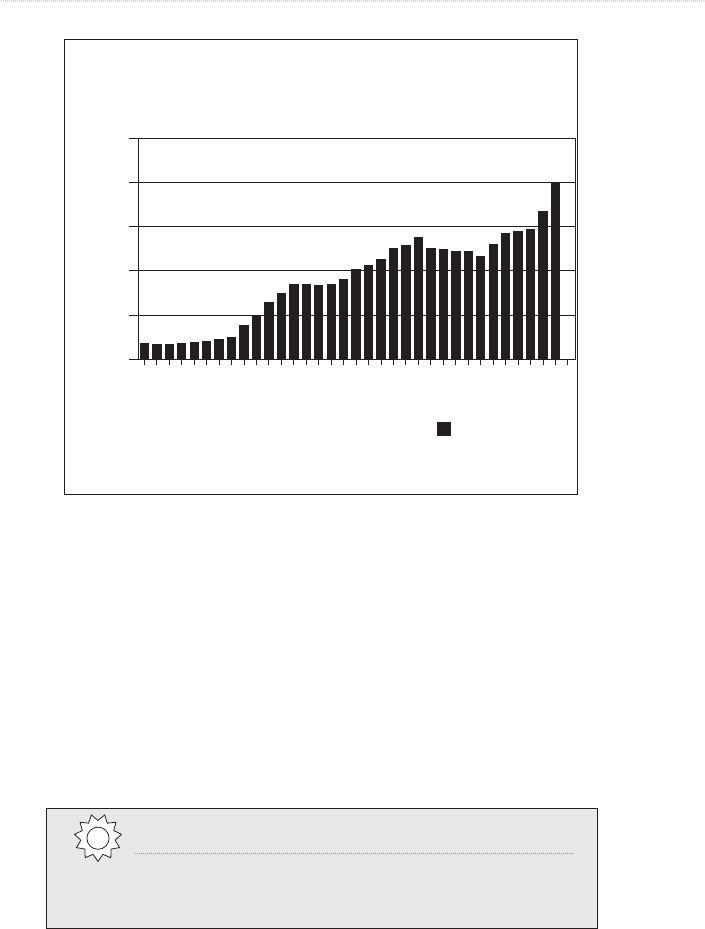
136
PART III
■
MASTERING THE MARKET
You might find that it can be pretty difficult to gather this
type of information, especially if you’re looking for income-
producing property alone, rather than at single-family homes. If
you are fortunate enough to find an expert agent who special-
izes in income property in your area, he might have saved the
kind of data you need. If not, you will need to do some research
on your own to get some sense of the trend in property values.
This is vital in projecting the long-term growth of your invest-
ments. The following list covers the data you should look for:
0
50
100
150
COST ($/SQ FT)
YEAR
THIRTY-FIVE YEAR VALUE STUDY
Residential Income Property
Greater South Bay Area, Los Angeles County
Thirty-four year average annual value appreciation rate = 7.4%
COPYRIGHT
©
BUCKINGHAM INVESTMENTS
333 RICHMOND ST, EL SEGUNDO, CA 90245
COST($)/SQ FT
200
250
1969
1970
1971
1972
1973
1974
1975
1976
1977
1978
1979
1980
1981
1982
1983
1984
1985
1986
1987
1988
1989
1990
1991
1992
1993
1994
1995
1996
1997
1998
1999
2000
2001
2002
2003
Bright Idea
Recruit a local librarian to help you research values in your area. Most libraries
have great databases, and the librarians probably would be happy to help.

137
CHAPTER 6
■
REAL ESTATE, THE ECONOMY, AND YOUR TARGET MARKET
■
Price per square foot:
Sale price of the property
Square feet of living space
= $/sq. ft.
■
Gross rent multiplier:
Sale price of the property
Gross income of the property
= G.R.M.
■
Price per unit:
Sale price of the property
Number of units in the building
= $/unit
■
Rental rate:
Total rent per month
Square feet of living space
= Rent/sq. ft.
In the event that you are not able to find data for income
property sales, you can use sales information for single-family
homes to give you some indication of the trends. Many realty
offices save sales data to assist in estimating the sales prices for
listings and sales they make. If not, it’s time to do some detec-
tive work. The information is out there; you just have to find it.
The following are three good sources that can help you find this
information:
1. Tax assessor’s records
2. Appraisal services and title companies
3. Newspaper ads
Let’s see how these sources can be used to help us gather the
information needed.
Bright Idea
As the use of the Internet increases, more sources are available to track com-
parable sales (as well as any other data you may require). If you’re computer
savvy, go online and give it a try.

138
PART III
■
MASTERING THE MARKET
Tax assessor’s records
Your local assessor’s office should have records of the property
values for many years in the past. The problem with the asses-
sor’s data is that the assessed valuation does not always reflect
the actual fair market value of the property in the area. Some of
these valuations are so old, or are based on original valuations
done sometimes 50 or more years ago, that they occupy the
realm of fantasy. The truth is that it is impossible for these
departments to appraise all properties every year, so the valua-
tions are based on current data combined with any historical
data they might already have.
When using the tax assessor’s records, it’s important to
choose a section of property that hasn’t changed much for
many years. A large tract of homes, for example, would be a
good place to start. Then you need to check valuation changes
in that area back as many years as you want your study to cover.
Once you do this, it should show you a trend in the valuation of
property in that area.
Appraisal services and title companies
Most appraisal services and title companies keep large databases
for comparable sales of property. By contacting their customer
service departments, you might be able to find one that would
let you look through files of buildings that have changed hands.
Some companies, however, use outside services to gather this
kind of information. If they do, ask them who they use and then
contact the service yourself. It might cost you something, but in
Bright Idea
If you are struggling to get someone to help you, contact a title representa-
tive that works at one of the local title companies. Tell her that if she helps
you gather the data you need now, you’ll give her your title business on the
building you buy when it comes time for you to make a purchase. For a com-
missioned employee like a title representative, the idea of having a deal in
the bank would probably be pretty attractive.

139
CHAPTER 6
■
REAL ESTATE, THE ECONOMY, AND YOUR TARGET MARKET
the long run, having this understanding about the history of
value for your target area will be well worth a small expense.
Newspaper ads
A third method of acquiring appreciation data requires spend-
ing some time in the archives of your local newspaper or library.
As with the research at the assessor’s office, you will want to pick
a section of your community that hasn’t had much physical
change for the time period you are researching. The best choice
would be a housing tract in which the houses are advertised
using the name of the tract. As an example, in Hawthorne,
California, the most popular housing tract in the city is called
Holly Glen. In Holly Glen, there are only a couple of floor plans
in the entire tract, and they each have 3 bedrooms and 1
3
⁄4
bathrooms.
When you find the ideal tract of homes, it’s time to gather
and crunch some numbers. Look at the “For Sale” ads in the
Saturday and Sunday papers as far back as the year the tract was
built. You should be able to get enough sales prices to get a
good feeling about the average price in the tract. Because you
know the average number of square feet in the homes in this
tract, it will be easy to get the average price per square foot for
that year. When your research is complete, you will have enough
data to do an estimate of the appreciation rate.
We’ll assume you have reviewed past newspaper ads and
have identified a tract of homes as previously discussed. The fol-
lowing shows how you could lay out your chart.
Bright Idea
It isn’t necessary to look at every paper for every month of the year. Ask your
agent which months of the year seem to be the most active in your area. This
usually is just after school is out because most people don’t like to move their
kids in the middle of the year.

140
PART III
■
MASTERING THE MARKET
Change Percentage Average
Year Price in Dollars Change Change
1993 $89,500
1994 $93,500 $4,000 4.4% 4.40%
1995 $98,500 $5,000 5.3% 4.85%
1996 $97,500 –$1,000 –1.0% 2.90%
1997 $95,000 –$2,500 –2.5% 1.55%
1998 $95,000 0 0 1.24%
1999 $97,500 $2,500 2.6% 1.46%
2000 $101,500 $4,000 4.1% 1.84%
2001 $106,500 $5,000 5.0% 2.24%
2002 $113,000 $6,500 6.1% 2.67%
2003 $119,950 $6,950 6.2% 3.02%
The percentage change can be calculated by dividing the
change in dollars by the price the year before. For example, the
dollar increase from 1993 to 1994 was $4,000. The percentage
change is $4,000 ÷ $89,500 = 4.4 percent.
The average change is calculated by dividing the percentage
changes by the number of years of changes. For example, the
average change from 1993 to 1995 is 4.4 percent + 5.3 percent
÷ 2 = 4.85 percent. We divide by two because we have owned the
property for only two full years, 1993 and 1994. The percentage
change shown on the line for 1995 is the value at the start of the
year.
While you are researching the house ads in the paper, make
sure you also look for ads for small units. You may find some
useful information about old rental rates and even unit prices
for prior years. Your study might just show the impact on
houses, but our experience has shown that most properties in a
given economic area appreciate at about the same rate.

141
CHAPTER 6
■
REAL ESTATE, THE ECONOMY, AND YOUR TARGET MARKET
The “comfort zone”
At a minimum, you now have a reasonable idea of what is hap-
pening in your area. It’s time to start narrowing down the geo-
graphic area and deciding on one or two areas in which you’d
feel comfortable investing. Establishing this zone where you feel
comfortable will be a combination of the economic cycles of the
communities and your personal feelings about the areas.
The best way to pick areas is by doing a comparison of the
financial returns of all the areas in which you could buy. Pick a
property size, let’s say a 4-unit, and find one for sale in each of
the areas in which you could invest. Next, calculate the return
on investment for each property. Use the same down payment
and loan terms so that you get an apples-to-apples comparison.
Invariably, you will be drawn to some areas emotionally but
won’t be able to afford them. Other areas will have an excep-
tional return, but you wouldn’t feel comfortable in them. In the
end, you should find several areas that could work for you, and
we’ll call these your comfort zones. As you learn about financial
planning in Chapter 9, you will use this comfort zone informa-
tion and the other statistical facts you’ve accumulated to com-
plete your investment plan.
Just the facts
■
A clever investor always can make a profit because housing
is a basic necessity of life.
■
Understanding the economic principles of supply and
demand will help you succeed as a real estate investor.
Bright Idea
Most new calculators and computers have programs that can do linear regres-
sion analysis. If you can learn to use those programs, you will be able to chart
appreciation rates quickly and easily.

142
PART III
■
MASTERING THE MARKET
■
Be wary of letting public opinion influence your invest-
ment choices.
■
To make long-term projections for your investments, you
need to chart value appreciation in your target market.
■
Finding your comfort zone is the first step in long-term
real estate planning.

Chapter 7
143
GET THE SCOOP ON...
Raw land and why it’s a risky investment
■
The
truth about condos and single-family homes
■
The golden opportunities of small apartment
buildings
■
The allure of larger rental properties
■
How to make money by owning and renting out
commercial space
Subdividing Your
Options
M
uch of this guide is built around our sample
four-unit apartment building. This allows us
to demonstrate many of the concepts of real
estate investing with an easy-to-understand example.
There is more to this game, however, than just
four-unit buildings. There’s land for development,
smaller and larger apartment buildings, condomini-
ums, single-family homes, commercial strip malls,
and industrial properties to name just a few.
Yet, many investors develop tunnel vision when
they begin making money in real estate. If someone
is doing well investing in small apartment buildings,
the odds are good that they won’t even consider buy-
ing homes or commercial centers. Maybe an owner
of an office building hasn’t had a vacancy in five
years. Why should he sink his money into commer-
cial strip malls when he’s doing great as it is? The
reason is that there are opportunities to make lots of

144
PART III
■
MASTERING THE MARKET
money investing in all kinds of property. To illustrate our point,
in this chapter we’ll give you a guided tour of the entire market
so you can choose the venue that will produce the best return.
Let’s begin with the foundation of all real estate, land itself.
Land ho!
When you own real estate, it’s important to recognize that it’s
the dirt that holds the real key to the ultimate value of your
property. A beautiful house on the beach that goes up in value
every year isn’t appreciating because the 2 × 4s that went into
building it are worth more annually. It’s appreciating because
the demand for the location is increasing—the demand for the
land. You will learn that the secret to making money on a land
investment is being able to recognize an increase in demand
and then being able to capitalize on your insight.
Here, we’ll focus on three different types of land invest-
ments. The classic purchase is raw land that sits in the path of
progress. The other two involve buying land in areas that
already are developed. Once you know the principles behind
these three, you will gain a basic understanding of the opportu-
nities and pitfalls that exist in this market.
Raw land
When thinking about investing money into raw land, you need
to consider a number of variables. First off, know that raw land
is a capital-intensive investment. What’s worse, besides starting
with a big bank roll, you will have to be willing to wait a good
long time before you see any financial return. Unfortunately,
these facts are just the nature of the beast.
Bright Idea
The county planning office is a good place to start when considering a raw
land investment. Ask them to help you plot out the business, industrial, and
residential growth of the community over the past 30 years. Your map of the
past should give you insight into plans for the future.

145
CHAPTER 7
■
SUBDIVIDING YOUR OPTIONS
Many smart investors try to get ahead of the game by
researching growth trends in certain areas and then rolling the
dice and hoping their predictions come true. Sometimes they
pan out; sometimes they don’t. Here’s a real-life example:
In California, the communities surrounding the Los
Angeles airport had become so crowded that there was
talk of building a new airport 100 miles away in the city
of Palmdale. The thought was that this would take the
pressure off the Los Angeles basin and would provide
millions of affordable acres for new jobs and new homes.
In the movie Field of Dreams it was said, “If you build
it, they will come.” In Field of Dreams it worked. Kevin
Costner had a vision to build a baseball diamond in
a cornfield. He built it, and the people came. In
Palmdale, however, they never built it, but the investors
came anyway. Many sunk their savings into raw land
thinking they were going to get rich, but the project
fizzled. Will Palmdale ever be the thriving center envi-
sioned? Probably, but not in the lifetime of those who
had the dream.
As you can see, investing in raw land is an inherently risky
proposition. This is because a land investment
■
Often has enormous up-front costs including the cost of
the land, sewers, utilities, roads, plans, permits, engineer-
ing, and so on
■
Is extremely difficult to get financed
■
Pays you no income at the beginning
■
Might be highly taxed
■
Usually is very slow to rise in value
■
Might come with legal barriers to hurdle
■
Is highly speculative
■
Is subject to the whims of local politicians

146
PART III
■
MASTERING THE MARKET
This isn’t to say, however, that you can’t make money here,
because you can. If you are in an area of rapid growth, have the
money to risk, and see raw land as a potential winner, you should
■
Do an in-depth analysis of growth trends, the speed of
growth, and the direction of growth
■
Determine which uses grow fastest in your area:
commercial, residential, or industrial properties
■
Attend planning meetings
■
Obtain utility expansion plans
■
Review historic examples of similar growth
Once this analysis is completed, you should have a pretty
strong idea about whether raw land is an area of real estate
where you want to sink your money.
In-fill opportunities
An “in-fill” project is another type of land investment. It involves
buying a vacant lot surrounded by existing buildings of one type
or another. The idea is to buy the lot, build something useful on
it, and then sell it off for a profit. Compared to a raw land invest-
ment, these projects have considerably less risk for the investor
because these opportunities are found in areas that already are
developed.
In many cases, an owner has held a vacant lot next to his
home or business for as long as he can remember. His original
idea was to keep it just in case he needed it in order to expand.
Now he is getting ready to retire and he realizes that he really
doesn’t need the property at all and, therefore, he decides to
sell. This is where you come in.
Remember that, when buying this kind of lot, you need to
do the same kind of research you would do if you were buying
raw land. Check with the city and utility companies to see what
can be built on the site. It would be disastrous to buy a lot with
the intent and resources to build a small apartment building
only to find out it is zoned for a parking lot only.

147
CHAPTER 7
■
SUBDIVIDING YOUR OPTIONS
One important issue that comes up when doing an in-fill
deal is determining whether there are any pollutants in the soil.
As the developer of vacant land, this concern is now your prob-
lem. Think back to all the old gas stations and “mom-and-pop”
manufacturing sites that may have closed near your property’s
location. If one of those types of businesses was located on your
lot, and if it left any pollutants behind, which is very common,
you are the one who is legally required to clean it up. Most cities
require developers to do extensive environmental testing.
These tests always are expensive, and if any problems are found,
the cost of removal can be staggering.
As real estate investors ourselves, we developed many apart-
ment and commercial projects in the late 1980s. One time,
while doing the foundation excavation for an apartment build-
ing, we found concrete and asphalt mixed in with the soil that
filled the rear of the lot. The city could care less that the prob-
lem wasn’t toxic. They still forced us to excavate the entire rear
portion of the lot, remove the concrete and asphalt, and then
recompact the soil. This was because the dirt wasn’t natural.
Instead, it was fill-dirt and was not compacted properly. The
concern was that it would cause settling problems after the
foundation was built. Because the integrity of the entire struc-
ture rests on the foundation, the process had to be observed
and regulated by an expensive licensed soils engineer. This
unexpected problem cost us all the money we had in reserve
and then some.
Redevelopment opportunities
The last type of land investment we’ll touch on is called a rede-
velopment opportunity. This is when a piece of property is
worth more for the value of the land itself than for the value of
the land plus the existing structure that sits on it. In this situa-
tion, you are not looking for vacant land to build on as you did
with the in-fill project. Instead, you are looking for a bargain
property that should (and will) be torn down eventually. Like an

148
PART III
■
MASTERING THE MARKET
in-fill, however, once you have an empty dirt lot, the goal is to
build something useful on it and then sell it off for a profit.
When doing a project like this, the rewards for the devel-
oper can be hefty. As an example, let’s say you found an older
two-bedroom house on a 50 × 150 R-3 (multi-unit) lot. The
house can be had for $60,000, and after checking, you deter-
mine that R-3 land in that area is going for $10 per square foot.
Here is how a redevelopment deal could yield a profit even
before you build on it:
Value of land (50 × 150 × $10 per sq. ft.) $75,000
Cost of the house –$60,000
Potential profit before building $15,000
One great thing about redevelopment deals is that the struc-
ture sitting on the lot might already be producing income when
you purchase it. This is especially helpful if the market for land
isn’t too strong when you initially find the property. You still can
take advantage of the opportunity by buying the lot and then
renting out the structure until the market improves. This way, you
avoid the high cost of holding undeveloped land while you wait
for the appreciation. In addition, you could begin the develop-
ment process with the city and be able to have a turn-key project
to do on your own or to sell to a builder when the time is right.
Condominiums
For many people, condos provide a pretty nice home. They’re
affordable, often have great floor plans, and include amenities
like pools, gyms, and saunas that that are just too expensive to
obtain in a single-family home. But, truth be told, as far as a real
Moneysaver
Find an architect who is willing work for a percentage of the profit when your
project is completedHe’ll get paid on the back end, and you will save cash on
the front end.

149
CHAPTER 7
■
SUBDIVIDING YOUR OPTIONS
estate investment goes, you can do better putting your money in
other places.
Here’s why: The trouble with condos is that you are hand-
cuffed by the condo association in terms of what can be done
to the property to increase its value. As a real estate investor,
you must always ask yourself, “How can I add value to any prop-
erty I purchase to make it worth more when I sell?” The idea is
to buy a property for X, find ways to add value to it, and then
eventually sell it for Y. With condominium ownership, however,
most associations will not allow you to make any improvements
at all to the outside of your unit. They want your unit to look
like your neighbor’s unit, which looks like his neighbor’s unit,
and so on. For that reason, any profit to be made buying con-
dos is limited to
■
Finding a bargain in the market (preforeclosure,
foreclosure, desperate seller)
■
Appreciation in value over time
■
Adding value by doing interior upgrades only
Most people don’t buy condominiums to make a profit; they
do it to buy their first home. This is pretty smart because, as you
can see, there is very little profit to be made here, beyond value
appreciation, especially when held up against other real estate
opportunities.
On the other hand, if you’re looking for a home plus an
investment and can afford it, a single-family residence or a small
set of units may be a better way to go.
Single-family homes
Most of us with real estate on our minds long to be the king of
our own castles. That is, we want to be homeowners. Thankfully,
purchasing single-family homes offers a great opportunity to get
your feet wet investing in real estate and a chance to create
some extra profit as well, provided you’re willing to put a little
added effort into the mix. Additions to consider in order to
add value to your investment might include outdoor shutters,

150
PART III
■
MASTERING THE MARKET
upgraded landscaping, outdoor lighting, new paint, attractive
fencing, interior upgrades, and so on.
All of these kinds of additions are possible with single-family
homes because there’s a great diversity in the properties that
the typical single-family home area offers. Unlike condo tracts,
there’s hardly ever (except in planned communities) a require-
ment for a single-family home to look just like the neighbor’s.
With the shackles off, the opportunity to add value to your
investment only stops with your imagination.
Knowledge is power
When deciding whether to buy single-family homes as an invest-
ment, begin, as always, by researching your local market. Start
by identifying areas that have some diversity in the homes and
that sell well. Look at potential purchases with an eye toward
what could be done to add value to the home. A good rule of
thumb is that the more conforming the area, the fewer oppor-
tunities to find a bargain. The typical conforming area is a hous-
ing tract that has hundreds of homes in it but only three or four
different floor plans. You can make money here, but because
there is so little variation, it limits the possibilities.
If you are looking to add some value to increase your profit,
you should take a trip to city hall. You need to determine how
difficult the permit requirements are. Obtaining permits can be
easy and inexpensive or costly and time-consuming. Answers to
these questions will tell you if buying single-family homes in this
area would be worth pursuing or not.
Bright Idea
Check with the local buildings department to see whether there are any restric-
tions to improving your property due to zoning regulations. Wealthier commu-
nities often impose severe zoning restrictions. Historic districts undoubtedly
will have restrictions as well.

151
CHAPTER 7
■
SUBDIVIDING YOUR OPTIONS
When searching for a bargain in the single-famly residence
market, knowing the following information will you help you
spot homes that are underpriced:
■
The seller’s motivation for selling
■
The amount of time on the market
■
The price per square foot
■
The price per bedroom
■
The value of extra bathrooms
■
The value of a family room or den
■
The value of amenities (pool, deck, garage, hot tub)
■
The premium for condition
You can find even more profit by using other facts from your
research. In the following scenario, let’s say you’ve found an
older two-bedroom house that has about 1,300 square feet. Your
research shows that most of the three-bedroom houses also are
about 1,300 square feet, and they sell for about $125 per square
foot (1,300 square feet × $125 per square foot = a sales price of
$162,500). Here, the house you found could be bought for
$110,000 because it only has two bedrooms, it’s older, and it
needs carpet, paint, and window coverings.
The plan would be to buy this house for $110,000. Give the
place a well-deserved face-lift and redesign the interior to turn
it into a desirable three-bedroom house. Let’s say you have
determined that this can be done with a minimum of expensive
Watch Out!
Be aware that many of the homes or units that you are considering will have
termites or termite damage. If either is found, it should be up to the seller
to have treatments done and make the necessary repairs or to adjust the sales
price accordingly.

152
PART III
■
MASTERING THE MARKET
structural work because you would only have to move some walls
and build a new closet. The budget would look like this:
Construction of bedroom $15,000
Floor covering $1,300
Interior paint $750
Window coverings $500
Exterior paint $2,000
Landscaping $750
Total cost to improve $20,300
Now you would have a sharp, three-bedroom home that
should sell for $125 per square foot just like the other three-
bedroom houses in the neighborhood. Your gross profit would
look like this:
Value added price $162,500
Less original cost –$110,000
Less cost to improve –$20,300
Gross profit $32,200
One of the extra bonuses of this type of investment is that
you combine this purchase for profit with your desire to live in
and own your own home. Many investors have started out
exactly this way. They pick a house for the investment and profit
value and also live in it as their personal residence during the
interim. The main goal isn’t the personal desires you might
have for a home but the profit you can generate by purchasing
a particular piece of property. The property just happens to also
provide a temporary place for you to live.
Moneysaver
Before buying a house with the idea of rearranging the interior, have a
licensed contractor make sure he can do the work without any major struc-
tural alterations.

153
CHAPTER 7
■
SUBDIVIDING YOUR OPTIONS
Living in this kind of investment provides several advantages:
■
You gain an investment and a residence in one shot.
■
You become your own boss.
■
When you sell it, the profit might become tax free if you
meet certain criteria.
The first two advantages are obvious, but the last is a new
twist because of current tax laws in effect. As of 1999, you can
exclude the entire gain on the sale of your main residence
under the following conditions:
1. Up to $250,000, or
2. Up to $500,000 if all of the following are true:
a. You are married and file a joint return for the year.
b. Either you or your spouse meets the ownership test.
c. Both you and your spouse meet the use test.
d. Neither you nor your spouse excluded gain from the
sale of another home after May 6, 1997.
The IRS says you can claim the exclusion if
1. During the five-year period ending on the date of the sale,
you have owned the home for at least two years (owner-
ship test).
2. Have lived there as your main residence for at least two
years (use test).
This is probably the greatest method of delivering tax-free
wealth that the government has ever enacted. Think about it.
This isn’t a way of deferring your taxes; instead, you have
absolutely no tax due whatsoever. What’s more, Uncle Sam says
that you can take advantage of this technique every two years.
This can work for both beginning and experienced investors.
For people just starting out, the message is: When you buy a
home, don’t buy with the idea that you are going to live there
forever. Instead, buy a property that will generate the greatest
profit within the two years following your purchase. You might

154
PART III
■
MASTERING THE MARKET
want to consider a house in an up-and-coming location, a place
with an extra lot that you can sell off separately, or even a classic
fixer-upper—anything that will help create some sweat equity.
After you’ve lived there for two years, the idea is to sell it,
take all that free profit, and start over again. This time, however,
you might have made enough money from the sale to buy both
a home and a piece of income property. Now think about your
portfolio. It would include two great pieces of real estate—a
home and, say, a small apartment building. If you’re game, you
could even do it again in two years.
The plan will work just as easily for people who already have
substantial equity in their current residence. It can be particu-
larly helpful to people nearing retirement. A person can make
money using the same methods previously mentioned, but a sig-
nificant portion of the capital gain could be put into cash
reserves for his latter years.
A final word on this benefit: Our government uses these
kinds of tax benefits to stimulate the economy. Other methods
are used to slow the economy. Conventional wisdom says that,
because this benefit is so huge, it probably won’t be around very
long. If you wait, you might be left mumbling, “If only I had . . .”
Single-family homes as rental properties
Single-family homes also can be purchased as rentals and, as
such, can generate the same returns previously discussed in this
book. There are pros and cons to owning single-family homes
solely as rental investments. The primary advantage is that the
management and expenses of renting a house should be mini-
mal. Management will be easy because you only have one pri-
mary tenant to be concerned with. As for expenses, you should
make the tenant be responsible for all of his own utilities and
general maintenance. Of course, you have to pay for major
items such as new roofs, property taxes, and broken water
heaters, but the tenant should basically live in the house as
though he owned it.

155
CHAPTER 7
■
SUBDIVIDING YOUR OPTIONS
There also are some disadvantages to buying and then rent-
ing single-family homes. The biggest disadvantage is that the
financial return on single-family residences in a given area is
usually far less than the return on an apartment investment. Go
back to our discussion earlier in this chapter about the value of
the dirt under any property. Because the land holds a great per-
centage of the value of any property, the rent you earn is being
paid not only for the structure but also for the land. This is the
only reason why there’s a difference in rental rates for homes in
differing economic areas in the same city. People don’t pay
more for the house; they pay more for the location, which is the
land. Location, location, location!
Let’s say you have a four-unit building on a 7,500 square foot
lot. You have four tenants paying rent on that lot. If you had
one house on that same
size lot, you would only be
getting income from one
person. It is true that one
house will always rent for
more than one apartment a
quarter of its size, but it is
doubtful that it would rent
for more than four apart-
ments put together. In our
experience, it is a rare case
that the premium for a sin-
gle-family residence will give you the same return as an invest-
ment in apartments in the same area costing the same amount.
The second disadvantage is that, when you have a vacancy in
a single-family home, your vacancy rate is 100 percent. In times
of vacancy, that could be quite a big load to carry. However, if
you own a positive cash flow four-unit apartment building, the
cash flow from the other three units might be enough to still
make the mortgage payment and pay for your other expenses.
“
I own several single-
family homes as rentals.
On two different occa-
sions, I had tenants
skip out on the rent
and leave me to pay my
entire mortgage without
any income coming in
from the properties at
all.
”
—Jillian L., property owner

156
PART III
■
MASTERING THE MARKET
Vacation homes
A vacation property can provide an interesting mix of benefits.
The primary advantage of buying a vacation home is to have a
place to go with family and friends—a home away from home
where you can relax and enjoy the surroundings.
Because these properties are purchased primarily for per-
sonal use, we hesitate to classify them as truly investment prop-
erty. But, they do take on the characteristics of investment
property for two reasons. First, many owners do rent their vaca-
tion homes out, and this can produce income. Second, if these
properties are purchased with the intent to sell some day at a
profit, they qualify for the benefits of a 1031 exchange.
Many owners offset the cost of ownership by renting out
their vacation homes when they can’t use them themselves. The
tax laws say that if personal use of the property exceeds the
greater of 14 days or 10 percent of the total days rented, you
cannot take depreciation to help shelter any income earned.
This means that this income is taxable just like any other port-
folio income we may have. The good news is that the expenses,
interest, and taxes may be written off subject to the first and sec-
ond home limitations.
As far as a 1031 tax-deferred exchange goes, a vacation
home qualifies for an exchange even if it isn’t rented and is only
used for personal enjoyment. The key factor is that it was pur-
chased with the intent of selling some day for a profit when the
family no longer wants to use it. The good news is that this
means you can trade for another vacation home or any other
property that qualifies as investment property, like an apart-
ment building.
It’s important to note that all the rules of doing an IRS 1031
exchange must be followed. We will be reviewing these rules in
detail in Chapter 10, “Planning for the Tax Man,” but for now
remember to always have your particular situation reviewed by
your CPA before you make any moves.

157
CHAPTER 7
■
SUBDIVIDING YOUR OPTIONS
Two-to-four-unit properties
One step up from buying a condo or a house is purchasing a
small apartment building. We will define small as a duplex,
triplex, or fourplex. As you may have guessed, we favor residen-
tial apartment rentals as investments and believe that they rep-
resent the safest form of real estate investing. One reason is
because, as you learned in Chapter 5, “Borrowing Big Bucks,”
these properties fall into the residential loan category. For that
reason, they’re easy to finance with low down-payment options,
which make them affordable for most of us.
Secondly, and maybe more importantly, apartment investing
is a winner because you are investing in one of the three basic
commodities of life—shelter. Thankfully for all real estate
investors, every human being on earth needs a place to call
home. This is true whether the times are good or bad. A busi-
ness, on the other hand, which may operate out of a strip mall,
can always close up shop and function out of the owner’s garage
if times get tough. The people who worked there will be out of
a job, but those same people will still need a place to sleep at the
end of the day.
The premise is this: By providing shelter, we, as real estate
investors, should always be able to stay in business.
The privacy factor
As a property owner, your tenants should feel a sense of privacy
when living in their units. If given a choice, most people would
opt to live in a single-family house. Because houses rent at a
Bright Idea!
Regardless of what we believe is the best real estate to buy, you can’t make
any profit unless you do buy some property. In fact, “buying some” is the
number-one secret to making a profit in real estate. If you can’t buy a four-
unit apartment building, buy a duplex. If you can’t get a duplex, buy a house
or condo. But above all, buy some and get started!

158
PART III
■
MASTERING THE MARKET
premium, however, most renters can’t afford them. The next
best thing for them is to pay a premium for a nice apartment
that has the feeling of a single-family home. The best way to cre-
ate that single-family feel is to find properties that have separate
units on the lot. Even if fences do not separate the units, these
kinds of apartments give the tenants more privacy than, say,
three or four units that share common walls between them. As
a general rule, the more private you can make the rentals, the
less the tenants will call and ask for you to provide extra
upgrades to their units. This is because privacy makes the ten-
ants look at the unit as their home as opposed to a temporary
residence. In addition, if you can add fences to separate the
units, you can save on gardening costs as you make each tenant
responsible for his own yard. You will see both of these benefits
on the bottom line because your overall expenses will be kept at
a minimum.
One lone building
The next best thing to completely separate units is to buy a
building that sits on just one level. These properties don’t have
the inherent noise problems that come with tenants living over
one another. Many of these situations offer the opportunity to
fence off a private area for each tenant behind or in front of
each unit. Again, this gives some private open space, and it
should save on gardening costs.
Two + two
If you’re not able to find these single-family-style properties, you
will have to look for standard apartment-style buildings. Basic
apartment buildings are usually two stories with a couple of
units downstairs and a couple more upstairs. A parking area
usually is either attached or separated, depending on the size of
the lot. Although these buildings often do not have the same
appeal of the other style properties, don’t worry. There will
always be a tenant available for a nice unit.

159
CHAPTER 7
■
SUBDIVIDING YOUR OPTIONS
In many older urban areas you have two-family (“Philadelphia”
style) houses and three-deckers. You also often find formerly
single-family residences split into two to four units. The feel of
these residences is somewhere between a single-family house
and an apartment building. With growing gentrification, as in
New York or Boston, some older neighborhoods with this type
of housing could be a wise investment
Finding properties
One of the keys to finding the right two-to-four-unit property is
to survey the market and get a feeling for the kind of style and
amenities that seem to command the highest rent per square
foot. Your goal then will be to acquire that type of property or
one that can be converted at a minimum cost.
In finding the right property, it’s important to pay particular
attention to your potential expenses. If possible, look for units
that have all the utilities
metered separately. This
way, the tenants will pay the
utility bills instead of you.
Also look for units that
have individual laundry
hookups versus common
laundry rooms. Again, this
means that they pay for
their gas and electricity, not
you. Tenants also should
supply their own appliances.
Not having to purchase and
maintain refrigerators and stoves will save you a lot of money
over the years. From a practical standpoint, the bigger the items
your tenant has to move in, the less likely he is to move out.
You will be restricted based on what tenants in the area
expect when they rent. If you find that you will have to provide
most of the appliances to keep up with the competition, make
“
I bought a four-unit row
house in Boston in the
‘80s, converted it to
condos and sold them
for triple my investment
(purchase plus improve-
ments). Twelve years
later, the units were
selling for 100 percent
more than I sold them
for.
”
—Matthew K., investor.

160
PART III
■
MASTERING THE MARKET
sure you become an expert on the secondhand market and local
repair services. This will help you keep costs under control.
Five units and up
When you graduate to the five-unit and larger category, you have
moved into the arena of commercial loans and the economy of
scale that comes from more units per square foot. The first time
you start looking at these properties, this discount usually
becomes quite apparent. Again, this is primarily because there is
a limited availability of financing for these size properties versus
single-family residences and two-to-four-unit buildings.
With five-unit buildings, specifically, there is a good method
of creating some added value. Surprisingly enough, it is not by
adding bedrooms like we did with the single-family example ear-
lier. Instead, you can add value by turning a five-unit building
into a four-unit building. In doing so, you turn a property that
required a commercial loan into one that only requires a buyer
to obtain a residential loan.
Let’s say you find a five-unit building in the same neighbor-
hood as our four-unit example. The four-unit is worth $220,000,
and we can buy this five-unit for $175,000. (This kind of dis-
count for bigger, harder-to-finance buildings is not uncommon.
Once you start to research the market, you will see it to be true.)
The four-unit is made up of all two-bedroom units. The five-unit
has three two-bedroom units and two one-bedroom units. If the
layout of the one-bedroom units is such that they are located
right next to each other, you probably can take out a couple of
walls and combine them into one really nice two-or-three-
bedroom unit. All of a sudden, you have turned your hard-to-
finance (and hard-to-sell) five-unit building into an easy-to-
finance (and easy-to-sell) four-unit building.
Surprisingly, it’s relatively easy to get a conversion like this
through city bureaucracy because you are down-zoning the

161
CHAPTER 7
■
SUBDIVIDING YOUR OPTIONS
property, which is a preferred situation to creating more units.
You are decreasing the density and increasing the parking on
your property, which most cities like.
Of course you will have to do diligent research before you
attempt this kind of project. You need to know in advance
specifically what kind of permits and costs will be involved. If
you find that the city is going to require extensive drawings or
engineering work before they issue permits, make sure your
contractor and architect are in the loop. Their expert opinion
will help you to determine whether the project will be worth the
expense.
Big apartment buildings
When you become really successful at this game and begin to
buy great big apartment buildings with multiple units, your
decision-making becomes entirely dependent on the analysis of
the financial operations of the property. The good news is that
when you get into this range of properties there are usually
plenty of loans available. Know, however, that when it comes to
commercial loans like these, you are going to have to come up
with a great deal of cash for a down payment. With these pur-
chases, lenders usually require you to come up with upwards of
25–35 percent of the purchase price. Just to illustrate what
you’ll be up against, 25 percent on a $2,000,000 piece of prop-
erty comes to $500,000 down.
Tenants who rent in larger properties tend to be looking for
a different environment than tenants who like the privacy of
Moneysaver
When buying big apartment buildings, always be on the lookout for any avail-
able owner financing. If you can find some, it often can considerably increase
your leverage and, thereby, your percentage return on your investment.

162
PART III
■
MASTERING THE MARKET
smaller two-to-four-unit properties. These tenants have similar
thinking to people who want to buy and live in large condo
developments. They want the luxury of pools, workout rooms,
and clubhouses, but they can’t afford or don’t want the hassle of
paying for or taking care of these amenities themselves. Items
that attract tenants to larger apartment complexes include
■
An attractive appearance from the street (curb appeal)
■
Well-maintained common areas
■
A security entrance system
■
A secure parking area
■
Recreational amenities (pools, jacuzzis, saunas, barbecues,
tennis courts, a clubhouse, and so on)
■
Laundry rooms
■
Large square footage apartments
■
Appliances
■
Multiple bathrooms
■
Walk-in closets
■
A private balcony or patio area
■
Air-conditioning
■
Upscale amenities (wet bar, fireplace, and so on)
■
Cable or satellite television services
Note that it is not unusual for tenants in larger properties to
move a bit more frequently than those who rent in smaller prop-
erties. By maintaining a high degree of pride-of-ownership, you
will make it harder for tenants to justify moving for purely emo-
tional reasons.
As you move into progressively larger properties, you will be
leaving the “mom-and-pop” phase of real estate investing and
entering the “just business” phase. The properties produce
good cash-on-cash income, but they need the kind of organized

163
CHAPTER 7
■
SUBDIVIDING YOUR OPTIONS
management that any larger business would need. The princi-
ples we will be discussing in Chapters 13–15 will be most applic-
able to these size properties.
Commercial and industrial properties
Commercial and industrial properties can be a great investment
vehicle for you to consider. This is because, like residential ten-
ants, businesses also need a roof over their heads and will pay
good money for just the right place to hang their shingle. In fact,
you should think of these properties as a “home for a business.”
Commercial and industrial properties fall into many cate-
gories including
■
Freestanding stores
■
Small strip malls
■
Office buildings
■
Mobile home parks
■
Mixed-use commercial and residential
■
Parking lots
■
Garages
■
Multistory office buildings
■
Specialty commercial (restaurants, gas stations, and so on)
■
Small factories
■
Larger industrial buildings
Bright Idea
Unless you have the confidence and experience to manage a large apartment
building yourself, you should hire a property management company before
you buy. Make sure you take a company representative with you to look at
each and every property you are considering. The representative will provide
insight about things that you never even considered.

164
PART III
■
MASTERING THE MARKET
Partner up
When you rent commercial or industrial space to a tenant, you
really are becoming a partner in their business. If they do well
in your location, the odds are good that they will continue to be
a tenant and will continually be able to afford your rent.
The fact of the matter is, however, most new businesses fail
in the first year or two of operation. If one of your long-term
tenants fails, your real estate investment could be in serious
trouble. For this reason, you should personally interview all the
tenants in any commercial property you consider purchasing.
You need to find out the following information:
■
The length of time the owners have been in business
■
The credit rating of the owners and the business
■
Why they left their last location
■
Why they chose this location
■
The goals of their business
■
The type and term of lease they desire
Be especially wary of a property in which most of the leases
are coming up for renewal. Many clever sellers have unloaded a
prize building with a great long-term tenant because they got
wind that the tenant was going to be moving on. You don’t want
to get stuck owning a great strip mall without any tenants.
Types of leases
The foundation of most commercial properties is the lease as
opposed to the month-to-month agreement used in residential
property. Having long-term leases with successful tenants/
businesses is one of the greatest advantages of owning a com-
mercial property—provided your lease is structured properly.
Therefore, it is imperative that you hire a real estate lawyer to
help you handle these kinds of transactions.
Generally speaking, leases fall into two categories:
1. Gross leases
2. Triple net leases

165
CHAPTER 7
■
SUBDIVIDING YOUR OPTIONS
The difference in the two depends on whether the property
owner or the tenant is going to pay the bills. In a gross lease, the
tenant pays the rent, and the property owner pays all the
expenses of operation except the tenant’s utilities. In a triple
net lease, the tenant pays for everything including the rent, the
taxes, the insurance, the utilities, and most of the maintenance
of the property. In some retail leases, the tenant even pays a per-
centage of their sales as part of their rent.
Commercial and industrial properties have some distinct
advantages and disadvantages when compared to residential
purchases:
Advantages
■
Long-term tenants
■
Limited management
■
Consistent return on investment
■
Consistent value appreciation
Disadvantages
■
Limited availability of tenants
■
Limited availability of financing
■
Significant holding costs between tenants
Niche markets
There are a couple of interesting trends in this type of real
estate. The first is the niche market of providing small office and
commercial space for new enterprises. One of the effects of the
leaning of our new entrepreneurial economy in the late 1990s is
the emergence of the displaced or energetic person who has an
idea for how to make a better mousetrap. This started with more
and more people working from home. When they outgrow their
home office, these workers usually end up looking for a small
space to rent where they can have a desk, a copy machine, and
maybe a secretary instead of a house full of kids. What’s more,
young entrepreneurs are usually willing to pay a premium rent
per square foot to house their new ventures.

166
PART III
■
MASTERING THE MARKET
The other phenomenon is the conversion of older commer-
cial and industrial buildings into loft apartments or live/work
spaces. This mirrors the trends in cities such as New York and
San Francisco for a hip, open environment for young adults and
trend-setting businesses. These older buildings sometimes can
be purchased at a very low price per square foot. Then, with a
minimum of improvements, they can be rented or sold at a fan-
tastic profit. If the structures are of any historical significance,
there are some very attractive tax benefits. In these cases as well
as the other commercial/industrial properties, the secret to
your success will be staying on top of the market so that you are
not caught owning a white elephant.
Just the facts
■
A real estate investment in raw land requires two things
from you: money and patience.
■
Adding value to a condo or a single-family home is the
best way to get more out of that kind of investment.
■
An investment in a single-family home will never bring you
the same return as a unit investment on that same lot.
■
Because of the great financing available, two- to four-unit
buildings can be huge moneymakers.
■
Big apartment buildings require huge down payments and
intensive management.
■
There are a lot of opportunities to make money by buying
commercial and industrial properties.
Moneysaver
Many communities offer low-interest loans and redevelopment funds to help
investors restore older historical properties.

Chapter 8
167
GET THE SCOOP ON...
Whether fixer-uppers are really for you
■
Mismanaged properties and why they’re an
investor’s dream
■
The truth behind the foreclo-
sure market
■
Getting in on “short sales”
■
Buying property with little or no money down
Tricks of the Trade
Y
ou’ve seen the ads on late-night TV—the “get
rich quick” ads where the nouveaux riches testify
to the glory of foreclosures, fixer-uppers, and
no-money-down deals. Yep, those people sure look
like they’re living the high life. Perhaps they are, but
probably because they made a bundle starring in
infomercials rather than investing in real estate. The
truth is there are several types of properties that pre-
sent an opportunity to make an extra profit—that is,
if you are an experienced investor with deep pock-
ets. But, suggesting novice buyers go out and invest
in these deals right out of the gate is like asking
someone to jump off a high dive before they know
how to swim. Nonetheless, people have made loads
of money (and others have lost bundles) investing in
these “sure things.” Here are the facts so that you can
analyze those opportunities and make an educated
decision.

168
PART III
■
MASTERING THE MARKET
The fixer-upper
The classic property that offers a chance for the investor to make
an extra buck is the fixer-upper. A fixer-upper is a property that
is in disrepair and needs money and TLC to bring it back to life.
The idea, in theory, is to buy a fixer-upper, do any necessary
repairs yourself, and then reap the rewards of an investment
property purchased below market value. Countless books have
been written about these types of investments, and countless
people have invested in them only to discover that they are in
over their head. To explain, let’s look at a variation on our exam-
ple property and see how fixer-uppers really pencil out.
The facts and the figures
We’ll assume that 333 Richmond Street is an average fixer-
upper. Here are some estimates for what the necessary repairs
will cost:
Exterior
Exterior paint $2,500
Landscaping $500
Garage doors $800
Fence $750
Roof $3,000
Total $7,550
Rehab Unit
Carpet $750
Interior paint $350
Misc. $75
Lost rent $550
Total $1,725
Grand total $9,275
If you recall, 333 Richmond Street was listed on the market
for $225,000, but we estimated the value to be $222,500 using

169
CHAPTER 8
■
TRICKS OF THE TRADE
the appraisal methods learned in Chapter 4, “Appraising Like
an Appraiser.” In this instance, because the property needs
some fixing up, we were able to negotiate a $20,500 discount
from the list price and bought it for $205,000.
Let’s take a look at what this means in terms of our potential
profit. The first logical assumption is that this fixer-upper will be
worth the full $222,500 as soon as we finish the work. Therefore,
our estimated gross profit from the project will be
Finished value $222,500
Purchase price –$205,000
Gross profit $17,500
In order to find the net profit, we deduct the cost of the nec-
essary repairs from the estimated gross profit:
Gross profit $17,500
Less upgrade costs –$9,275
Net profit $8,225
In order to determine the percentage return the first year,
we then need to add the net profit to the estimated return for
the first year of ownership,
and then divide by our
down payment and fix-up
costs. To recap, remember
that in the first year 333
Richmond Street had an
estimated total return of
$13,419. We had $1,080
from cash flow, $300 in
equity growth from loan
reduction, $11,000 in equity
growth from appreciation,
and $1,039 in tax benefits
(see Chapter 3, “Elements
of Return”). After this bit of math, we can calculate our per-
centage return for the first year is as follows:
“
I found a fixer-upper
that sounded like a
winner. The hitch was
that the building was
in truly terrible shape.
After comparing the
actual cost to the
return, I saw that buy-
ing it and spending
every dollar and week-
end I had fixing it up
wasn’t going to be
worth my effort.
”
—Valerie D., investor

170
PART III
■
MASTERING THE MARKET
Returns $13,419 + $8,225
Investment $30,000 + $9,725
= 54.4% return
As you can see, a 54.4 percent return isn’t half bad. But,
remember, on the original nonfixer-upper example, as demon-
strated in Chapter 3, we obtained a pretty good return the first
year as well, of 44.7 percent. The question then becomes
whether the higher return of 54.4 percent on the fixer-upper
project was worth the extra time, extra money, and extra energy
it took to achieve it? As your parents used to say, “We’ll see.”
Let’s keep analyzing:
When you look beyond the first year and examine the return
in subsequent years of ownership, you will note that the per-
centage return on the investment begins to drop at a rapid clip.
This is because the extra profit you gain in a fixer-upper is a
one-shot increase in value that first year, which requires an addi-
tional cash investment over and above the original down pay-
ment. Keep in mind that in each subsequent year of ownership
you will have to divide your annual returns by a much higher
equity position. This will decrease your leverage, and thereby
your return, significantly.
Let’s illustrate: We’ll make the assumption that the profit in
the second year would be about the same as it was the first year.
If so, look at what happens to our overall return because we now
have the extra cash it took to fix up the building invested with-
out any extra return the second year to offset it.
Second year return $13,419
Investment $30,000 + $9,275
= 34.2 %
Yes, 34.2 percent in the second year is a sizeable decrease in
percentage return from 54.4 percent the first year. Again, this is
due to our increased equity position and no fix-up profit this
year, which proportionately decreased our leverage.
Many other investors use a different strategy when investing
in fixer-uppers. Mistakenly, they (like many before them) fail to

171
CHAPTER 8
■
TRICKS OF THE TRADE
recognize that the real wealth from real estate investing comes
from taking advantage all four elements of return over the long
haul. Instead, to them, buying real estate is like buying raw
materials to produce a product to resell. In real estate, however,
this is usually a recipe for disaster. The trouble is that most
people with this “flip-it-quick” mentality never do the kind of
analysis you are learning here, and thereby never really see the
percentage return they are making. If they did, they surely
would see the error in their ways.
To illustrate, let’s look at the percentage return in this
instance. This time, we will assume that you will hold the prop-
erty for just one year like many investors do, and then sell. Of
course, you will get the normal returns as well as the fixer-upper
profit, but the rub is that we now have to add in the costs of sell-
ing. A good guesstimate of sales costs would be $15,000. Our
profit, therefore, now looks like this:
First year return $13,419
Plus fix-up profit +$7,725
Less sale costs –$15,000
Net profit $6,144
We then divide the net profit by our equity, as follows:
Net profit $6,144
Investment $30,000 + $9,275
= 15.6%
As you can see, a 15.6 percent return isn’t a very impressive
profit at all. Especially when you factor in the tremendous
amounts of time, money, and effort required to fix up and then
flip fixer-uppers.
Bright Idea
Compile a notebook with the cost of basic property maintenance items as well
as a list of work you have had done on your property. This will come in handy
when a crisis arises and you need to know how much it will cost to fix it.

172
PART III
■
MASTERING THE MARKET
Nine times out of ten, the only way to make financial sense
out of a classic fixer-upper would be if
1. You were a skilled contractor and had the resources to
drastically reduce the cost of the repairs and the time it
takes to do them.
2. You were also a licensed real estate broker and could
reduce the costs of selling.
Yes, we are being a little tongue-in-cheek here, but we’re try-
ing to prove a point. The truth is fixer-uppers tend to sour the
average person on real estate investing long before he ever finds
out that they aren’t necessary in order to make an excellent
return on investment (see the 44.7 percent return on the exam-
ple property from Chapter 3, “Elements of Return”).
Nevertheless, if your goal is to consider a fixer-upper and see
an opportunity to make an extra profit, you must thoroughly
evaluate whether it will be truly worth the extra risk and extra
money. Remember, the added capital investment decreases your
leverage. As you are learning, leverage is one of the most signif-
icant elements that drive the return on your invested capital.
For that reason, the percentage return from any fixer-upper
project needs to be pretty darn good to warrant the loss of lever-
age and increased risk.
From a practical standpoint, it may make better sense to take
the extra capital it would take to repair the 333 Richmond
Street fixer-upper and, instead, put it toward the down payment
on a second building. Remember, if you go with a 3-percent-
down FHA loan, the down payment on a $200,000 building
Watch Out!
You are taking on an extra risk when you buy a property that needs work to
bring it back to life. Many times, a job that looks like it will only take a month
to complete and only cost a few dollars ends up taking six months and cost-
ing four times the original estimate.

173
CHAPTER 8
■
TRICKS OF THE TRADE
would only be $6,000. That’s $3,275 less than it cost to fix up the
example property.
Management fixer-uppers
As you know by now, real estate, by nature, is not a get-rich-quick
investment. You can’t (and shouldn’t) get in and out quickly like
you can when buying and selling stocks or bonds. Unfortunately,
many people jump into real estate not knowing this reality and
get stuck owning property that they are unwilling to maintain
and properly manage. For the knowledgeable real estate investor,
however, finding “management fixer-uppers” such as these, is
like striking oil deep in the desert.
Unlike standard fixer-uppers that offer very little profit com-
pared to the money necessary to achieve it, management fixer-
uppers offer a superb opportunity to add value to your
bottom-line. Because they have been mismanaged for one rea-
son or another, they often can be described as properties in
which “the inmates are running the asylum.” Rents usually are
well below market, and they always arrive late or, sometimes, not
at all. Often, mismanaged buildings cause their owners so much
grief that they discount the selling price dramatically just to be
rid of the headache. Thankfully, buildings like these are often
priced well below market, but cost very little to turn around; a
starkly different story than that that of the standard fixer-upper.
For both part-time and out-of-state owners of small proper-
ties, mismanagement of their real estate is a common problem.
It also is common with properties owned by partners or groups
of investors. Owners of these buildings either get tired of own-
ing property, get tired of the losses their properties produce, or
both. The truth is, they have given up on real estate investing all
together and are ready to do whatever it takes to get the prop-
erty off their books.
When individual investors find themselves in this situation,
it usually is because they have something more pressing than
landlording to attend to in their lives. Many people find out

174
PART III
■
MASTERING THE MARKET
after the fact that they don’t have the time, energy, money, or
desire to make their buildings perform. For groups, the prob-
lems come from the fact that they usually lack a leader willing to
do the job necessary to save the investment. That person would
have to put in a larger amount of effort only to receive his pro-
portionate share of the profit.
Your real estate agent will have to do much of the detective
work to find a good mismanaged building for you to make a run
at. This is because many of these opportunities are sometimes
not even for sale on the open market. Instead, your agent will
have to network with other agents who have contact with disil-
lusioned property owners who might consider an offer. Other
agents might not come right out and say, “Your client can steal
this property,” but they will give you and your agent hints along
the way. Common clues that might lead you to a management
fixer-upper opportunity are
■
The rents are well under market.
■
The partners are having problems.
■
The seller can’t handle the maintenance problems
anymore.
■
The partnership is breaking up.
■
The owners moved out of state.
■
The seller needs the money for (fill in the blank).
■
The seller lost his job.
■
This is the last property the seller is getting rid of.
■
The sellers are separating or getting a divorce.
■
There is high vacancy or credit losses.
Moneysaver
Mismanaged buildings are a much wiser choice for the real estate investor
than standard fixer-upper opportunities. They generally require less money
and very little physical effort to straighten them out.

175
CHAPTER 8
■
TRICKS OF THE TRADE
■
The building has a lot of deferred maintenance.
■
The exterior looks shabby.
■
Expenses are way too high.
■
Nobody is watching the property.
■
Theft is happening by the staff, tenants, or others.
When you find a property with a motivated seller and some
management problems, it’s time to sharpen your pencil and do
your homework because this is where you can make some real
money. The first thing to do is analyze the true value that might
be there, provided the building could be turned around. As
with the standard fixer-upper, you want to be sure there is ade-
quate profit available for the risk you will take by buying some-
one else’s problem.
Assume that because 333 Richmond Street has been mis-
managed, we buy it for $205,000—a bargain, considering we
determined earlier that comparable, properly managed build-
ings in the same neighborhood are worth $222,500.
In this scenario, not only did the listing agent indicate that
the owners were anxious to sell, we noticed that they had lost
interest altogether. Here is why:
1. The exterior looks shabby. Paint is peeling, and the land-
scaping is terribly overgrown.
2. There has been a unit vacant for more than two months.
There are two reasons for this: First, the unit isn’t rent
ready. It needs new blinds on the windows, the carpets
need cleaning, and the kitchen and bathroom need paint-
ing. The second reason for the vacancy is probably due to
the “For Rent” sign stuck in the window of the vacant unit.
It can barely be seen from the street, it doesn’t say any-
thing specific about the building, and it only lists a phone
number that is hard to make out. What’s more, we dis-
cover that besides the sign, the owner didn’t advertise the
vacancy in any way.

176
PART III
■
MASTERING THE MARKET
3. The rents are all too low. The market rent for the neigh-
borhood is $550, but the current rents in the three occu-
pied units are just $475, $490, and $505. The reason it’s
under rented is that the sellers didn’t want to rock the
boat by raising them. In addition, because the sellers were
reluctant to maintain the property, they didn’t want to
have to worry about cleaning units up if tenants decided
to move out because of a rental increase (a common prob-
lem with uninterested owners).
Before we raise the rents on the existing units, we first
decide to offer some upgrades to ease the pain of the increase.
The budget for all of the repairs and upgrades is as follows:
Exterior
Exterior paint $500
Landscaping $250
Total $750
Rehab vacant unit
Clean carpet $75
Paint $350
Misc. $100
Lost rent $250
Total $775
Upgrade to other units
Unit #1: New garbage disposal $75
Unit #2: New blinds $125
Unit #4: New screens $110
Total $310
Total cost of upgrades $1,835

177
CHAPTER 8
■
TRICKS OF THE TRADE
Let’s review the profit from the purchase and see how this
compares on a percentage basis. The gross profit is
Finished value $222,500
Purchase price –$205,000
Gross profit $17,500
Now we deduct the estimated cost of the repairs from the
estimated gross profit to find the net profit:
Gross profit $17,500
Upgrade costs –$1,835
Net profit $15,665
Now, in order to determine the overall percentage return on
investment the first year, we need to add the first year’s return
to the $15,665 profit, and then divide by the down payment and
the $1,835 it costs to do the fix up, as follows:
Returns $13,419 + $15,665
Investment $30,000 + $1,835
= 91.3% return
A 91.3 percent return the first year is nothing to scoff at. As
you can see, for financial reasons alone, the management fixer-
upper is the investment of choice for many seasoned investors.
The cost involved and the effort needed to fix the problems are
minimal, yet the rewards, as demonstrated, are significant. Of
course, your return will drop in subsequent years, as it will with
any leveraged real estate investment, but an initial return of
91.3 percent the first year on our example property would be a
great leg to start out on.
Bright Idea
Offer your tenants a referral fee if they recommend a new tenant for one of
your vacancies. The whole idea of successful landlording is to keep your units
full. A small cash outlay to achieve that result will always be well worth it.

178
PART III
■
MASTERING THE MARKET
Bank-owned properties
Back in the 1990s there was a rash of bank-repossessed proper-
ties on the market. In the business, these are known as REOs,
which stands for Real Estate Owned. Today, you can still find the
occasional REO. These properties can offer the investor an
opportunity to purchase real estate at a substantial discount, but
as is true with most things in life, with a discounted REO, you
often get what you pay for.
Consider how the bank came into possession of the REO.
Someone bought the property with one of two ideas in mind: to
get a nice home for himself or herself or to get a set of units that
was hopefully going to make a decent profit. Along the way things
started to go wrong. It might have had to do with the economy in
general, a problem with the building itself, or perhaps some
issues in the person’s own personal life. Whatever the reason,
the borrower stopped making her mortgage payments and the
lender was forced to take the property back. The problem for the
investor is that he will never know why things went sour. This is
because, with a foreclosure property, the bank is not required to
give any disclosures or warranties at all. In fact, with foreclosures,
you will be going into the deal with your eyes wide shut.
The enticement of buying REOs for the layperson is that
these buildings usually have a large discount in price compared
to the average property listed on the open market. This dis-
count, though, can give novice buyers a false sense of prof-
itability. Remember, bankers are not interested in losing money.
They are out to make a profit just like the rest of us. The truth
is, when they set the price of their foreclosure properties, they
do diligent market research just like any other seller would. In
Watch Out!
One drawback to buying REOs is that you will not receive any type of disclo-
sures regarding the condition of the property. Therefore, you bear all the risk
of any hidden problems the property might have.

179
CHAPTER 8
■
TRICKS OF THE TRADE
fact, they have their own expert appraisers on staff who can give
them an opinion of value based on market research, the prop-
erty’s current condition, and the cost of needed repairs.
Although banks might leave a bit of extra profit on the table in
order to move the property off their books, don’t assume that
every REO will make you a windfall profit.
The biggest trouble when trying to buy a bank-owned prop-
erty is finding adequate financing. On rare occasions you can
find a bank that is willing to finance their own foreclosures, but
these are buildings that are usually still in good condition
(which is harder to find). Additionally, any property that is still
in decent condition will certainly be priced accordingly, which,
when bargain hunting, defeats the purpose. Remember too,
that if a conventional loan was to be had here, it would proba-
bly have to be for an owner/occupant only.
You could discover that if a property has a lot of deferred
maintenance and has one or many vacancies, it might not be
possible to get financing from a conventional source at all. At a
minimum, you probably will have to put substantial cash down
for a new loan. As an alternative you might have to go to a hard-
money lender to get the money needed for the purchase. To
add insult to injury, all your financing will usually need to be in
place before you make an offer to buy. Just the opposite is true
when it comes to financing conventional deals. For most real
estate investors, this requirement is really putting the cart
before the horse.
As you will come to appreciate, substantial fix-up costs, higher
fees, higher interest rates, and—especially—higher down pay-
ments, can all make or break the profitability of an investment.
Moneysaver
When buying any REO property, it is advisable to have a thorough inspection
done by a professional contractor or a licensed property inspector before you
sign on the dotted line.

180
PART III
■
MASTERING THE MARKET
Nonetheless, the first thing to do when considering an REO
is to do an accurate assessment of the current condition of the
property and any management problems it might have. In most
cases, you have to purchase the property “as is” and, as men-
tioned, will not get any reports, disclosures, or clearances from
the lender whatsoever. Once you gather all your data, you then
will do the same kind of diligent analysis we have been preach-
ing for eight chapters now.
To illustrate, let’s revisit 333 Richmond Street. Here, we will
attempt to paint a picture that is as close as possible to the typi-
cal REO situation you might find yourself in. To begin with we
will assume the Richmond Street REO has severe repair and
management problems, which is typical with most REOs. In this
case, three of the four units are vacant and need a complete
overhaul. The last unit has a tenant, but the tenant isn’t paying
rent and will need to be evicted after you close. We will use the
same market value of the finished building ($222,500), but
because it’s owned by the bank and has some serious problems,
we can get it for $170,000.
Some additional facts are as follows:
1. As with many REOs, the rent loss and eviction expense will be
significant. One reason is because the clock isn’t able to start
ticking on any necessary evictions until we actually take pos-
session. In this instance, we will assume that it will cost $300
in legal fees and will take one month to get the tenant out.
2. It will take one month to do the repair work on the units.
3. We will be able to rent one unit in July for an August 1st
move in. We will rent two units in August for a September
1st move in. The last unit will be rented in September for
an October 1st move in.
Here is a summary of what we’re getting into:
Exterior fix up
Exterior paint $2,500
Landscaping $500

181
CHAPTER 8
■
TRICKS OF THE TRADE
Garage doors $800
Fence $750
Roof $3,000
Total $7,550
Interior fix up (four units)
Carpet at $750 each $3,000
Paint at $350 each $1,400
Misc. at $100 each $400
Total $4,800
The timeline of the vacancies, assuming we close June 1st,
looks like this:
End End End End
Close Month 1 Month 2 Month 3 Month 4
Month June July August September October
Vacancies 4 4 3 1 0
As you can see, we have lost a total of 12 months of rent (4
months in June, 4 in July, 3 in August, and 1 in September). We
also have lost the cost of the eviction plus the cost of the repairs.
With an assumed rent on the units of $550 each, our total
expenses due to lost rent and eviction costs are as follows:
Rental loss $6,600
Eviction expense $300
Total $6,900
We then need to add this $6,900 to the fix-up costs in order
to determine the total cost of the project:
Exterior fix up $7,550
Interior fix up $4,800
Rental loss and eviction cost $6,900
Total upgrade cost $19,250

182
PART III
■
MASTERING THE MARKET
Now we will review the profit and see how it compares on a
percentage basis. The gross profit is
Finished value $222,500
Purchase price –$170,000
Gross profit $52,500
In order to find the net profit, we then need to subtract all
the estimated upgrade costs from the estimated gross profit:
Gross profit $52,500
Upgrade costs –$19,250
Net profit $33,250
Finally, in order to determine our percentage return the first
year, we now need to add this net profit to the first year’s return,
and then divide by the down payment and upgrade costs. We
will assume that we were indeed able to obtain a loan with 20
percent down. Twenty percent of a $170,000 purchase price is
$34,000; therefore, the return is
First year return $13,419 + $33,250
= 87.6% return
Investment $34,000 + $19,250
As demonstrated by an 87.6 percent return the first year,
there can be a lot of profit to be made with REOs. The problem
is that in order to achieve
those returns you must
always sink a lot of extra
cash into them. Cash that
you could, in essence,
throw at a second invest-
ment property. In this
instance, it took an addi-
tional $19,250, which was
above and beyond the
down payment of $34,000,
“
It all looked good from
the start, but complet-
ing the work took
longer than projected.
The negative cash
flow because of the
lost rents tapped me
out and made me
rethink this approach
to investing.
”
—Blake M., investor

183
CHAPTER 8
■
TRICKS OF THE TRADE
to get the building running again. Unfortunately, the facts
remain: Tons of extra money and hard work are the rules with
REOs, not the exceptions.
Remember too, that your return will drop the second year,
as it will with any leveraged investment. This is because, like the
standard fixer-upper, the extra return is only a one-shot
increase, but the extra $19,250 it cost to fix up the building is
now equity that you have invested that will decrease your lever-
age year after year.
Some deep-pocket investors who have cash to spare buy fore-
closures with the flip-it-quick mentality. If so, let’s demonstrate
the kind of profit we would have made on this deal, provided we
sold after the first year:
First year return $13,419
Plus fix-up profit +$32,750
Less sale costs –$15,000
Net profit $31,169
Once you know the net profit, you can determine the per-
centage profit as follows:
Net profit $31,169
Investment $34,000 + $19,250
= 58.5% return
A return of 58.5 percent on your invested capital is pretty
decent. So much so, that the flip-it-quick and then do-it-again
strategy is an excellent approach, that is, provided you have the
management expertise and extra cash on hand to buy, fix up,
and carry these properties until you can sell them again.
Watch Out!
When banks are forced to take a property back in foreclosure, they usually do
the least amount of work necessary to get the property off their books. As far
as they are concerned, peeling paint, rotting stairways, and overgrown land-
scaping are all just fine.

184
PART III
■
MASTERING THE MARKET
For most laypeople, however, the allure of buying repos-
sessed properties is that they offer the illusion of a deep dis-
count in price over fair market value. As you can see, though,
this deep discount is usually always offset by the necessity of
sinking in lots more money out of your pocket. In the end, most
purchases of repossessed properties never end up being the
gold mine that the average investor had bargained for.
But don’t despair; there is another similar class of properties
that can bring a smile to anyone’s face—that is, the prefore-
closure, or “short sale.”
Short sales
A short sale is one in which the property has yet to be formally
foreclosed on, but the lenders have agreed to take less than is
owed on the loans to get a payoff on the balance owed. At this
stage, the owners have been doing the best they can to keep the
building running. All the units are probably rented, but the
owners are still drowning for one reason or another. In situa-
tions like this, lenders have found that they can minimize their
loss on bad loans by getting the property sold before they have
to go through the formal foreclosure process.
In these instances, you will be negotiating with the actual
owner, subject to approval by the lender. Most owners in this sit-
uation aren’t too concerned with what kind of price they accept
since the bank is going to get it all anyway.
To get the best pricing, you need to present a well-organized
story to the seller and the lender. Your offer should include
■
A brief biography of you and your knowledge of real estate
■
A complete financial package on you and two years of tax
returns
■
A prequalification letter from a reputable lender
■
A copy of the purchase contract
■
A good-faith deposit check

185
CHAPTER 8
■
TRICKS OF THE TRADE
A second section of your proposal should include a detailed
discussion of the physical condition of the property. It should
include the following:
■
A professional property inspection report
■
Photos of all items that need repair
■
A termite report if necessary
■
Disclosures on other systems as needed
■
Bids to repair any deferred maintenance items
Next you need to give the seller and the lender your esti-
mate of value, which will justify the price you offered. At this
point, you could consider hiring a professional appraiser
because he could present the valuation in a format to which the
lender is accustomed. If this is not practical or cost effective, you
can present the information yourself. Make sure you get your
real estate agent’s help to find the best comparable sales to jus-
tify your offer. Your opinion as to the value of the property
should include
■
Copies of comparable sales with pictures
■
Details of how you determined your price via accepted
appraisal techniques
You should end the proposal with a strong statement as to
why the lender should accept your offer. The format of the fol-
lowing letter should give you an idea of what you might say.
Moneysaver
Lenders who have said they would consider a short sale are already tipping
their hand in admitting that they will take a lower amount than is owed on
their loan.

186
PART III
■
MASTERING THE MARKET
September 27, 2003
Bodian Savings and Loan
410 Hauser Blvd.
Los Angeles, California 90036
Re: Short Sale Proposal Loan # 14283
Gentlemen,
Enclosed you will find my proposal to purchase the property
secured by your loan number 14283. As you know, this loan is in
default, and I am asking you to consider a short sale to avoid the
long and costly process of doing a foreclosure.
I have included my financial information so you can verify that
I have the background and capability of closing this transaction
quickly if you grant your approval. I have chosen a lender to han-
dle the financing and have included their letter to show their will-
ingness to make the loan.
The price I am offering is based on careful consideration of
current sales in the area and a detailed inspection of the property
in its current condition. I felt it was important for you to have this
information about the current condition because it does impact
the value, based on a comparison with current sales. If you were
forced to take this property to foreclosure, your expenses would
increase significantly, and the condition of the property would no
doubt worsen.
I am prepared to close the purchase within 45 days of opening
escrow. I urge you to accept my proposal, which will allow you to
get this nonproducing loan off your books.
Sincerely,
Spencer Strauss
333 Richmond Street #10
El Segundo, CA 90245

187
CHAPTER 8
■
TRICKS OF THE TRADE
Will a strong proposal guarantee acceptance? Unfortunately,
the answer is no. We admit that, after 30-plus years in real estate,
we are still baffled by some of the decisions made by banks and
savings and loans.
Although these properties offer an opportunity to get a
great discount in price, that doesn’t mean this is the right type
of property for you. You will need to do the same analysis that
was done for the previous examples to see if the overall returns
are worth the extra effort and capital investment.
Low- or no-down deals
When it comes to alternative real estate deals like those men-
tioned in this chapter, know that it’s not always an uphill battle.
As you have learned, investing in leveraged real estate is the best
way to make a great percentage return on your money. Well,
how about being able to buy property with little or no down
payment at all? Well, believe it or not, creating that kind of
leverage can be achieved. It’s done by finding buildings where
the seller will carry some or all of a loan for you.
There are several common motivations of sellers in this situ-
ation. Some have purchased rental property and then realized
that landlording just isn’t the business for them. Many are mov-
ing out of the area or have had a career change that makes it dif-
ficult to continue running the property. Many are just retiring
and want to quit being a landlord. No matter what the reason,
what they want is someone to take the property off their hands
and give them enough cash to pay selling expenses. Some of
these owners might even be willing to take money out of their
pockets to move the property.
Bright Idea
Many lenders have lists of approved appraisers. You might be able to hire one
from this list, which should help you sell your bid to that lender.

188
PART III
■
MASTERING THE MARKET
In these situations, the seller’s primary goal is to reap the
rewards of an installment sale (as mentioned in Chapter 5,
“Borrowing Big Bucks”). These sellers know that by carrying a
big loan on the sale of their buildings they can still receive a
great yield without the everyday hassles of being a landlord.
Properties in this category offer a willing buyer two distinct
advantages:
1. Lower down payments
2. Seasoned financing
The first advantage is obvious. If you only need to put clos-
ing costs or less down, you are getting into a property with great
leverage. This leverage will work to your benefit and will greatly
increase the percentage return on your investment in the first
few years of ownership.
Second, seasoned financing offers a distinct advantage to
you as an investor. It is the nature of conventional financing that
there will be very little payoff on a loan balance in the initial
years of the life of a loan. In the middle years, this increases; in
the final years, principal pays off quickly. What this means is
that, if the loan you are taking over was written for 30 years and
has 20 years or fewer to go until it is paid off, it is beginning to
make some significant reductions in principle.
Bright Idea
It’s not unusual to be able to pay a loan off in 10 years that actually had a
20-year payment schedule by just a small increase in the payment from the
cash flow of the building. Collecting the cash flow from a property with no
mortgage is a great position to be in during retirement.

189
CHAPTER 8
■
TRICKS OF THE TRADE
A word of caution
The examples in this chapter have given only a broad overview
of kinds of special-circumstance properties. Our goal was to
expose you to the opportunities and how they give you the pos-
sibility to make some extra profit. The most important lesson is
that you must look at these special properties closely to be sure
the extra profit is worth the increased risk and the increased
capital required. Make sure that you do a complete analysis of
each special opportunity before you make a purchase.
Just the facts
■
Fixer-uppers are better left for the later years of your
investment career—after you’ve made some good money
and have had considerably more hands-on experience.
■
Management fixer-uppers are relatively cheap and easy to
cure and are the vehicle of choice for the savvy investor.
■
REOs usually require way too much money out-of-pocket
to make them profitable—or feasible—for the average
investor.
■
A short sale gives the investor an opportunity to buy
a troubled property from a lender at a considerable
discount.

PART IV
Setting Your
Investment Goals


Chapter 9
193
GET THE SCOOP ON...
The key components in a profitable investment
plan
■
Learning how to set attainable real estate
goals
■
Projecting a future net worth for plan-
ning purposes
■
The compound interest formula
and how it will help you grow your fortune
■
Creating a detailed year-by-year investment plan
Building an
Investment Plan
W
hen was the last time you heard someone
say, “I’m happy just scraping by,” or “I don’t
care if I get ahead in life”? Never, right?
This is because that kind of thinking goes against
human nature. Instead, as human beings we long to
be successful. In fact, we’re obsessed with it. We dress
for success, read about success, and—above all—we
spend money (borrowed at 18 percent) as if each of
us was the most successful person on earth. Truth be
told, however, most of us aren’t any closer to our
dreams than we were last year at this time. The ques-
tion then becomes, how come?
Perhaps there is a piece of the puzzle missing? In
Chapter 1, “Planting the Seed,” we talked philo-
sophically about taking control of your own destiny.
Unfortunately, if you take control but don’t have a
clearly defined set of goals with a plan, you’ll proba-
bly spend most of your time simply spinning your
wheels. For that reason, the purpose of this chapter

194
PART IV
■
SETTING YOUR INVESTMENT GOALS
is to teach you how to turn your good intentions into achievable
results through planning. The end result could be a great future
you designed yourself.
Good intentions versus planning
Most people’s lives are so complicated that they put things off
until they absolutely have to do them. This is true whether it’s
something as simple as taking out the trash or something as vital
as planning for retirement. We all might have the best of inten-
tions, but in reality, no matter what the chore is, we put it off
until we decide to get around to it.
We learned of a sales tool many years ago that might help
you overcome this problem. Get a piece of card stock about
three inches square and cut it into a circle. With a red marker,
write the following words across the middle of your circle: “to
it.” After you’ve done that, put the card-stock circle in your
pocket and keep it with you at all times. Problem solved. You no
longer have the excuse of being able to wait until you get
around to it because you now have one—a round “to it.”
In all seriousness, having a plan with stated goals is one of
the most important foundations of successful investing. Yet,
even people who want to get ahead in life often fail to make a
distinction between good intentions and planning. A good
intention could be the desire to have the better things in life.
For example, declaring that “I want to be worth a million dol-
lars one day,” would be a nice, good intention. The problem,
however, is that declaring it doesn’t bring you any closer to
achieving it. This would be true even if you said you wanted to
be worth a million dollars with conviction.
On the other hand, a person who plans expresses a specific
goal or goals and a method on how to get there. A good exam-
ple of well-thought-out planning would be, “I plan to have a net
worth of $500,000 within 10 years by purchasing small rental
properties.” As you can see, the plan is specific and lays out a
methodology for achieving the desired result.

195
CHAPTER 9
■
BUILDING AN INVESTMENT PLAN
To that end, let’s put all our good intentions aside, and learn
how to write a winning investment plan for your budding real
estate empire.
Writing a winning investment plan
Although a good investment plan doesn’t need to start out in
minute detail, it should be in writing from day one. Your plan
gradually will grow in detail as you proceed though your invest-
ment career. To get things started, buy yourself a three-ring
binder in which to put your plan. This way, you can change the
contents easily as you make progress. Your planning binder
should contain the following four sections:
1. Goals: Here you will lay out your long-term investment
goals and the time frame you have scheduled for their
achievement.
2. General plan: This spells out how you will achieve your
goals over the time limits set forth in the plan.
3. Detailed plan: The detailed plan is similar to the “profit
plan” of a business. It establishes the year-by-year goals of
the plan. This is the measuring stick to determine how you
are doing along the way.
4. Follow-up and goal review: Here you will enter predeter-
mined dates to periodically monitor your progress. This
is a perfect opportunity for equity and property budget
reviews.
We’ll spend the remainder of this chapter going over each
of these sections one at a time.
Bright Idea
Give copies of your investment plan to people whose opinions and knowledge
you respect. By knowing your intentions, your respected confidants will help
keep you on track.

196
PART IV
■
SETTING YOUR INVESTMENT GOALS
Section 1: Your long-term
investment goals
The goals section of your investment plan should be divided
into the following subsections:
■
Cash flow requirements
■
Net worth projections
■
Tax shelter benefits required
■
Cash withdrawal from plan
■
Other goals
Cash flow requirements
Cash flow requirements refer to your cash flow projections dur-
ing and after completion of the plan. The point at which you will
begin to achieve a significant cash flow depends on two things:
1. The amount of cash you invest in the plan initially
2. How well you manage your plan
To that end, let’s look at some ways of setting cash flow
requirements for your investment plan with a few typical
examples:
■
Case #1: You are well employed, expect to remain so for
the immediate future, and would like to retire in 10 years.
You have available to you between $30,000 and $40,000 for
investment purposes. Your current salary is $40,000 per
year, and you expect to be making about $50,000 per year
in 10 years. To supplement your company-sponsored and
Social Security retirement income, you would like to have
about $20,000 per year of income from your real estate
equities at retirement. Because you feel that you can sup-
port yourself and your family adequately until you retire,
you will require no cash withdrawal from the plan; how-
ever, you would prefer no significant negative cash flows
during the life of the plan.

197
CHAPTER 9
■
BUILDING AN INVESTMENT PLAN
Your cash flow requirements from the plan would be
Cash flow of $20,000 each year after the 10th year. No signifi-
cant negative cash flow during the plan.
■
Case #2: You are young, ambitious, and single. You have a
good job that pays $35,000 per year. You borrow $10,000
from your parents and are willing to invest that money
in real estate. Your plan is to parlay that nest egg into
$500,000 in real estate equities in 15 years.
Your cash flow requirements from the plan would be
Generate $500,000 in net equities at the end of 15 years. Pay
off the loan from your parents from cash flow over the first 5
years. The $500,000 invested at the end of the plan at 10 per-
cent in trust deeds should yield $50,000 per year income.
■
Case #3: You have been employed in the aerospace indus-
try for 15 years, and your salary is $40,000 per year. Over
50 percent of the employees in your department have
been laid off recently due to budget reductions. You sus-
pect that you, too, might someday lose your job, and your
prospect for a new job in this field is slim. You have saved
$50,000, but you know that amount won’t last long without
other income to supplement it. With the right real estate
purchase, you believe your net equity could grow to
$350,000 in 8 to 10 years. If you are laid off after that date,
you could sell the property and carry the financing. At a
10 percent interest rate, you would have $35,000 in inter-
est per year. With your company retirement and this inter-
est, you could live comfortably in case you couldn’t find
other work.
Bright Idea
Make it a habit to read and reread your investment plan. When you look at
your goals daily, you keep yourself tuned in to the future you want.

198
PART IV
■
SETTING YOUR INVESTMENT GOALS
Your cash flow requirements from the plan would be
Invest $50,000 into a four-unit building that will appreciate
to yield $350,000 in equity in 8 to 10 years. No cash flow is
required during the plan. All cash flow proceeds are to be put
back into the property to promote payoff of the financing.
Cash flow is generated from a property in two ways. The first
way is from net income from the property after paying all the
expenses and loans. This cash flow should increase yearly as you
increase rents. By retirement, this cash flow can be significant,
depending on the amount of financing you have left on the
properties.
The second way to generate cash flow is from the sale of your
building and carrying your equity as a note against the property.
As a general rule, the cash flow at that time will be equal to the
going rate of interest multiplied by the net equity of your prop-
erty. The great thing about this is that you generally can get a
larger percentage yield by carrying the financing than you
could get in a typical savings account or certificate of deposit.
Another advantage is that you postpone the capital gains taxes
due when you carry the financing because the government con-
siders this to be an installment sale.
Let’s say you need $20,000 per year cash flow to supplement
your retirement income. It normally is safe to plan on a 9 per-
cent interest yield. To find out how much net equity you would
need at retirement, you would use the following formula:
Cash flow required
= Net equity needed
Interest yield
Bright Idea
When it’s time to sell, make sure to let your listing agent know that you are
interested in carrying an installment note. This way, your agent will make sure
to bring you buyers who desire this type of financing.

199
CHAPTER 9
■
BUILDING AN INVESTMENT PLAN
Or:
$20,000
= $222,200
.09
What this tells you is that you will need at least $222,200 in net
equity in order to generate the cash flow you need. By figuring
out this number for yourself, you will be able to create a target
for your own investment plan.
Net worth projections
Your net worth projection will be your second subsection under
the Goals category of your plan. Simply put, your net worth pro-
jection is the amount of money you want to be worth at the end
of a given period of time. As we have previously shown, net
worth and cash flow are related. In cases where your investment
plan is set up as a retirement vehicle, your net worth projections
probably will be about 10 to 12 times your net annual cash flow
requirements. This assumes that, at the time of retirement, you
will be able to locate savings investments that offer yields of 8
to 10 percent per annum. This is a very reasonable assumption
based on the available returns for the last 10 to 20 years.
One of the advantages previously discussed is the installment
method of selling property. By acting as a banker and carrying
a note when you eventually sell or trade up, you usually can earn
a higher interest rate than the market is offering. What’s more,
you can postpone the payment of your capital gains taxes and
can even earn interest on the tax money you are keeping. This
is a great advantage, and you need to remember to factor this
possibility into your calculation when setting your net worth
goals.
If you decide against carrying paper and instead decide to
take the profit and run, you will need to make an estimate of the
capital gains taxes due when you sell. This is because settling up
with Uncle Sam will dilute the net amount you have to invest

200
PART IV
■
SETTING YOUR INVESTMENT GOALS
when you retire. The calculation to determine your net equity
for reinvestment looks like this:
Gross equity at sale
–Sale costs
–Capital gains taxes
Net equity for reinvestment
If you decide to use the installment method, you can elimi-
nate the tax from the calculation. Capital gains tax rates have
been known to change at the drop of a hat depending on who
holds political office. You need to factor in a reasonable tax rate
in the event you decide to sell at the end of the plan because it
will have a significant impact on your net equity.
You might want to establish your net worth projections for
reasons other than just cash flow requirements. For example,
you might want to provide a college education for your chil-
dren, purchase a business to run in your retirement, or you
might just have the old American desire to be a millionaire.
Regardless, if that is what you want, your net worth projection
goal might look like this:
Attain a net worth of $1,000,000 at the end of 15 years by
investing in rental properties.
Tax shelter benefits
Your next subsection to your plan will be tax shelter benefits.
Recognize that in real estate investments, tax shelter benefits
are complicated and can vary widely. Therefore, we are going to
devote the entire next chapter to this subject. For now, however,
we will provide a few necessary guidelines and warnings for you
to keep in mind. Here are some general tips:
■
We do not recommend buying real estate for tax benefits
only. The tax benefits have been diluted by the tax law
changes in the late 1980s.
■
It is important to consider the amount of depreciable
improvements when making your final decision on a

201
CHAPTER 9
■
BUILDING AN INVESTMENT PLAN
purchase. All things being equal, the property with the
highest improvement ratio will give you the best return
because of the higher write-off.
■
We recommend the use of the tax-deferred exchange and
the installment sale.
A reasonable tax benefit goal would look like this:
Maximize tax benefits on purchases and use tax-deferred
exchanges and installment sales when available.
Cash withdrawal from the plan
Cash withdrawal refers to any lump sum amounts of cash you
take out of the plan. By penciling them in at the onset of your
plan, you have the opportunity to make provisions for these
expenditures long before you will ever have to dip into your
pocket to pay for them. What’s more, building in perks for you
is a great way to stay connected to your plan’s ultimate success.
You could make provisions for your children’s education, a trip
to Europe, a new boat, or building a dream home on the lot you
own—all of which should bring you a magnitude of pleasure.
Major cash withdrawals can occur either by selling or by refi-
nancing. In some cases, money in your property accounts can
adequately cover the withdrawals. Examples of these types of
goals are
■
Withdraw $2,500 in year 2 to go on a fly-fishing vacation with
my poker buddies.
■
Generate $75,000 in year 5 to pay for an addition to the house.
■
Withdraw $15,000 in years 7–10 for Jillian’s college fees.
Moneysaver
Tax-deferred exchanges are best made after you have had a few years of
experience in real estate investing. Why? Because the experience with your
own properties will improve your ability to judge potential winning trade
opportunities.

202
PART IV
■
SETTING YOUR INVESTMENT GOALS
Other goals
The last subsection is for any other goals you would like to
accomplish with some of the earnings from your real estate
investments. This section could involve helping family and
friends through your investments or perhaps benefiting a char-
ity in the future. Examples of these kinds of goals might be
■
Buy a four-unit apartment building that has a nice owner’s unit
for the folks to live in.
■
Donate the expected second trust deed from the sale in the 5th
year to the college scholarship fund.
■
Buy new carpet for the pulpit at the synagogue.
Section 2: Determining
your general plan
As we already have seen, setting future net worth at a given
interest rate also sets future cash flow. Therefore, we will con-
centrate most of our discussion of the general plan to achieving
a given future net worth.
The first step in developing a general plan is knowing what
you can logically expect to achieve. This depends on a few key
criteria:
1. The capital you have available to invest
2. The length of time for which you will be invested
3. The amount of your own effort you can afford to con-
tribute to the plan
Watch Out!
Exercise considerable care and thought in setting your goals; they form the
cornerstones of your investment plan.

203
CHAPTER 9
■
BUILDING AN INVESTMENT PLAN
In making these projections in real estate, we commonly use
the compound interest algorithm. The mathematical formula
for this is
FV = PV(1 + I)
N
Relax, it’s really not so intimidating. Nevertheless, in lan-
guage that the math-challenged student can understand, this
translates as follows:
■
FV = Future value of the investment
■
PV = Present value of the money invested (down payment)
■
I = Average interest rate you earned on your investment
■
N = Number of years the money is invested
This formula states in simple language that, if you invest an
initial amount of money (PV) at a compounding rate of return
(I) for a given number of years (N), your total investment will
have a future value (FV) at the end of the period. For example,
if you invested $50,000 (PV) for 10 years (N) at 30 percent (I)
compounded interest, the value of your investment at the end
of the period would be $689,292 (FV). The equation would look
like this:
FV = $50,000(1 + .30)
10
The following is a table of various combinations of the com-
pound interest formula. It will quickly give you an idea of the
kind of future equities you might expect at various times with
differing investment amounts. The compound interest percent-
age on the following page might seem high and unattainable to
you, especially if you are used to the 4–6 percent interest you
receive from your bank, but this is where real estate rises head
and shoulders over any other investment vehicle. Study the
chart, do the math, and see for yourself how the money adds up.
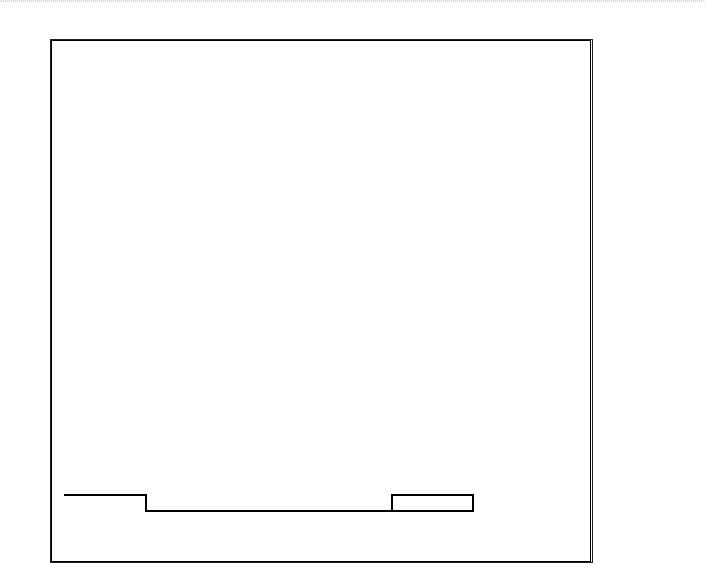
204
PART IV
■
SETTING YOUR INVESTMENT GOALS
It’s important to remember that this is the average expected
return on your investment, combining all four components of
return: cash flow, equity growth from loan reduction, equity
growth from appreciation, and tax benefits.
The underlined portion of the chart is an example of how to
use the chart to make a projection for yourself. Down the left
column (PV), locate the amount of the original investment of
$50,000. Move over one column to the right to locate the num-
ber of years of the plan (N), which in this case is 10. The next
columns are the future values (FV), based on the range of
returns, and (I), located at the top of the chart. For our exam-
ple, we are projecting an average return of 30 percent, so the
final value is $689,292. If you are starting with an amount that
isn’t on the chart, you can combine totals to estimate the return.
PRESENT VALUE/FUTURE VALUE TABLE
5
10
15
20
YEARS
$16,105.00
$25,937.00
$41,772.00
$67,275.00
I = 10%
$24,883.00
$61,917.00
$154,070.00
$383,376.00
I = 20%
$37,129.00
$137,858.00
$511,858.00
$1,900,494.00
I = 30%
$53,782.00
$289,255.00
$1,555,681.00
$8,366,822.00
I = 40%
$10,000.00
5
10
15
20
$32,210.00
$51,875.00
$83,545.00
$135,550.00
$49,766.00
$123,835.00
$308,140.00
$766,752.00
$74,259.00
$275,717.00
$1,023,717.00
$3,800,989.00
$107,565.00
$578,509.00
$3,111,361.00
$16,733,640.00
$20,000.00
5
10
15
20
$48,315.00
$77,812.00
$125,317.00
$201,825.00
$74,650.00
$185,752.00
$452,211.00
$1,150,128.00
$111,388.00
$413,575.00
$1,535,576.00
$5,701,483.00
$161,347.00
$867,764.00
$4,667,042.00
$25,100,476.00
$30,000.00
5
10
15
20
$64,420.00
$103,750.00
$167,090.00
$269,100.00
$99,533.00
$247,669.00
$616,281.00
$1,533,504.00
$148,517.00
$551,434.00
$2,047,434.00
$7,601,977.00
$215,130.00
$1,157,018.00
$6,222,722.00
$33,467,290.00
$40,000.00
5
10
15
20
$80,526.00
$129,687.00
$208,862.00
$336,375.00
$124,416.00
$309,587.00
$770,351.00
$1,916,880.00
$185,646.00
$689,292.00
$2,559,293.00
$9,502,471.00
$268,912.00
$1,446,273.00
$7,778,403.00
$50,000.00
PRESENT
VALUE

205
CHAPTER 9
■
BUILDING AN INVESTMENT PLAN
Now let’s look at how we use the table to determine what
financial goals you can logically expect to meet. Let’s say you have
$30,000 to invest and require a net worth of $1,500,000. Here,
you will have two variables to work with in order to meet this goal:
1. The rate of return on the investment (I)
2. The number of years invested (N)
If you look at the chart, you will notice that you can meet this
goal in 15 years at a 30 percent rate of return. These percentage
returns might seem high. Surprisingly, however, due to the power
of compound interest, they are not unrealistic. Remember,
Albert Einstein called compound interest the most powerful
force on Earth.
Let’s refresh your memory of the return from the example
property at 333 Richmond Street. The return components were
Cash flow $1,080
Equity growth (loan reduction) $300
Equity growth (appreciation) $11,000
Tax savings $1,039
Total $13,419
Therefore, our percentage return the first year was
$13,419
$30,000
= 44.7% return
Each year, your percentage rate of return will drop a bit from
the previous year because your equity in the property will increase
significantly faster than your total annual return. For this reason,
you should use a percentage return of the compound interest
Bright Idea
Most business calculators have the compound interest algorithm, which you
can use just in case you aren’t carrying this book around with you for the rest
of your life.

206
PART IV
■
SETTING YOUR INVESTMENT GOALS
column that is lower than the initial return you expect so as to off-
set this decrease. This compound interest number should be the
rate you can expect as an average over several years of ownership.
Now that you have a handle on how to use the compound
interest chart, let’s return to determining a general plan and
setting your future net worth goals. Most of us start with the
primary constraint of a
limited amount of capital
to work with. Knowing the
amount you plan to invest
initially, we will combine
the percentage return we
can expect with the num-
ber of years we are going to
invest to estimate our net
worth. We are, of course,
constrained by the maxi-
mum rate of leveraged return (compound interest) we can
achieve, but 20–30 percent should be a comfortable rate for the
average investor.
Using the formula, let’s review a couple of the cases we used
earlier in this chapter when we were discussing setting goals.
■
Case #1: You have $30,000 to $40,000 to invest and have
the goal of having $20,000 per year income in 10 years.
This requires approximately $200,000 in equity invested at
a 10 percent interest rate. Because this is your first invest-
ment, it would be wise to only invest $30,000 and keep the
other $10,000 for contingencies. You will see from the
table that this goal requires a sustained rate of return of
20–25 percent, which is in our comfortable rate range.
■
Case #2: You can borrow $10,000 to invest and want to
have a total equity of $500,000 in 15 years. Again, using
the table, we can see that this requires a rate of return of
“
I’ve learned that when
my rate of return drops
below 25 percent, it’s
as if a red light goes
off. It’s then that I
know it is time to refi-
nance or trade out of
that property.
”
—Mareeva S., investor

207
CHAPTER 9
■
BUILDING AN INVESTMENT PLAN
30 percent for the 15 years. This is at the top of our range,
so our young and ambitious investor will need to devote
the energy and sacrifice to attain this goal.
Now we are ready to pull all this work together and set your
general plan. There are three steps in this process:
1. First determine how much cash you have available to
invest comfortably. Always keep some cash in reserve.
You can always invest some of your reserves later as your
experience and confidence increases.
2. Next set the feasibility of your future net worth. You can
convert this to a cash flow at retirement by assuming it can
be invested at an 8–10 percent interest rate return.
3. Set the number of years you want for the overall plan.
Using the table, move down the column on the far left
(PV) to the amount nearest your available capital. Move
across this row until you come to a value at least as large as
your future net worth goal. The rate at the top of this col-
umn is the rate you will have to maintain to meet your
general plan goal. Remember, you can combine two lines
and add the totals to get a combination that equals your
capital investment if it isn’t on the chart.
Your general plan should look something like this:
I am going to invest $__________ for ____ years in real estate
investments at a sustained rate of return of ____ percent and
be worth $__________ at the end of the plan term.
Bright Idea
If time is not a particularly important factor in your plan, you would be well
advised to pick a conservative rate of return and extend the years of the plan
accordingly.

208
PART IV
■
SETTING YOUR INVESTMENT GOALS
Section 3: Establishing a detailed plan
In establishing a detailed investment plan, we will use the
$30,000 it took to buy 333 Richmond Street as our capital, and
that property will be the beginning investment of the plan. In
this instance, let’s say we have decided that $350,000 is the
target we are shooting for. Therefore, we will have the follow-
ing general investment plan:
We are going to invest $30,000 for 10 years in real estate
investments at a sustained rate of return of 30 percent and be
worth $350,000 at the end of the plan term.
It’s now time to crunch the numbers and make our detailed
plan. We (the authors) are fortunate to have a proprietary com-
puterized system for building investment plans that makes this
process much easier. For the benefit of those without access to
a computerized system, we will demonstrate how to do this man-
ually. It necessitates eliminating some of the fine-tuning a com-
puter is capable of doing, but it will give an adequate plan to
measure your progress against. We have included a copy of a
computerized investment plan of the four-unit at 333 Richmond
Street in Appendix D.
The next step in building your detailed plan is to establish
the variables to be used in making the estimates for the future
calculations of the plan. You will need the following:
■
The appreciation rate
■
Interest rates for first and second loans
■
Loan-to-value ratios
■
Income and expense increase rates
■
Buy and sell costs
■
Gross rent multipliers for various size properties
You will establish these variables after you have done your
research and with the help of your investment real estate agent.
Your agent’s input will be helpful because the prior history of

209
CHAPTER 9
■
BUILDING AN INVESTMENT PLAN
the market helps establish the future trends, and this will help
you set the rates for the future years of the plan. Using these
variables, you will be estimating the financial performance of
the properties that you will be acquiring in your detailed plan.
We will start the detailed plan with the specifics of 333
Richmond Street and then use our estimated rates for the pre-
ceding factors for the balance of the plan. The heart of the
detailed plan is the accompanying projection worksheet on the
next page. The horizontal lines are the year-by-year estimates
of the performance of the property we acquire. The vertical
columns are the financial parameters of the plan. The most
important columns are the last two columns—the return on
equity (ROE) and average return on equity (AVG ROE).
The return on equity is essentially the same concept as the
return on investment. In the first year of ownership, the return
on investment and the return on equity are the same because
your equity is your investment. In the second and succeeding
years, the equity is the initial investment plus the profit you
made during the year. This is why we call your investment in
subsequent years your “equity.” Recall that in our example, our
return on investment for the first year is
Cash flow $1,080
Equity growth (loan reduction) $300
Equity growth (appreciation) $11,000
Tax benefits $1,039
Total $13,419
Bright Idea
Consider seeking out an investment real estate agent who has access to a
computerized planning system. With a simple click of the mouse, any variable
in the equation can be changed to suit your needs.
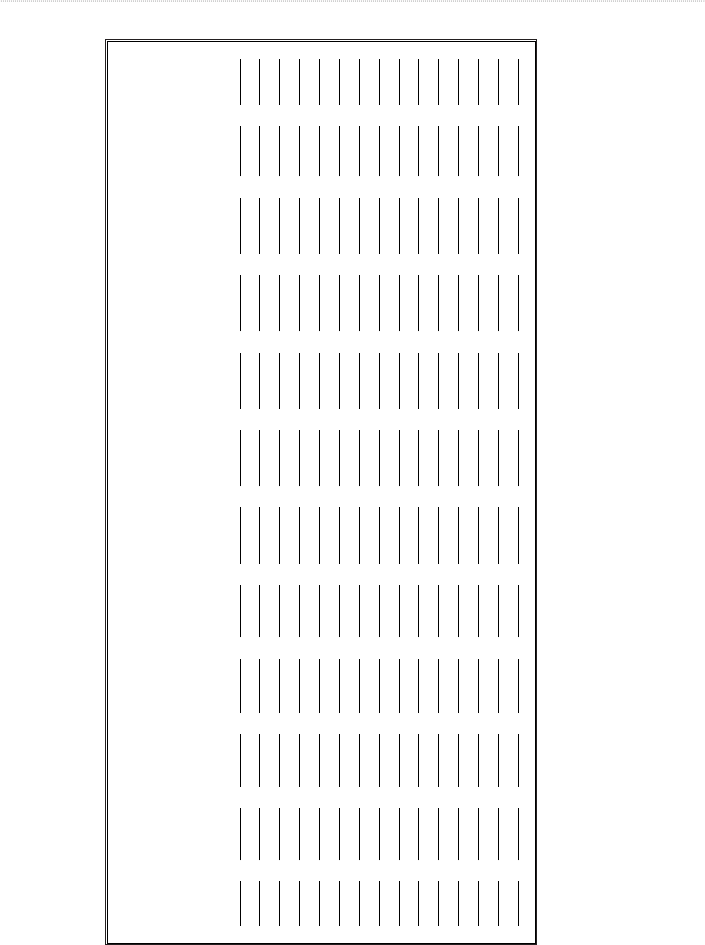
210
PART IV
■
SETTING YOUR INVESTMENT GOALS
YEAR
MARKET
VALUE
$
TOTAL
EQUITY
$
INCOME
__%INC
OPER'G
EXP'S
__%INC
TOTAL
INTEREST
$
AMORTI-
ZATION
__%DWN
CASH
FLOW
__%DWN
APPRE-
CIATION
__%M/V
_________ YEAR
TRANSACTIONAL POSITION
TAX
REBATE
__%DWN
ROE
%
AVG
ROE
%

211
CHAPTER 9
■
BUILDING AN INVESTMENT PLAN
The percentage return on investment (ROI) is
$13,419
$30,000
= 44.7% return
To make the estimates for the second year of the plan, we
will assume there are no changes in the cash flow, loan reduc-
tion, and tax savings. The appreciation will be adjusted because
the property appreciated $11,000 during the first year of own-
ership, as we used an appreciation rate of 5 percent. Our invest-
ment, now called our “equity,” is
Original investment $30,000
First year profit + $13,419
Equity second year $43,419
This calculation is repeated in successive years to find the
equity.
The appreciation for the second year is calculated as follows:
Starting value $220,000
Appreciation + $11,000
Value second year $231,000
Value second year $231,000
Multiplied by appreciation rate × .05
Second year appreciation $11,550
The profit the second year is now
Cash flow $1,080
Equity growth (loan reduction) $300
Equity growth (appreciation) $11,550
Tax benefits $1,039
Total $13,969

212
PART IV
■
SETTING YOUR INVESTMENT GOALS
The percentage return on equity the second year is
$13,969
$43,419
= 32.1%
The average return on equity (AVG ROE) is
44.7% + 32.1% ÷ 2 = 38.4%
The following worksheet shows the calculations through the
third year. You’ll see that in the third year the average return on
equity (AVG ROE) dropped from 38.4 percent to 34 percent.
No need to panic. It just means it’s getting time to do something
to increase the average return. We have two options: We can
either refinance or do a tax-deferred exchange. In this example,
we’ll do a tax-deferred exchange because it is the most common
way for investors to reposition their equity.
Now is when the experience of your investment real estate
agent will really help with your plan. This is because you will
have to make an estimate of what property will sell for and how
it will perform years into the future. If you are not fortunate
enough to have an agent who tracks value appreciation trends,
we suggest using “the world doesn’t change that much” method
of estimating probable future value.
Let’s assume you can make almost the same purchase in the
future as you can make today. We will eliminate the cash flow,
equity growth from loan reduction, and tax benefits from our
calculation as a way of evening up any errors and simplifying
our estimate. In some locations, the cash flow and equity growth
might be the most significant aspect of the return. In these
areas, you will need to keep these elements of return as part of
the planning process.
The next step is to estimate the costs of the transaction (sell-
ing and then trading via a 1031 exchange) and then build the
model of our new property for the plan. Here’s how: At the start
of year four, 333 Richmond Street is valued at $254,600, and you
have $71,907 in equity. Remember that this assumes you have
put aside all the cash flow and tax benefits from this investment.
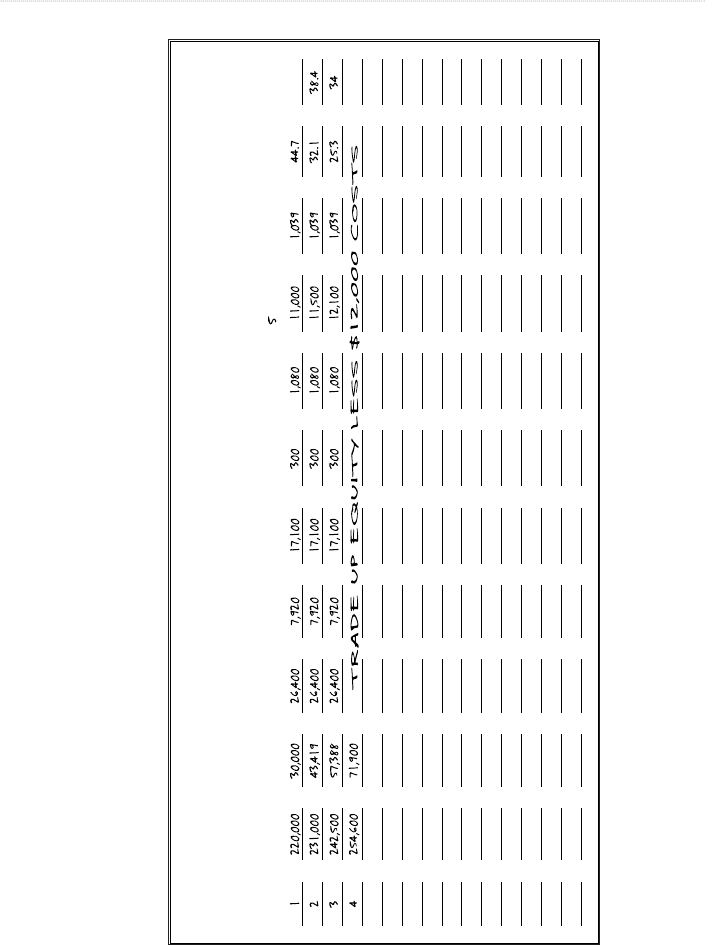
213
CHAPTER 9
■
BUILDING AN INVESTMENT PLAN
YEAR
MARKET
VALUE
$
TOTAL
EQUITY
$
INCOME
__%INC
OPER'G
EXP'S
__%INC
TOTAL
INTEREST
$
AMORTI-
ZATION
__%DWN
CASH
FLOW
__%DWN
APPRE-
CIATION
__%M/V
_________ YEAR
TRANSACTIONAL POSITION
TAX
REBATE
__%DWN
ROE
%
AVG
ROE
%

214
PART IV
■
SETTING YOUR INVESTMENT GOALS
The costs of doing this trade will be the sale expenses on the
existing property and the purchase costs on the new building.
To simplify this step, we will assume the selling expenses of
the existing property to be 5 percent of the sale price, and we
will round this off at $12,000 ($254,600 × .05 = $12,730). In
addition, we will assume that we get the seller of our new prop-
erty to pay our purchase costs. This technique usually can be
accomplished in the negotiation process by adding the costs to
your final offer. The benefit to you is that you get to finance
these expenses in the price you pay for the building. The equity
left for reinvestment now is
Equity at start of fourth year $71,907
Costs of transaction –$12,000
Equity for reinvestment (rounded) $59,900
For the next step in our plan, we will invest these proceeds
in one or two new properties using a 1031 tax-deferred
exchange. To calculate the correct size of the next property that
will fit in with our plan, we need to use the following formula:
Equity to invest
% of down payment
= % value of new property
Using our available funds, the value of the next property can
be calculated by plugging in these numbers:
$59,900
= $599,000
.10
Bright Idea
When using a manual system for planning, don’t hesitate to round off the
numbers to make your calculating easier. This plan is just an estimate of
where you are going, and the rounded-off dollars will not make a significant
difference in the final numbers.

215
CHAPTER 9
■
BUILDING AN INVESTMENT PLAN
As you can see, we will need to trade into a building worth
$599,000 in order to keep our plan alive.
The chart on the following page has the values added for the
trade in year four (the trade we just worked together) and the
trade that was needed in year seven. The trade was needed in
year seven because the average return on equity (AVG ROE)
again fell into the low 30 percent range. Through trial and
error, we determined that one more year of ownership would
make the average less than the target 30 percent. Note that the
further into the future your plan gets, the tougher it will
become to estimate the smaller components of return. For that
reason, when planning for future trades, you can eliminate any
estimates for income, operating expenses, total interest, amorti-
zation, cash flow, and tax benefits.
Section 4: Follow-up and goal review
Just as important as preparing your investment plan is manag-
ing the plan to its successful completion. This involves, among
other things, monitoring the progress of the plan to make sure
you stay on plan at both the general and detailed levels.
The general review of your plan starts with your goals for
your family and how they affect your investments. As things
change in your personal life, you sometimes need to make alter-
ations in your financial commitments. A job change might take
away some of the time you had to dedicate to the properties. A
bonus at work might now allow you to buy another property,
which will get you to your goal sooner or will raise the amount
of your final net worth. The market might change, which will
affect what you buy or sell.
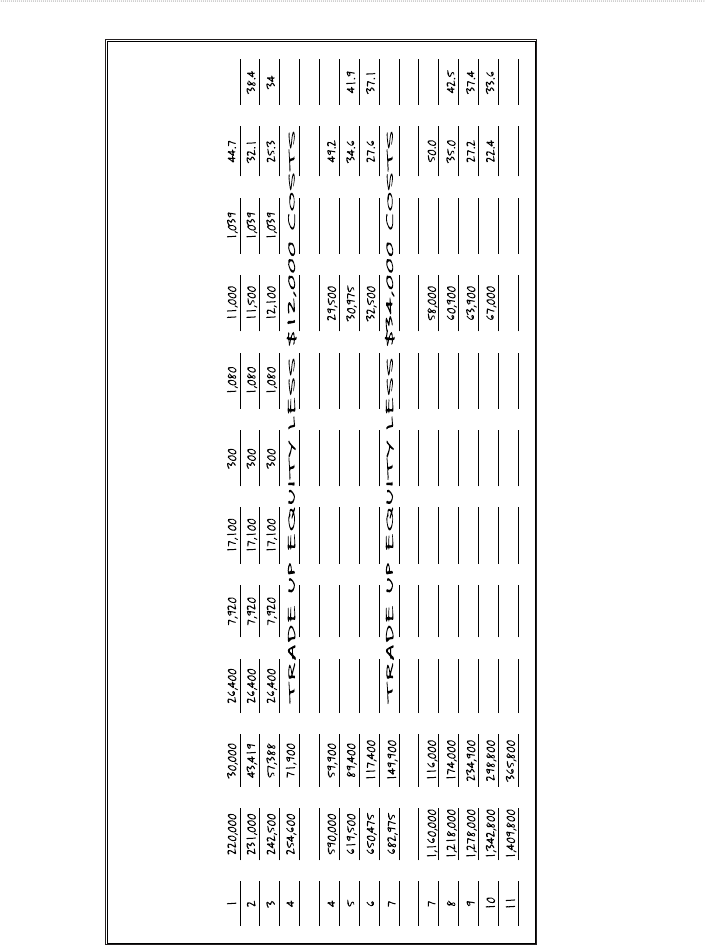
216
PART IV
■
SETTING YOUR INVESTMENT GOALS
YEAR
MARKET
VALUE
$
TOTAL
EQUITY
$
INCOME
__%INC
OPER'G
EXP'S
__%INC
TOTAL
INTEREST
$
AMORTI-
ZATION
__%DWN
CASH
FLOW
__%DWN
APPRE-
CIATION
__%M/V
_________ YEAR
TRANSACTIONAL POSITION
TAX
REBATE
__%DWN
ROE
%
AVG
ROE
%

217
CHAPTER 9
■
BUILDING AN INVESTMENT PLAN
As for reviewing your detailed plan, this book started out by
recommending that you gain knowledge about the market and
property. The secret of a successful plan is to never stop that
education process. Monitoring your plan at a detailed level
requires that you stay in touch with the market. It is easy to get
involved in the day-to-day operation of your property and forget
to look at what is happening around you. In the review section
of your planning binder, you should keep a blank copy of the
projection worksheet previously shown in this chapter. At the
end of each year, make it a point to meet with your investment
real estate agent and do an estimate of value based on the cur-
rent market conditions. Discuss how the market is doing and
where it looks like it is going in the next 12 months. Use the
new value and the actual performance figures from the year’s
operation of your property to complete the next line of your
worksheet.
Now compare what really happened in that year with the
plan you laid out 12 months earlier. How did you do? If there
are any significant changes—good or bad—go back, revise your
plan, and get ready for next year. This will force you to stay
involved in reaching your final goals. There is no doubt that
many changes will occur over the life of a 10–15 year plan. Some
changes will be positive; some will be negative. The secret is to
take full advantage of the positives and take the necessary steps
to minimize the negatives. This requires staying informed by
monitoring what is really happening.
Just the facts
■
A written plan with stated goals is critical to successful
investing.
■
Installment sales are a great method to help you achieve a
desired net worth.

218
PART IV
■
SETTING YOUR INVESTMENT GOALS
■
The compound interest formula demonstrates how your
equity will rapidly multiply in real estate.
■
Your detailed plan will give you a year-by-year projection of
where you are headed.
■
It’s advisable to revise your plan as necessary along the way.

Chapter 10
219
GET THE SCOOP ON...
The tax laws and how they affect you as an
investor
■
The two types of expenses and the
tax deductions you can take on them
■
How the
depreciation allowance works
■
Capital gains tax
and how to calculate it accurately
■
The three
types of IRS 1031 tax-deferred exchanges
■
Installment sales and refinancing options
Planning for the
Tax Man
A
s the cost of government increases, the bur-
den of individual taxation increases propor-
tionately. Built into the framework of federal,
state, and local tax laws, however, are certain tech-
niques whereby investors can legally defer their taxes
due for an indefinite period of time. To take advan-
tage of these techniques, you need to have an under-
standing of certain taxation rules.
There is no beating around the bush; these rules
can be complicated. To that end, we suggest you seek
the advice of your accountant, tax attorney, or other
tax expert from the outset. You do need to have a
basic understanding yourself, however, because it is
not practical to have professionals review every trans-
action under consideration.
There are two broad areas in which knowledge of
taxation is important. The first is during the owner-
ship and management of the property. The second is
upon the sale of the property. In this chapter we will

220
PART IV
■
SETTING YOUR INVESTMENT GOALS
examine both of these areas in great detail, making them easy
to understand and almost enjoyable.
Deductions, deductions, and
more deductions
As a real estate investor, a number of tax benefits are now yours
for the asking. They are
1. The deductibility of your purchase costs
2. The deductibility of your operating expenses
3. The corresponding annual depreciation allowance that
Uncle Sam provides
Purchase costs
As a general rule, most of the costs incurred at the time of your
purchase are tax deductible in the year of the purchase. The fol-
lowing list covers some of the most common:
■
Prepaid interest on the loan
■
Fire and liability insurance
■
Property tax prorations
■
Escrow fees
■
Title insurance costs
■
Miscellaneous fees from the lender and escrow company
You’ll notice that loan fees and points are not in the pre-
ceding list. The rule is that any money paid to secure a new loan
for income property must be written off over the period of the
loan. If the loan for our example property at 333 Richmond
Street required a loan fee of 1.5 percent and the loan was a 30-
year loan, the yearly deduction would be calculated as follows:
Loan amount $190,000
Loan fee rate × .015
Fee (points) $2,850

221
CHAPTER 10
■
PLANNING FOR THE TAX MAN
To calculate how much of a deduction you could take, you
then would divide the loan fee by the term:
Loan fee $2,850
= $95 per year
30-year term
In the past, points could be written off in the year of pur-
chase, but after years of abuse, this loophole was closed.
Operating expenses
In addition to the purchase costs, all the expenses you incur in
the operation of the property also are deductible. The biggest
problem in determining deductibility is distinguishing between
expense items and capital items. As a general rule, if you
incurred the expense by fixing a problem in your building or
merely by maintaining the value of the property, it should be
considered an expense item. These normal operating expenses
are deductible in the year you spend the money. Examples of
these include
■
Utilities
■
Interest on loans
■
Insurance
■
Taxes
■
Gardening and cleaning expenses
■
License and city fees
■
Roofing, plumbing, electrical, and miscellaneous repairs
■
Management fees
■
Advertising and rental commissions
Watch Out!
Be sure to check with your tax expert each year to see if there have been any
changes in the tax laws. It would be a shame to miss out on opportunities for
write-offs because you were uninformed.

222
PART IV
■
SETTING YOUR INVESTMENT GOALS
■
Mileage, postage, and phone expenses associated with the
operation of the property
■
Any other noncapital expenses
On the other hand, if the improvement increases the value
or completely replaces a component of the property, it should
be considered a capital expenditure. With capital expenses, the
cost needs to be depreciated rather than expensed in the year
the money is spent. The tax code says that capital items must be
written off over the period of time they contribute to the use-
fulness of the property. Capital expenses include
■
Carpeting
■
Drapes or window coverings
■
New roof, plumbing, or electrical systems
■
Building additions
■
Major appliances or furnishings
■
Major repairs—a new driveway, replacing stucco or siding,
replacing landscaping, and so on
It’s important to note that the principal paid each month on
your loan payment is not a deductible expense. It actually is one
of those returns on your investment that you must pay tax on,
but you never see the money because you have to give it to the
bank to pay down your loan. If you have a positive-cash-flow
property, you are paying off your loan with the income you are
receiving from the tenants. The rule says that you cannot
deduct the portion of your payment that goes toward paying off
the loan. Note: You don’t need to worry about calculating the
principal. Your lender will send you a statement at the end of
each year showing you how much of your payments went toward
principal and how much went toward interest.
The depreciation allowance
As the owner of your own real estate business, you now are able
to deduct a certain amount of expenses for the loss of value on

223
CHAPTER 10
■
PLANNING FOR THE TAX MAN
the improvements (improvements = the structures on the land)
of your property—things such as wear and tear from aging.
Remember that, because the dirt does not depreciate, this
depreciation expense is only for the physical structure of the
building and other improvements, not the land.
The most important point to remember is that the deprecia-
tion schedule you originally calculate will be with you as long as
you own that property. If you sell the property and pay your taxes,
you can start fresh with the next property. If you trade via a 1031
exchange, however, that basis and its schedule stays with you.
As you learned in Chapter 3, “Elements of Return,” the most
important component of the depreciation schedule is the land-
to-improvement ratio. (See the section, “Inflationary apprecia-
tion,” also in Chapter 3.) For any improved property, part of the
value is for the land and part is for the improvements. Because
you can’t depreciate the land, a property that has a high ratio of
improvements has a high depreciation deduction. To set your
ratio, you must make sure to use an accepted method. If you
don’t, the IRS might disallow your schedule, force you to set a
new one, and probably end up sending you a bill for additional
taxes and penalties.
Limitations on deductions
To calculate the tax benefits from a property, you need to
understand the rule changes adopted from the Tax Reform Act
of 1986 (TRA ’86). These new rules affected the amount of
depreciation that property owners can take per year, and they
also defined investors into different classes depending on the
Moneysaver
Keep detailed records of each expense related to your property. This way, you
will be able to take advantage of every single deduction to which you are
legally entitled. We would rather see you keep your money than give it to
Uncle Sam.

224
PART IV
■
SETTING YOUR INVESTMENT GOALS
amount of their involvement in their properties. The new tax
code recognizes two classes of investors: passive investors and
active investors.
Passive investors
Generally, you are a passive investor if you buy property as a lim-
ited partner or with a group of more than 10 partners. As a pas-
sive investor, you can use the depreciation deduction to shelter
any profit from the property. It’s like having a savings account
of tax benefits that can be drawn upon to cover future profits.
Active investors
You probably are an active investor if you purchased your prop-
erty alone or with a couple of partners and are active in the
management of the building. The IRS calls this “materially par-
ticipating” in the management. This means that you have a say
in how it runs, how the bills are paid, and how much you are
charging for rent. You might not actually run the property if you
have hired a company to do this, but the key is that you have
the ultimate responsibility for it. There are two classes of active
investors:
1. Those who consider real estate investing and management
as their primary career
2. Those who invest in real estate as a secondary career
Rules for active and passive investors
If you are “in the business” of real estate and it is your primary
career, you have no restrictions whatsoever on the dollar
amount of losses you can claim against earnings.
Bright Idea
If your spouse doesn’t work outside the home, he or she can help you qualify
for unlimited deductions by obtaining a real estate license and handling the
management of your properties. This may qualify your spouse as a full-time
property investor.

225
CHAPTER 10
■
PLANNING FOR THE TAX MAN
Most people, however, fall into the category in which real
estate is a secondary career. If this describes you, your real estate
losses are limited to $25,000. If your adjusted gross income
before real estate deductions is $50,000, for example, and your
losses from property are $30,000, you can only deduct $25,000
of the $30,000. You don’t lose the remaining $5,000. Instead, it
goes into that tax shelter bank account previously mentioned.
What this deduction means is that, instead of paying tax on
$50,000 of income, you only pay tax on $25,000. The tax you
save is profit and therefore is included in the overall return
from your investment.
The earnings limitation
A second code change from the Tax Reform Act of 1986 limits
your ability to use the losses from your real estate against the
earnings from your regular career. This limit occurs when your
earnings exceed $100,000. For every $2 you earn over $100,000,
you lose $1 of deduction. This means that, at $150,000, you
have no deduction against your income. Remember that these
are not lost; they’re just saved up for future use.
Calculating capital gain
Capital gains taxes are taxes on the profits you make when you
sell your property. To understand capital gains and how to cal-
culate them, you first need to be familiar with some new terms:
■
Sale price: The price for which you sell the property
■
Adjusted sale price: The net price after deducting sale
costs
■
Cost basis: The original purchase price plus capital
expenses
■
Adjusted cost basis: The cost base minus depreciation
To estimate your capital gain, you would complete the fol-
lowing calculation:

226
PART IV
■
SETTING YOUR INVESTMENT GOALS
Sale price
– Sale costs
Adjusted sale price
Cost base
+ Capital expenses
– Depreciation
Adjusted cost base
Adjusted sale price
– Adjusted cost base
Capital gain
To illustrate this formula, let’s use the Richmond Street
property that we bought for $220,000. We’ve depreciated the
property for five years at $5,090 per year for a total depreciation
of $25,450 ($5,090 × 5 = $25,450). We also just put on a new roof
for $5,000 (a capital expense). We can sell it for $320,000, and
our total expense to sell will be $20,000.
Knowing this information, we can calculate the capital gain
as follows:
Sale price $320,000
Sale costs – $20,000
Adjusted sale price $300,000
Moneysaver
Before you decide to use one of the tax-deferral methods, you first should
determine your capital gain and what the tax implications are. You might
actually be better off in the long run if you pay your tax now and start fresh
with a new property.

227
CHAPTER 10
■
PLANNING FOR THE TAX MAN
Cost base $220,000
Plus capital expenses +$5,000
Less depreciation – $25,450
Adjusted cost base $199,550
Adjusted sale price $300,000
Adjusted cost base –$199,550
Capital gain $100,450
As you can see, the capital gain of $100,450 is a sizable
chunk of money to have to pay tax on. Instead of giving it to
Uncle Sam, let’s learn about some methods of deferring or
reducing these taxes.
The 1031 exchange
As far as saving on taxes is concerned, the IRS 1031 tax-deferred
exchange is probably the single most important technique avail-
able to the real estate investor. An exchange enables you to pyra-
mid your equity while deferring the payment of taxes. In effect,
Uncle Sam becomes your partner by letting you use the taxes
you owe on your capital gains as a down payment on the build-
ings you trade into. When you trade into larger properties, the
government figures that, in turn, you will make more profit. By
making more profit, you eventually will owe more tax. It’s a win-
win situation.
You must be aware of the three rules to qualify for a tax-
deferred exchange:
1. You need to trade for like-kind property. Like-kind prop-
erty in this instance would be a property you are purchas-
ing for investment purposes. You can’t trade a duplex
you’ve been renting out for a new dream house. This is
because the duplex is income-producing property and
the dream house would be a primary residence. You can,
however, trade the duplex for an office building or a

228
PART IV
■
SETTING YOUR INVESTMENT GOALS
strip mall. The idea is to trade income-producing property
for other income-producing property.
2. The property should be of equal or greater value than the
existing property, hence the phrase “trading up.”
3. You should not receive cash, mortgage relief, or “boot” of
any kind in the transaction.
Note: In an exchange, “boot” is the term used to describe
something of value given in addition to the like-kind property,
as in “this acre and cash to boot.”
Three categories of exchanges
Most 1031 tax-deferred exchanges fall into one of three
categories:
1. The straight exchange
2. The three-party exchange
3. The delayed exchange
The straight exchange
The straight exchange occurs when two parties get together and
simply trade properties. At the end of the transaction, each
party goes his separate way. This scenario doesn’t happen very
often because most investment property owners either trade up
or just get out altogether. By trading straight across the board,
one party probably ends up with a lesser property, which fails to
meet the requirement of trading into a property of equal or
greater value.
The three-party exchange
The most common type of tax-deferred exchange is the three-
party exchange. As its name suggests, three different parties are
involved in the process. One of the key elements of doing a tax-
deferred exchange is that the party trading up never receives

229
CHAPTER 10
■
PLANNING FOR THE TAX MAN
the equity in the property being traded. For that reason, the
party cannot just sell the property, collect the proceeds, and go
out and buy a larger property. Because most people with bigger
properties don’t want to trade into anything smaller, these
three-party exchanges have evolved so that each party can get
what it wants and stay within the framework of the law. Here’s
an example of how one might work:
Facts:
■
Party A owns a four-unit building and wants to trade into
an eight-unit building.
■
Party B owns an eight-unit building and wants to sell, pay
the taxes due, and retire to Florida.
■
Party C is just getting started investing and wants to buy
the four-unit building of Party A.
Solution: Parties A and B enter into an exchange escrow
in which Party A gets the eight unit and Party B gets title
to the four unit. In a separate escrow, Party B agrees to
accommodate the exchange and deed the four-unit
building to Party C immediately after he acquires title
from Party A. Both of these escrows contain contingen-
cies stating that they must close concurrently. This means
that if Party C can’t buy the four unit for some reason,
Party B will not have to take Party A’s four unit in trade
for his eight unit.
Result: At the close, Party C owns the four unit he
wanted, Party A owns the eight unit he wanted, and Party
B is sipping margaritas at his beach house in Florida.
Recap: In case you’re wondering, Party B doesn’t pay any
tax by taking the title to the four unit because it is sold
for the same price at which it was taken in trade. This is
what is called a non-taxable event.

230
PART IV
■
SETTING YOUR INVESTMENT GOALS
The delayed exchange
The final category of exchange is the delayed or Starker
exchange. Starker refers to one of the principles in T. J. Starker
v. U.S., a case in the Ninth Circuit Court of Appeals. In this case,
Starker exchanged some timber acreage for 11 different parcels
of property owned by Crown Zellerbach. As was agreed between
the parties, Starker selected the properties and they were trans-
ferred to him by way of the exchange. This was called a delayed
exchange because the transfer spanned more than two years.
Because of the two-year delay, the IRS questioned whether
this was an exchange at all and took Starker to court.
Fortunately, for all investors, the Ninth Circuit Court approved
of the process, and this has since been codified nationally for
use by all U.S. investors. The Starker court held that
1. A simultaneous transfer of title was not required.
2. IRS Section 1031 should be broadly interpreted and
applied. Treasury regulations under IRC 1001 to the
contrary were deemed invalid.
Party B
owns an 8-unit
building
(and wants to sell
and then
retire)
Party C
wants to get
started investing
by obtaining
Party A's 4-unit
building
Party A owns
a 4-unit building
(and wants to trade
into Party B's
8-unit
building)
"A" Deeds 4-unit building to "B"
"B" Deeds 8-unit building to "A"
"B" Deeds 4-unit building to "C"
"
C
"
u
ses
C
a
s
h
&
L
oa
n
to bu
y4-
uni
tbuild
i
n
g

231
CHAPTER 10
■
PLANNING FOR THE TAX MAN
In an effort to update the rules concerning exchanges in
light of the new rulings, a number of additional changes were
made to IRC 1031. These changes included
1. Partnership interests are no longer of “like kind” for
exchange purposes.
2. To identify the potential replacement properties, the
taxpayer much complete a written 1031 Property
Identification Statement by midnight on the 45th day after
escrow closes. More than one property may be identified
with the following restrictions:
■
Three or less properties without limit on their value or
on the percentage of the identified properties, which
must actually be acquired
■
Four or more properties provided the combined fair
market value of all the properties does not exceed 200
percent of the price of the property sold
■
The purchase of 95 percent of the total value of all replace-
ment properties identified should the total values of four
or more properties exceed the 200 percent limitation
3. The taxpayer must receive the identified property within
the earlier of 180 days after the date he transfers his prop-
erty in the exchange or the due date of his tax return for
the year of the exchange including extensions.
To accomplish a delayed exchange, an accommodator is used.
An accommodator is an unrelated party (or entity) that holds the
exchange proceeds. These proceeds are called “exchange valua-
tion credits,” or “EVCs.” The EVCs are contract rights allowing
the investor to use the net proceeds being held by the 1031
accommodator to purchase a replacement property. The investor
will find the replacement property, and the accommodator will
fund the purchase with the money that the EVCs represent. The
accommodator can even take the title to the property that the
investor trades into in order to complete the exchange.

232
PART IV
■
SETTING YOUR INVESTMENT GOALS
In choosing an accommodator, make sure you check their
credentials, business history, and insurance coverage. Remember
that the accommodator will be getting all your funds from the
sale of your property. He or she holds it for you until it’s time to
purchase the replacement property. Be sure to choose your
accommodator wisely. Over the years, some unscrupulous ones
have been known to close up shop, pack their bags, and get the
heck out of Dodge—taking the trust funds with them.
Since the first edition of this book was published in 1999, we
have seen a surge in property values. This surge has created a
renewed interest in buying property, and—conversely—a
marked decrease in the inventory of properties to purchase in
most areas. This increase in prices has produced more capital
gain, which most property owners would like to shelter by using
the benefits of the 1031 exchange.
As you can well imagine, more profit and less property, com-
bined with a 45-day window in which to identify potential up-
legs have created some tense moments for investors who have
closed escrow without properties to trade into. It’s important to
note that these delayed exchanges offer many advantages over
the straight or three-party exchanges, but there are also addi-
tional risks involved. If you close your delayed-exchange escrow
181 days after your down-leg property closed, you will owe the
capital gains tax due and will probably not have the cash to pay
for it.
There are some additional complicated rules associated with
completing a successful delayed exchange. To that end, make
it a point to consult with your tax advisor before making any
Watch Out!
Before you do a 1031 delayed exchange, you should be very sure of your next
purchase. If you miss the 45-day or 180-day deadlines imposed by the IRS,
you will have to pay the capital gains tax on the sale.

233
CHAPTER 10
■
PLANNING FOR THE TAX MAN
decisions in this regard. The net result of an ill-informed deci-
sion could be costly.
Exchanging versus paying your taxes
and buying another
An additional problem created when you do a tax-deferred
exchange is that you limit the depreciation deduction on your
new property. Part of the exchange process is that you carry
forward your profit and your basis from the traded property.
Whatever the depreciation schedule was on the old property
now becomes the schedule for that part of the new property.
We’ll illustrate this using our example property. Assume that
333 Richmond Street can be sold for an adjusted sale price of
$300,000. We will net $80,000 from our sale, and we’ll use that
$80,000 as a 15-percent down payment (with a seller carrying
another 10 percent) on a new property worth $550,000. This
new property has a land-to-improvement ratio of 80 percent.
The depreciation deduction we will be carrying forward is
$5,090 per year. This means that, if we started fresh, the depre-
ciation deduction on the new property would be
Price of the property $550,000
Percentage of improvements × .80
Depreciable improvements $440,000
In order to find the depreciation deduction, you do the fol-
lowing calculation:
Depreciable improvements $440,000
= $16,000 depreciation deduction
Useful life 27.5 years
Watch Out!
None of these tax-deferral methods get you out of paying your taxes. Instead,
these techniques simply help you put the taxes off until sometime in the
future.

* * * Free Preview End * * *
Purchase Required To Gain Total Access
Visit www.landlordleaseforms.com To Purchase Landlord Lease Forms Package